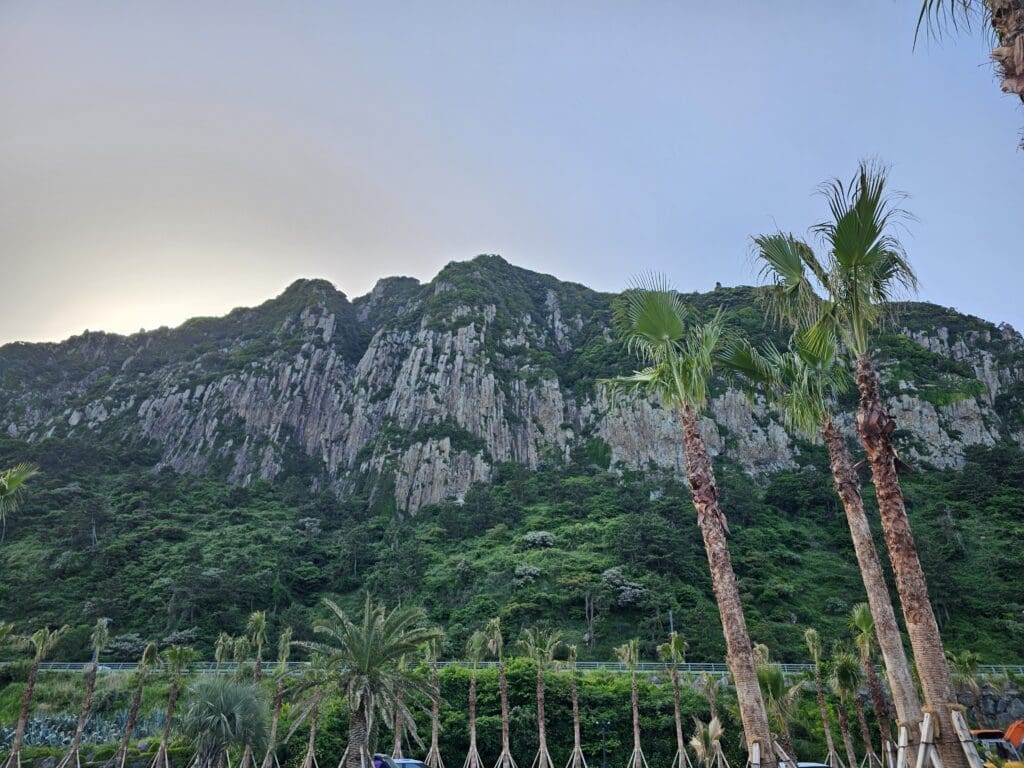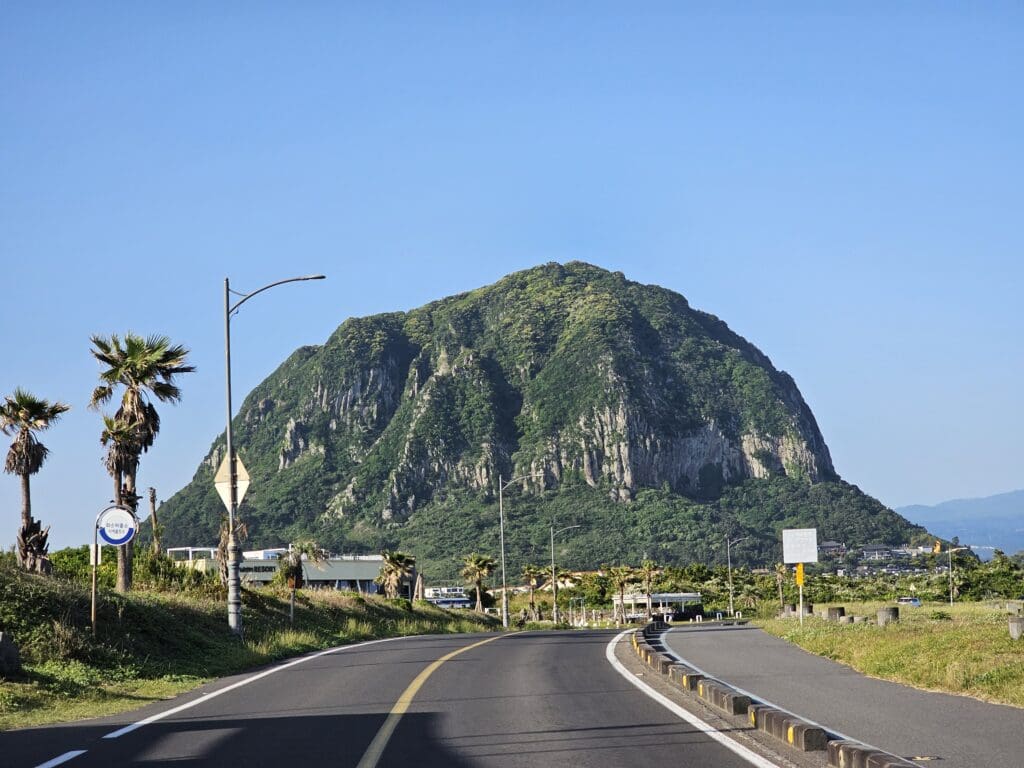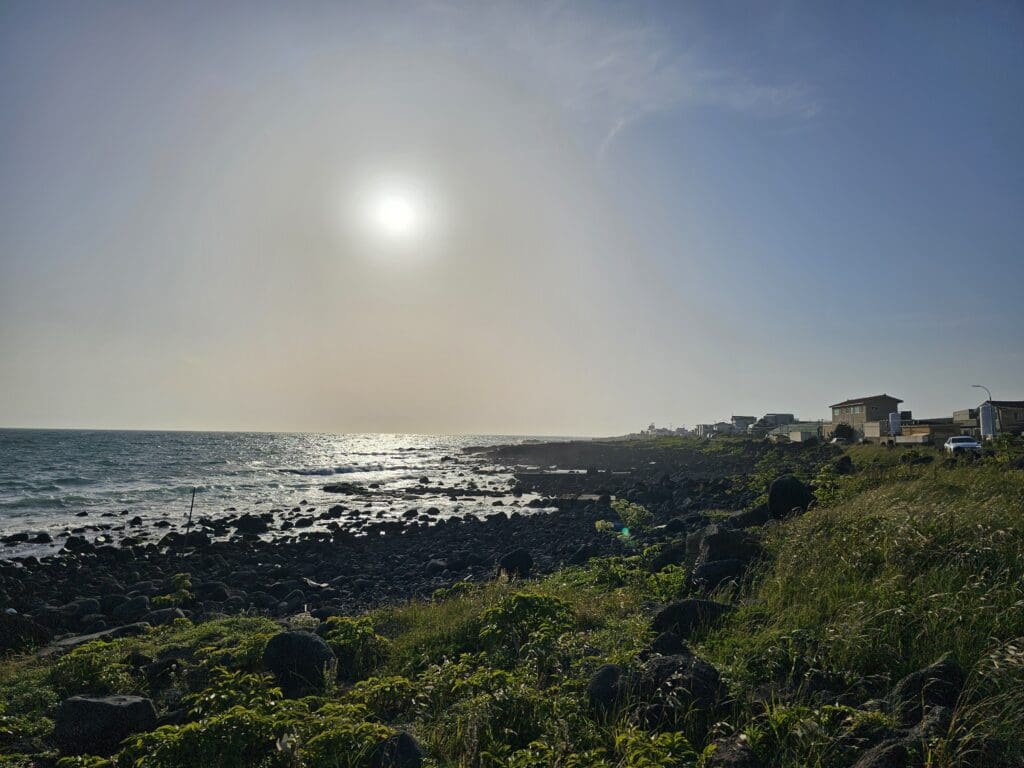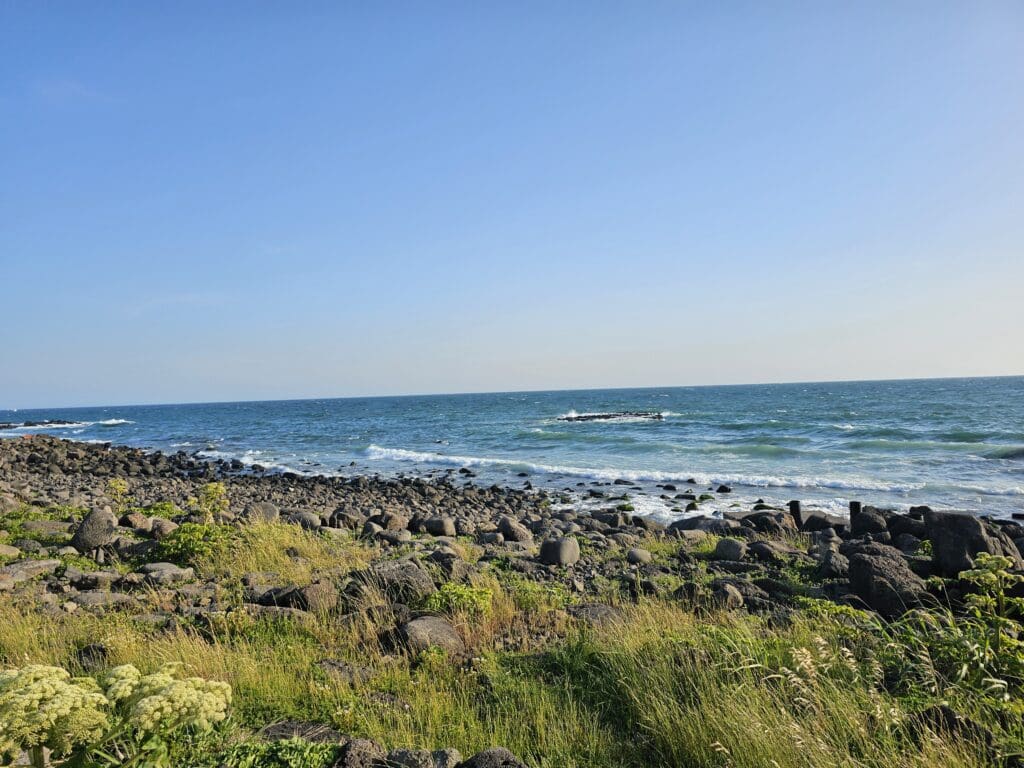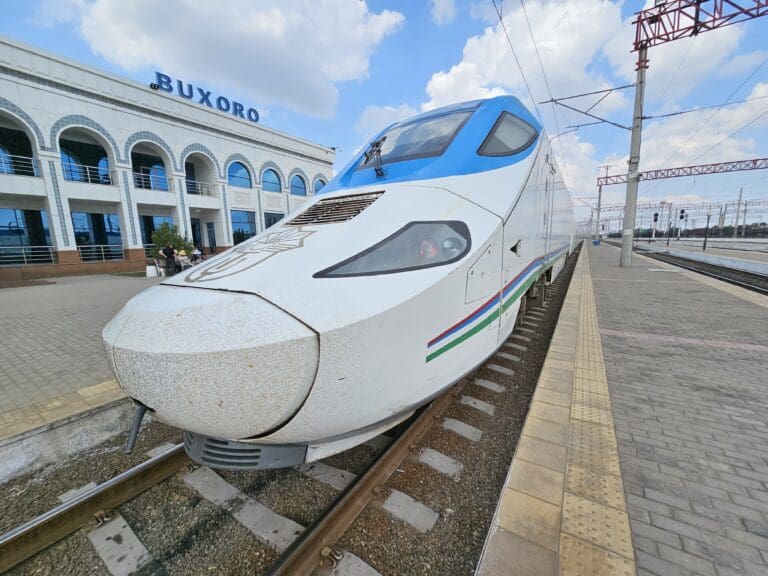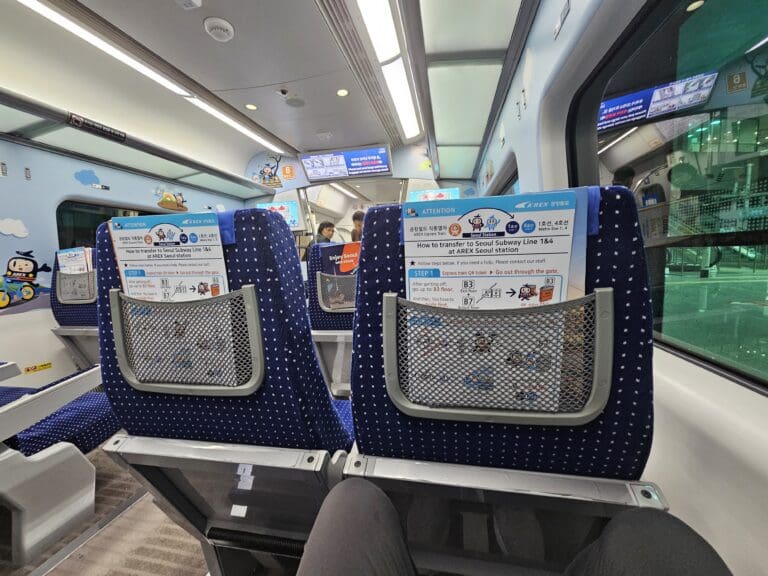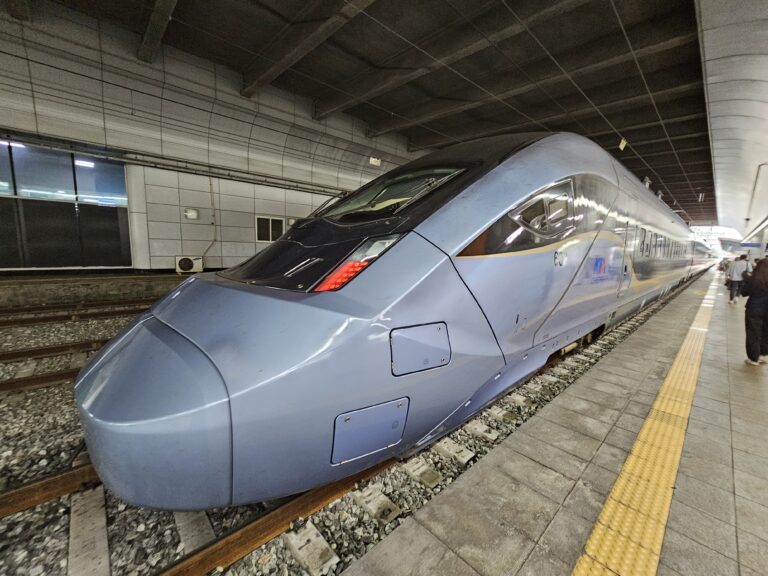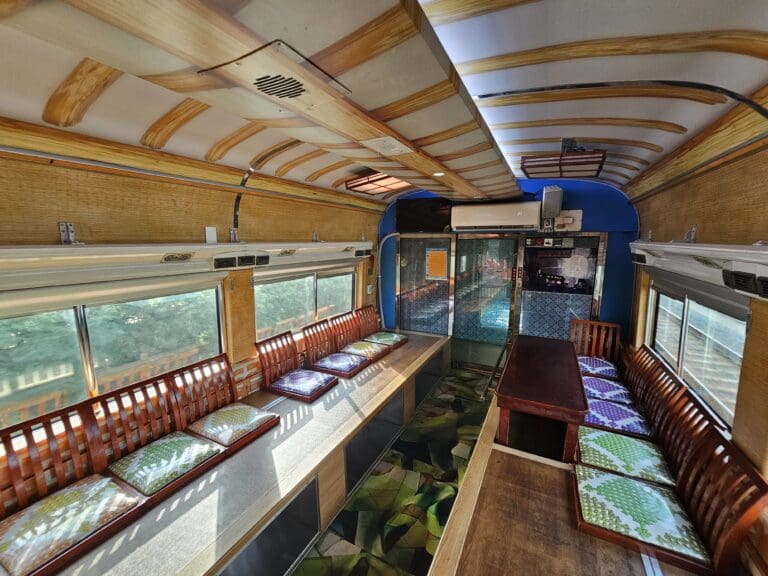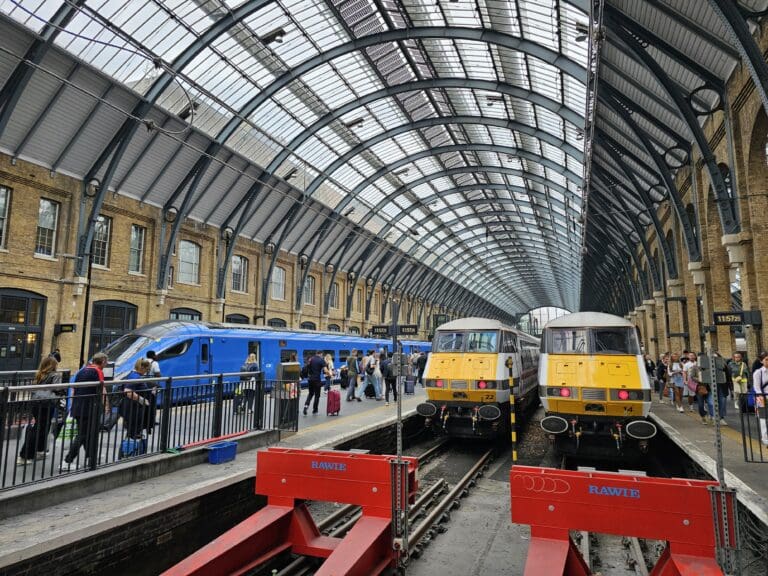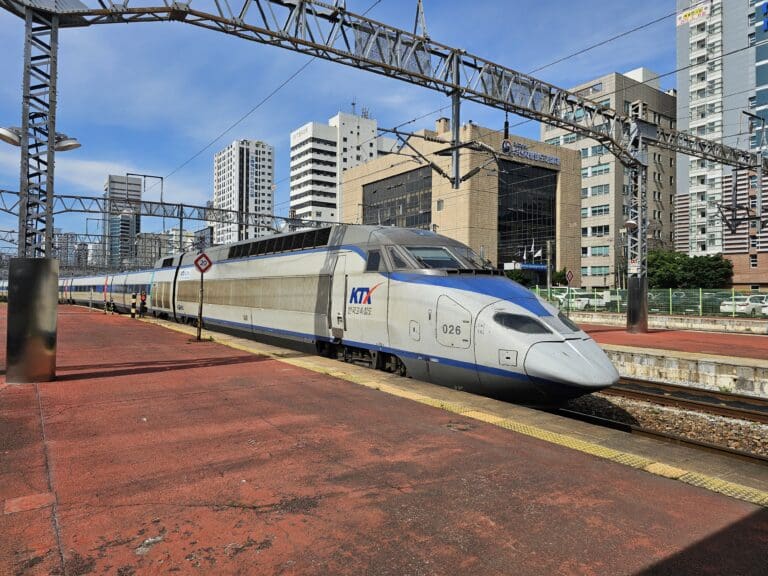How To Spend 4 Days in Jeju: A Suggested Itinerary
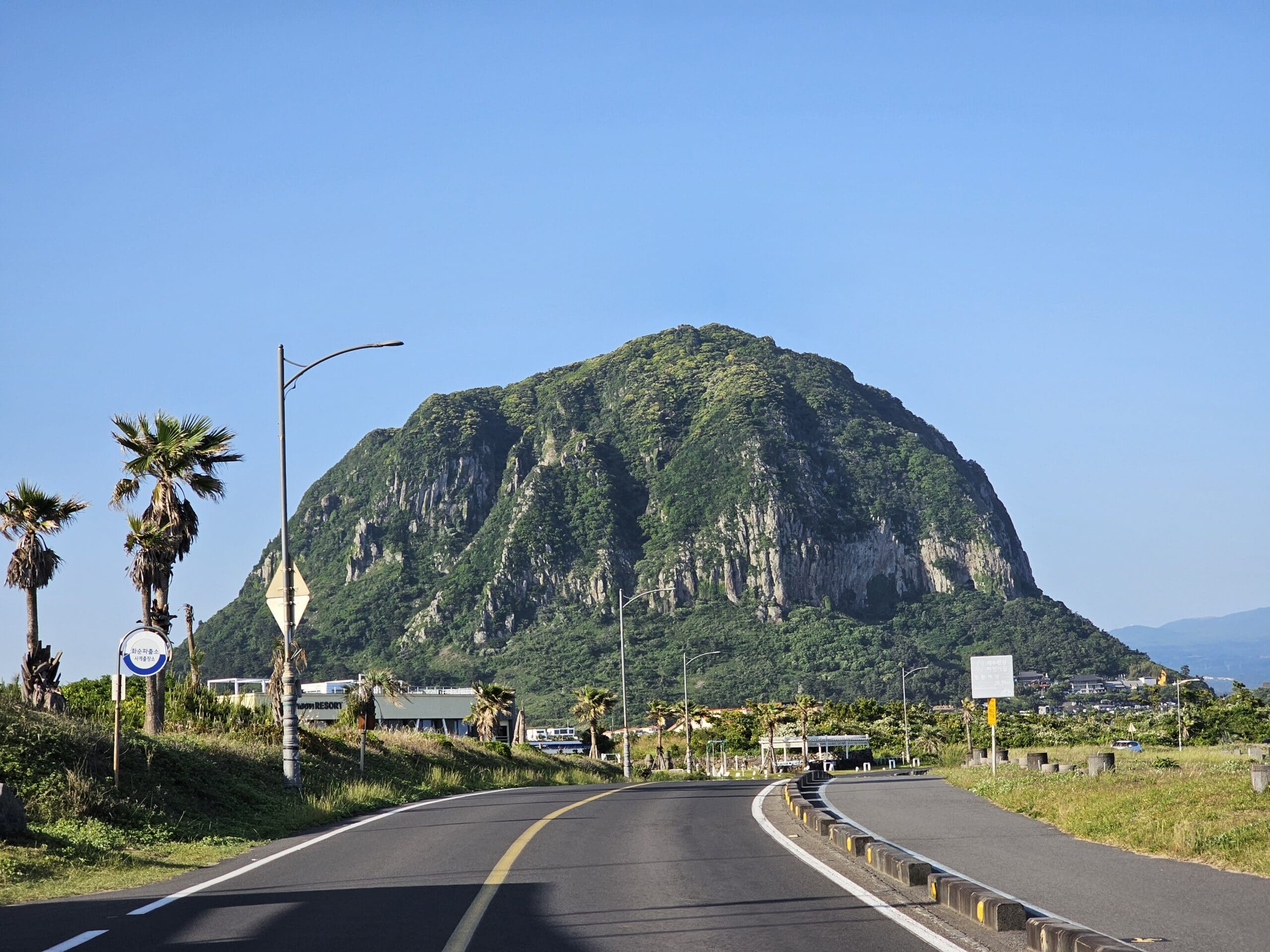
Jeju Island holds a special place in my heart. There’s a certain charm to the island that consistently draws me back, and on my recent trip, I had the pleasure of exploring some of its top sights. In this post, I’ll share my itinerary and highlights from this adventure.
Located just over 80 kilometers south of the Korean mainland, Jeju Island is Korea’s largest, covering 1,826 square kilometers. With a population of around 678,000 residents, it’s known for its natural beauty, including Mount Halla, South Korea’s tallest peak at 6,388 feet, and its 380 smaller extinct volcanoes, or oreum. Unlike the mainland, Jeju rarely sees snow, with temperatures often staying above freezing during the winter. This mild climate allows the island to grow unique fruits not typically grown elsewhere in Korea, like the famous hallabong, a type of satsuma that’s become a beloved local specialty. If you visit, you’ll be sure to find hallabong-based products and souvenirs everywhere!
As an island, Jeju is blessed with sandy beaches nestled between its black volcanic shores. With its palm trees and stunning coastline, Jeju is often called the “Hawaii of Korea.” Although I’ve never been to Hawaii myself, I’d say the comparison seems to be fitting!
Jeju was once the quintessential honeymoon destination for Korean couples, but with the rise in Koreans heading abroad, its reputation as the go-to romantic getaway has evolved. Nevertheless, it remains a favorite quick escape for many Koreans and has gained significant popularity with tourists from China, who can visit Jeju without a Korean visa.
Getting to Jeju
With its popularity, reaching Jeju is a breeze. The flight between Seoul’s Gimpo Airport and Jeju International Airport is the busiest air route in the world, with nonstop flights running throughout the day. If you book in advance, it’s not unusual to find one-way fares for as low as 15,000 won. In addition to flights from the mainland, Jeju is also served by direct international flights from China, Hong Kong, Japan, Mongolia, Singapore and Taiwan.
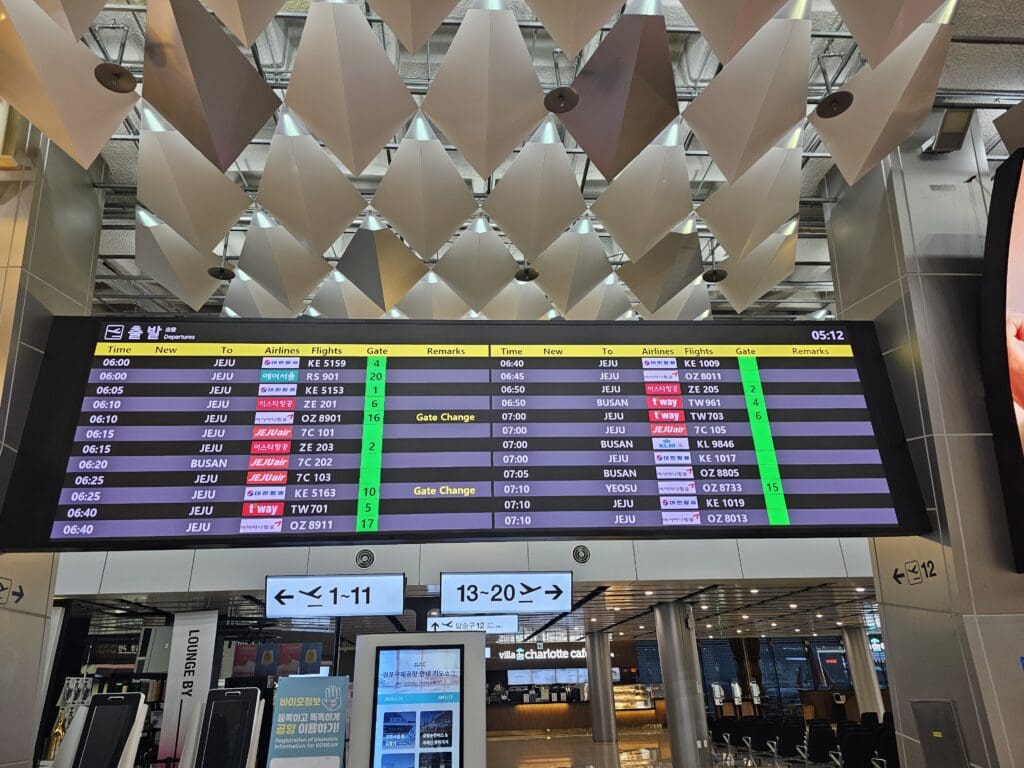
Day 1 – Seongsan
After a quick flight from Seoul, I arrived in Jeju ready to begin my adventure. My first destination was Seongsan, where I would stay for two nights. Though Jeju’s bus network is often criticised, especially compared to those of cities on the mainland, I would have no issue reaching Seongsan by bus. Specifically, Seongsan is served by a regular service from Jeju City, with this line starting at the airport. On a side note, the official Jeju bus website details all information regarding the island’s routes in Chinese, English, Japanese, and, of course, Korean. Meanwhile, I found that those manning the information desk in the arrivals hall were armed with plenty of information sheets regarding the local bus network.
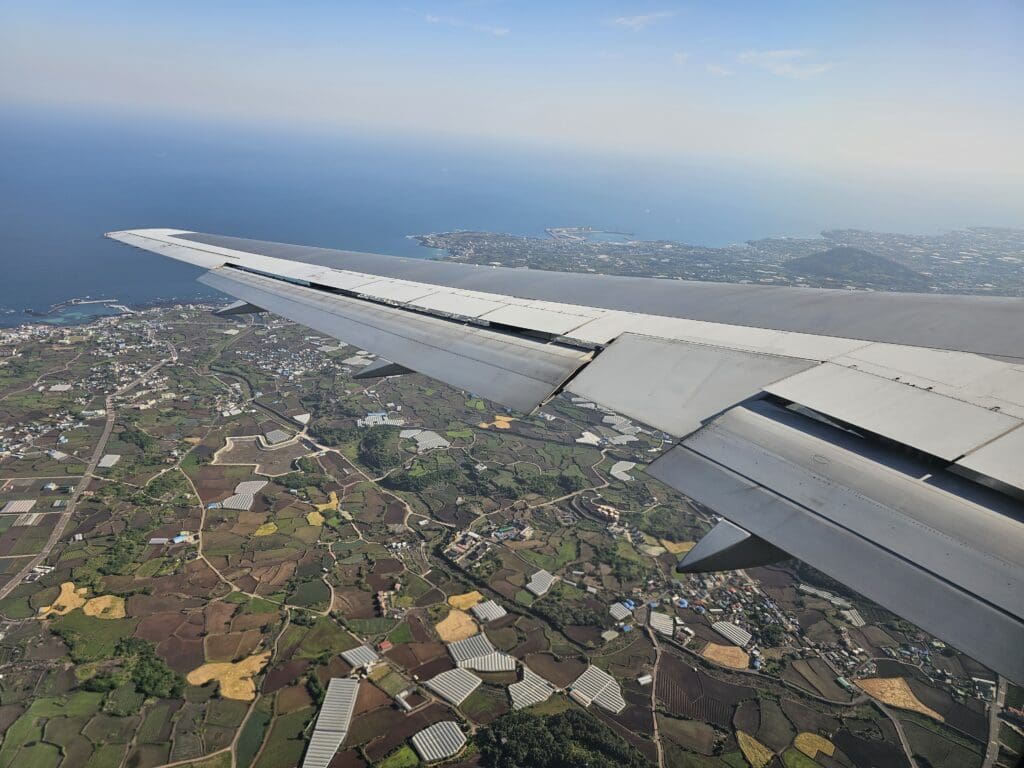
Thankfully, a regular service runs between Jeju Airport and Seongsan, with this operating via the island’s capital, Jeju City. Having timed things just right, following a post-arrival coffee I made my way to the bus stop and right on time, the Seongsan bus appeared. With this service starting at the airport, fortunately, I was able to bag a seat for the ride eastwards. However, by the time we reached Jeju City, the bus was full, and many passengers had to stand for the hour-long ride. Upon arriving at Seongsan’s main street, I still had some time before I could check into my accommodation, so I popped into a local café for a much-needed coffee and a little work to pass the time.
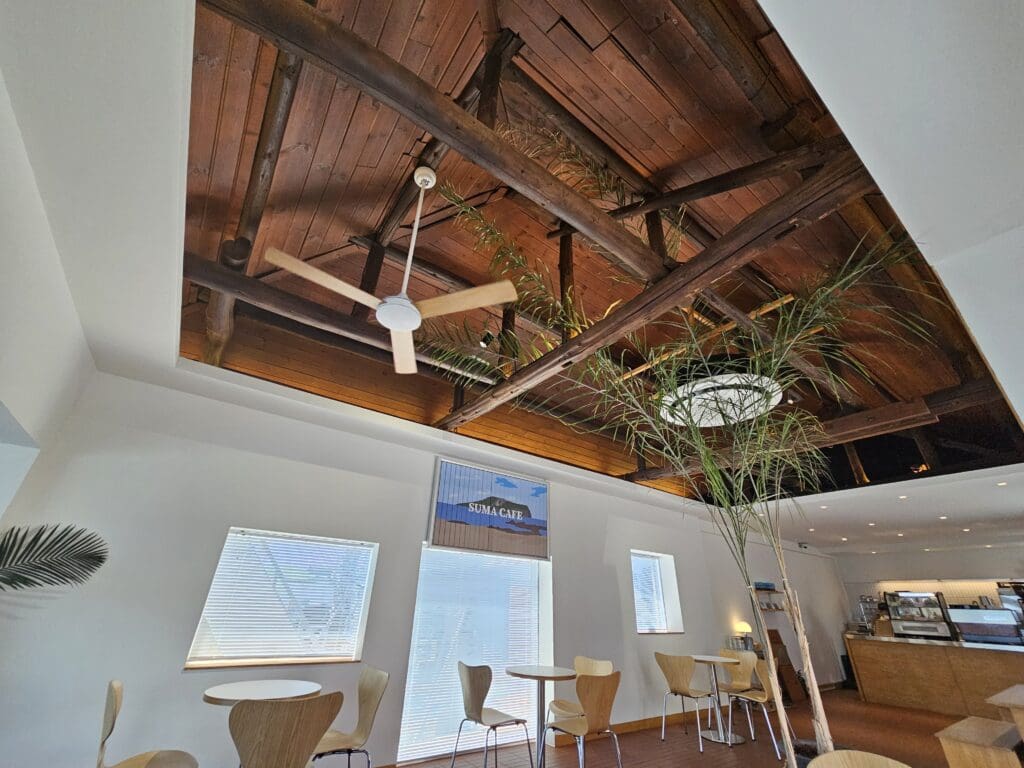
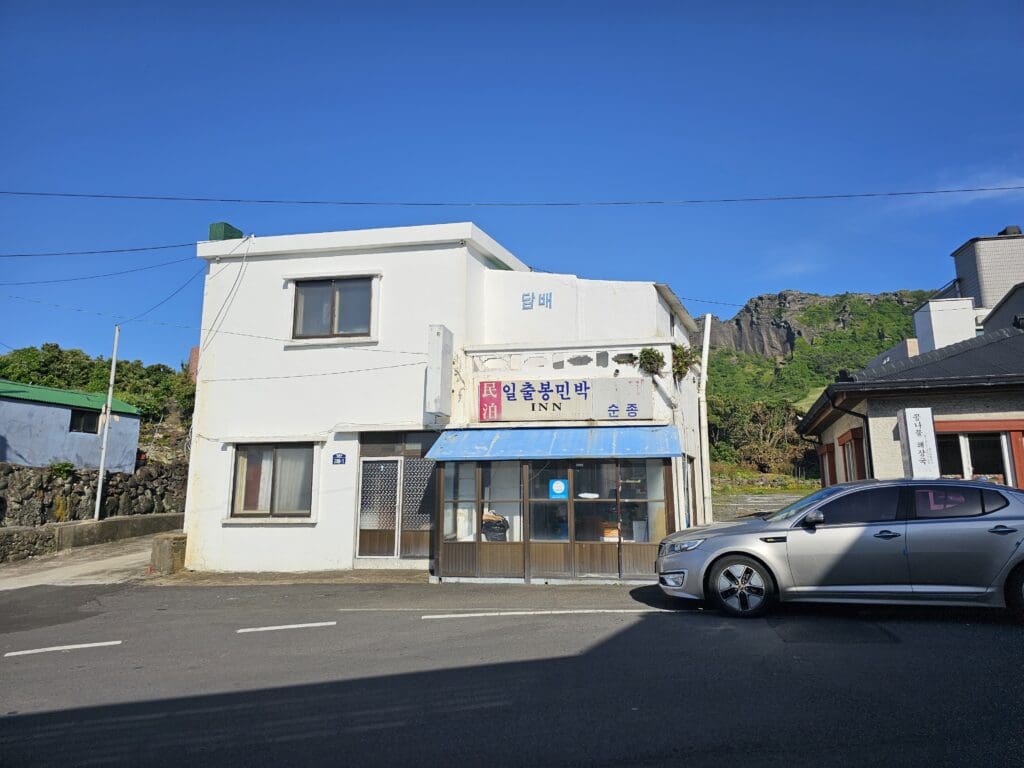
Once checked in, I set off to explore the village before heading to Seongsan Ilchulbong, a must-visit attraction. This 182-metre-tall volcanic tuff cone is one of Jeju’s most famous sights, and despite the crowds, it’s well worth the hike. After passing through the car park, where I was accompanied by loud K-pop thanks to the souvenir shop which was blasting the latest tunes, I reached the entrance and paid the 5,000 won entry fee.
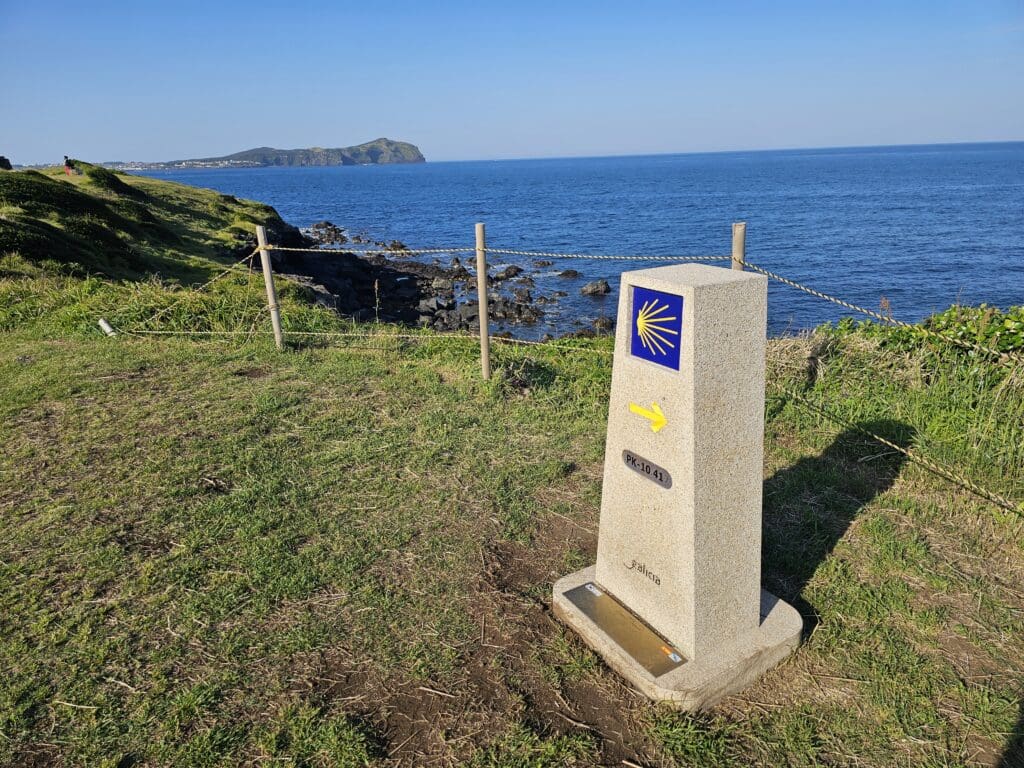
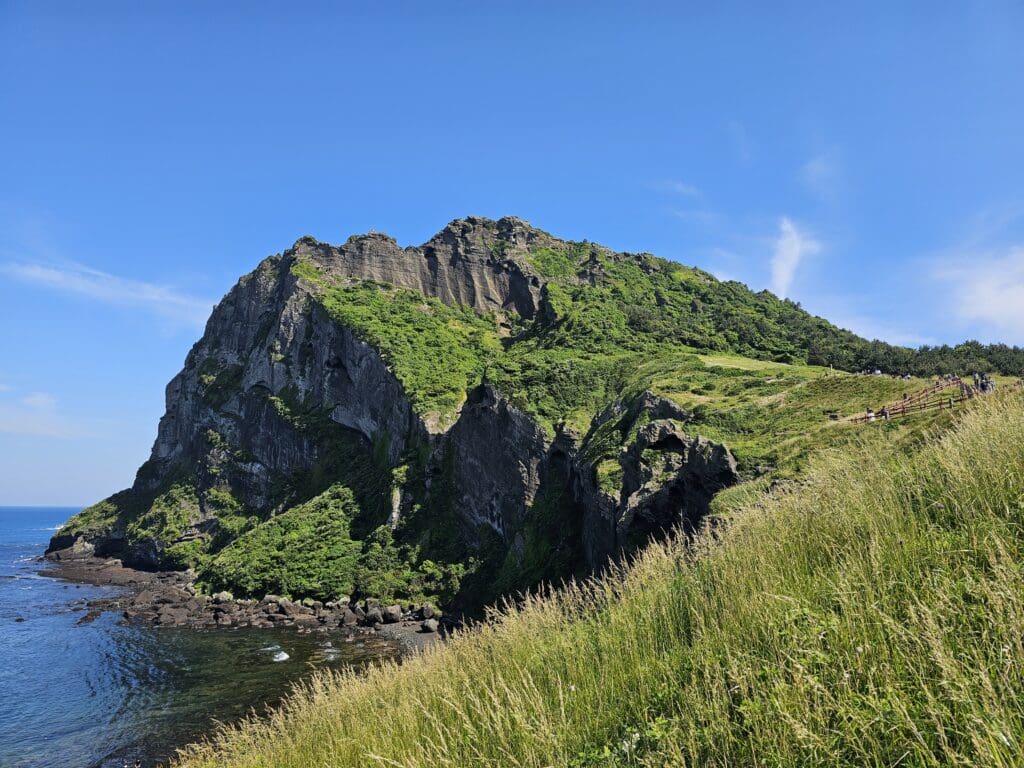
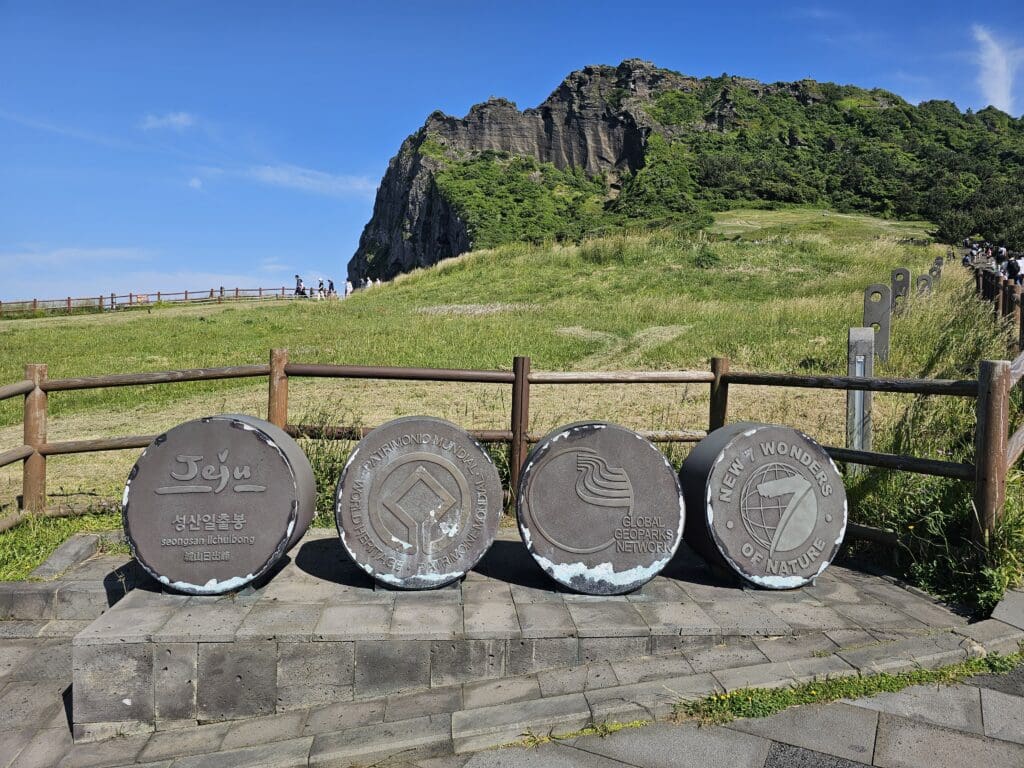
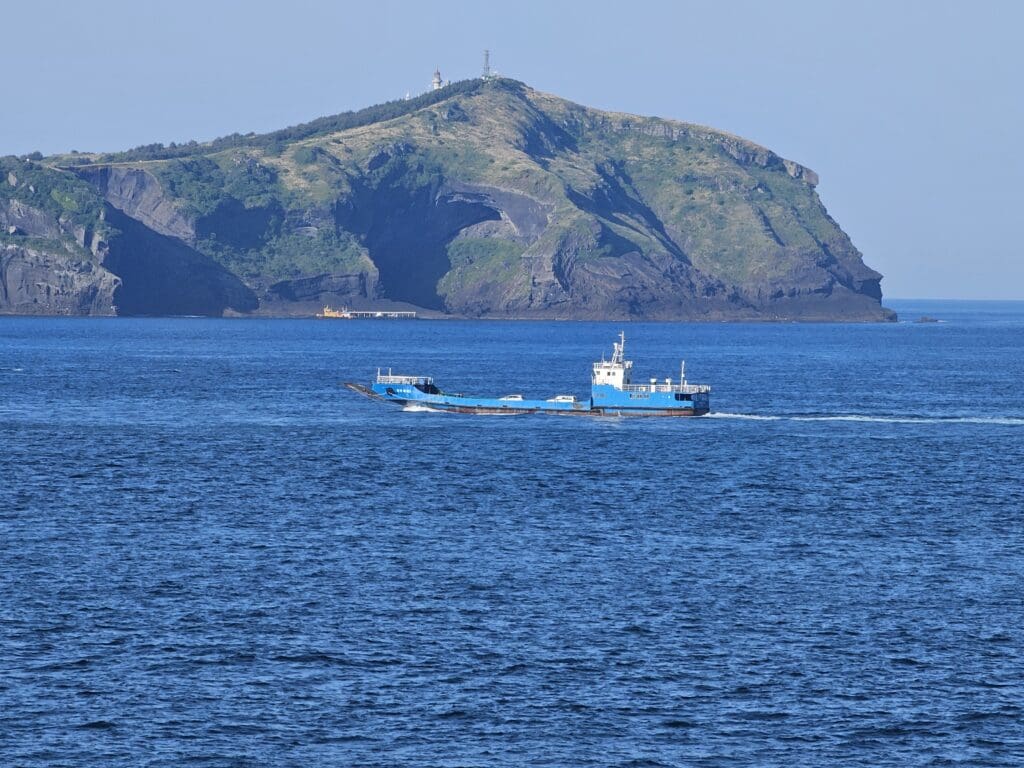
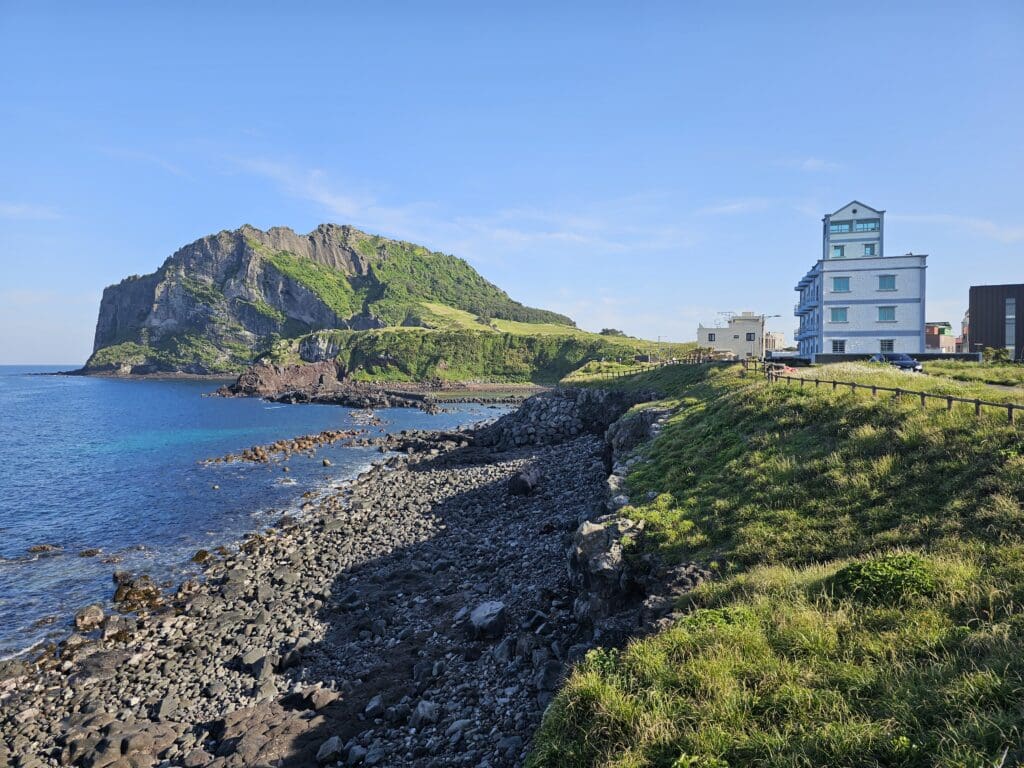
The hike was relatively easy, though the many stairs provided a good workout. Along the way, there were plenty of rest stops, and a one-way system meant that hikers couldn’t stray from the designated path. In about 15 minutes, I reached the summit, where I was rewarded with great views of Seongsan, the coastline, and nearby volcanic cones. On the opposite side, the lush greenery of the crater was almost equally impressive and provided different vistas to those of your standard Korean hike.

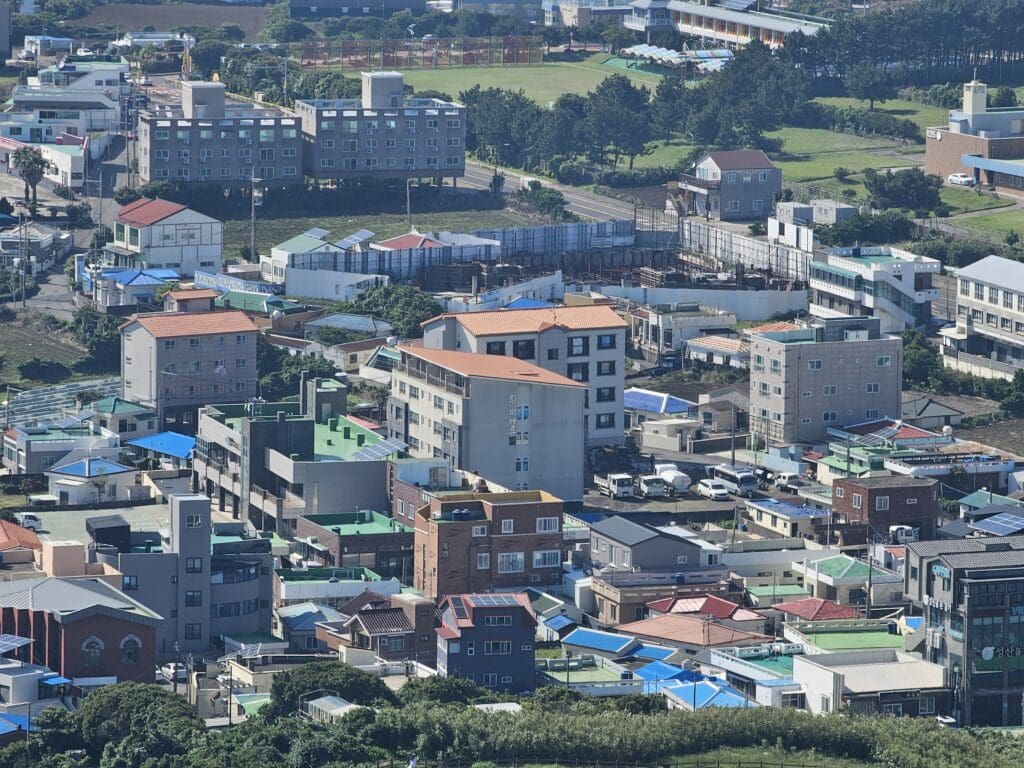
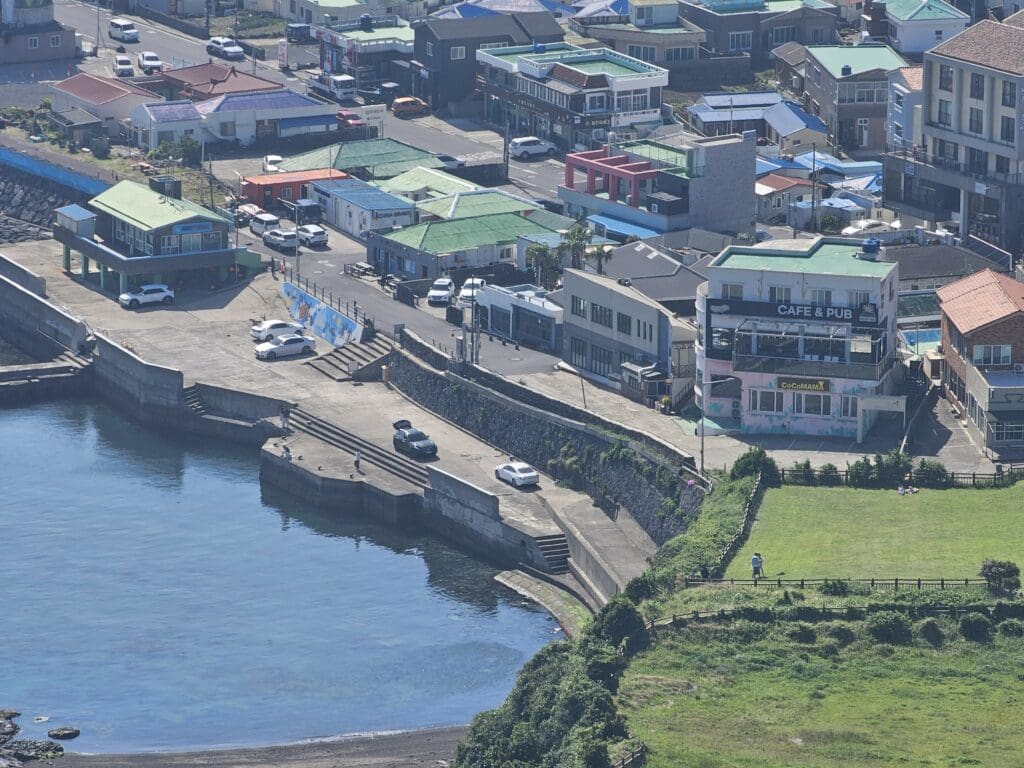
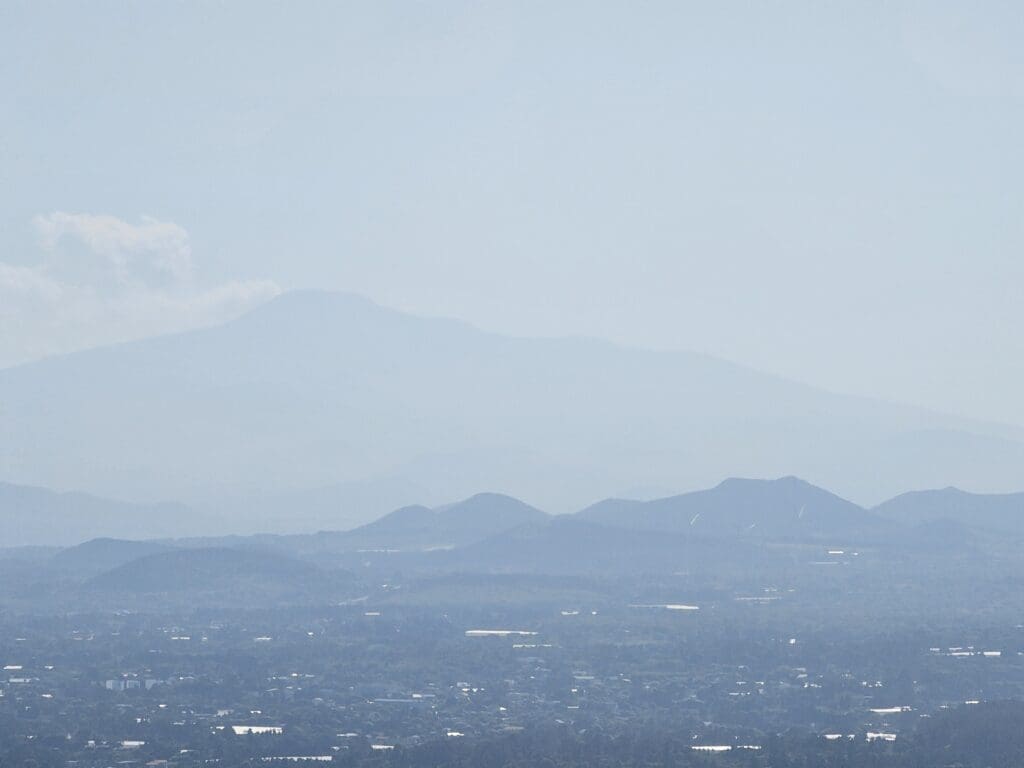
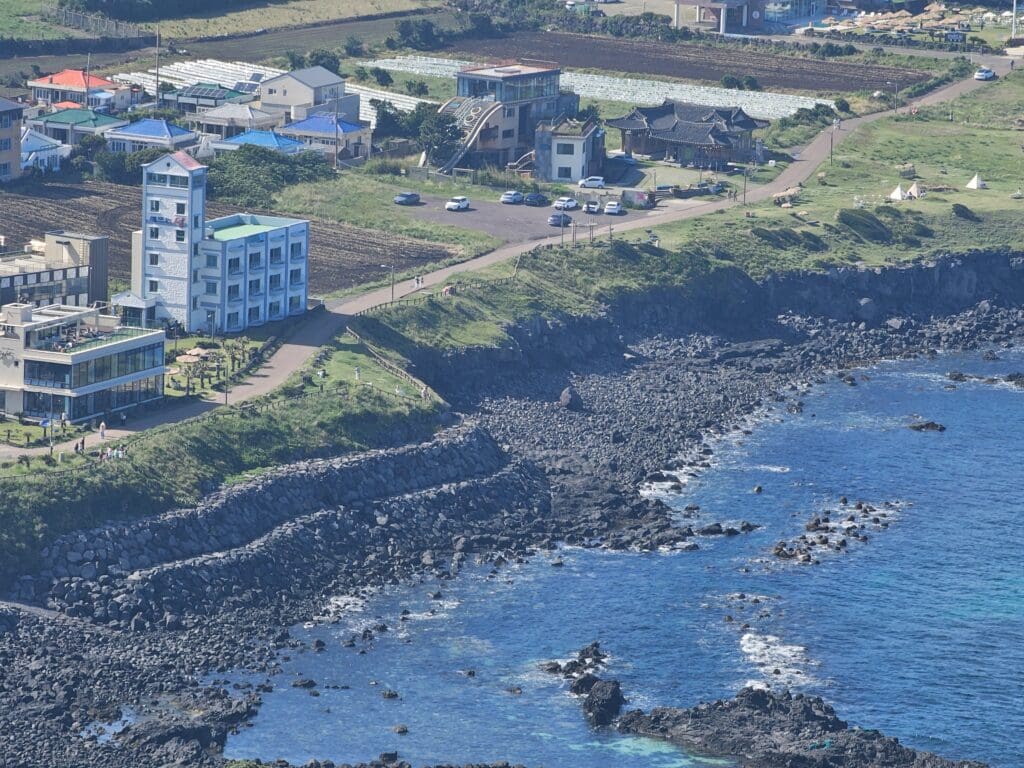
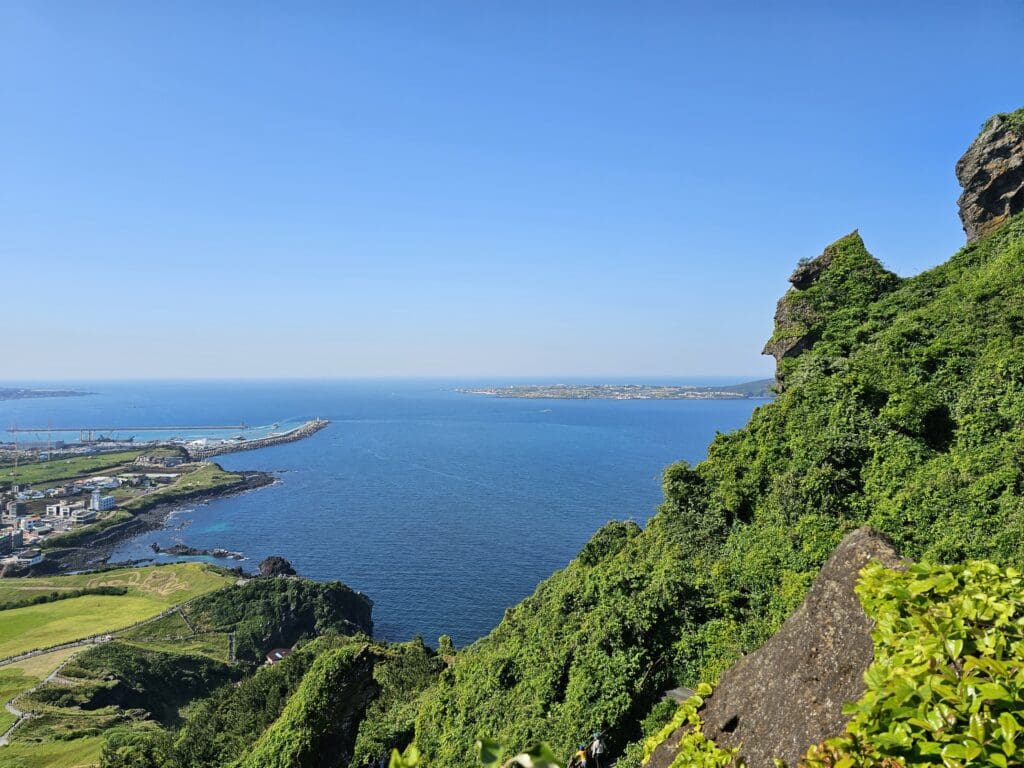
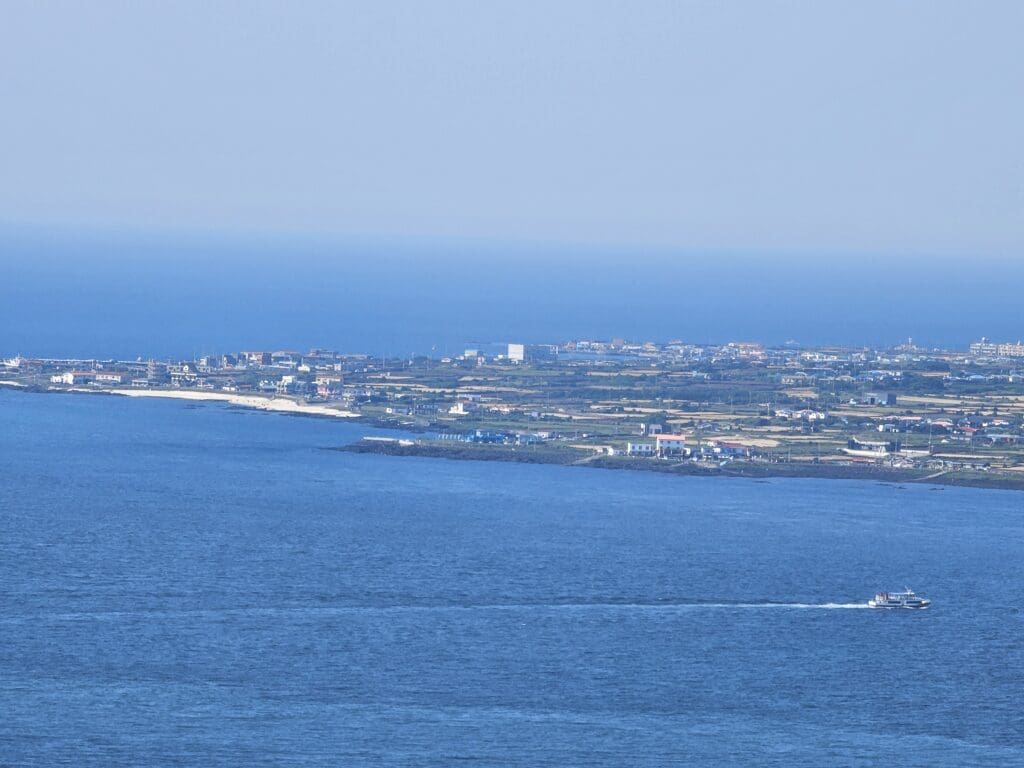
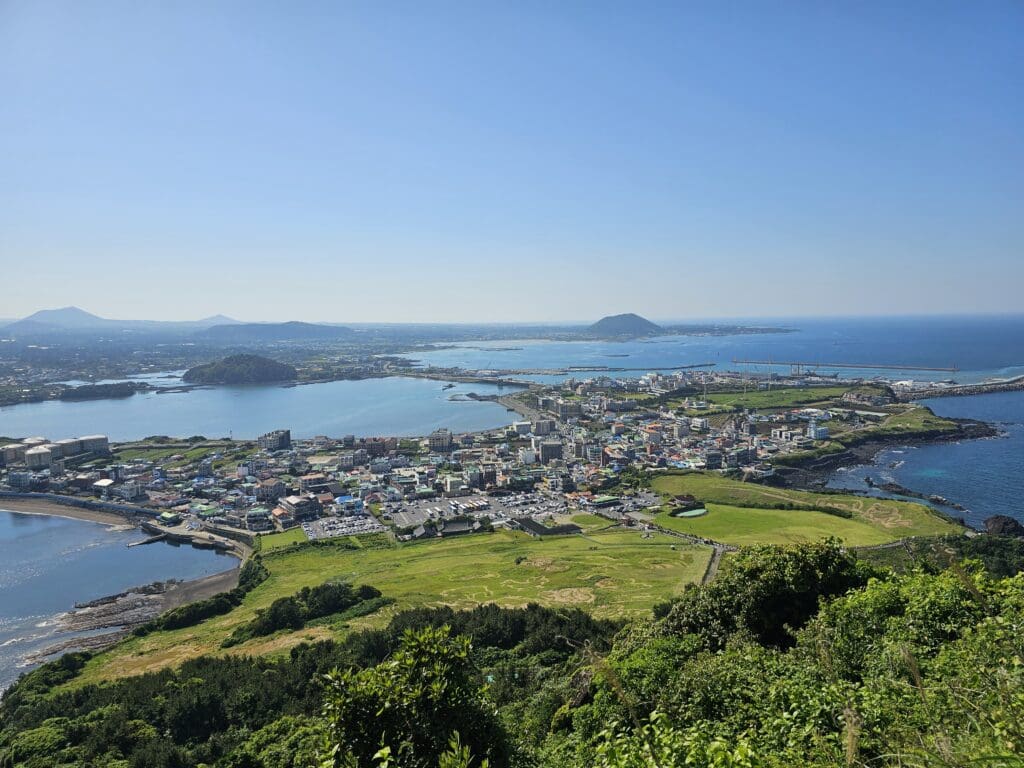
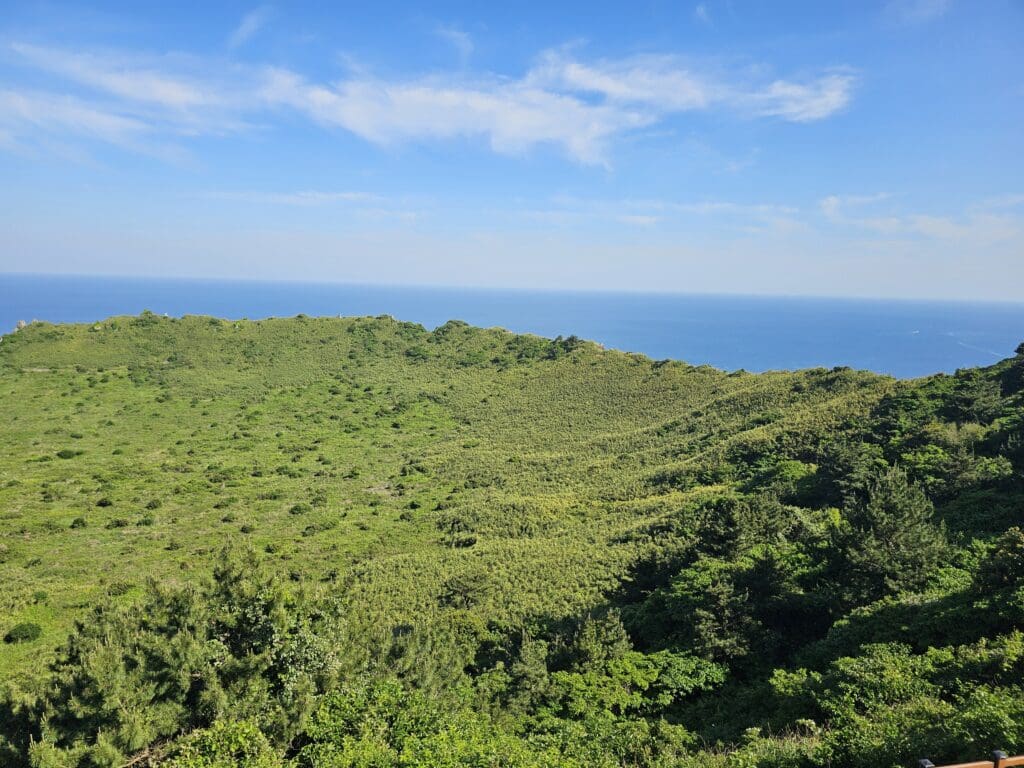
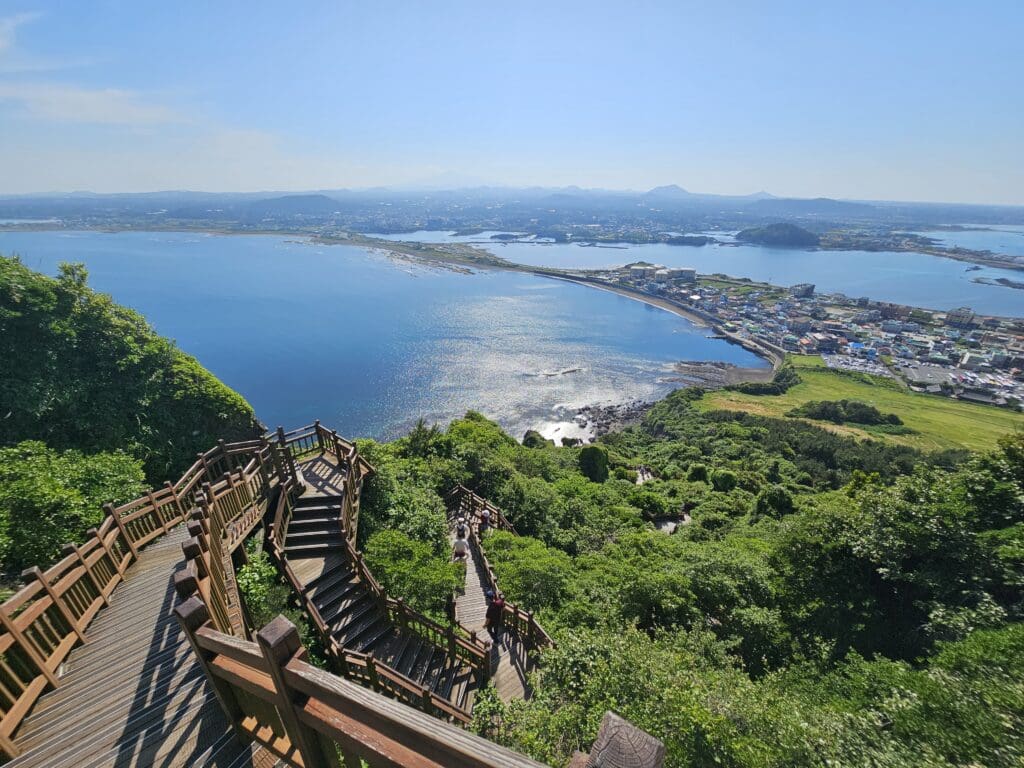
After descending and cooling off with a refreshing hallabong slushie which cost me a reasonable 3,500 won, I strolled along the coastline, watching ferries head toward the nearby island of Udo. As dusk approached, I settled near the shore, enjoying a local beer and dried squid as the sun set on my first day in Jeju.
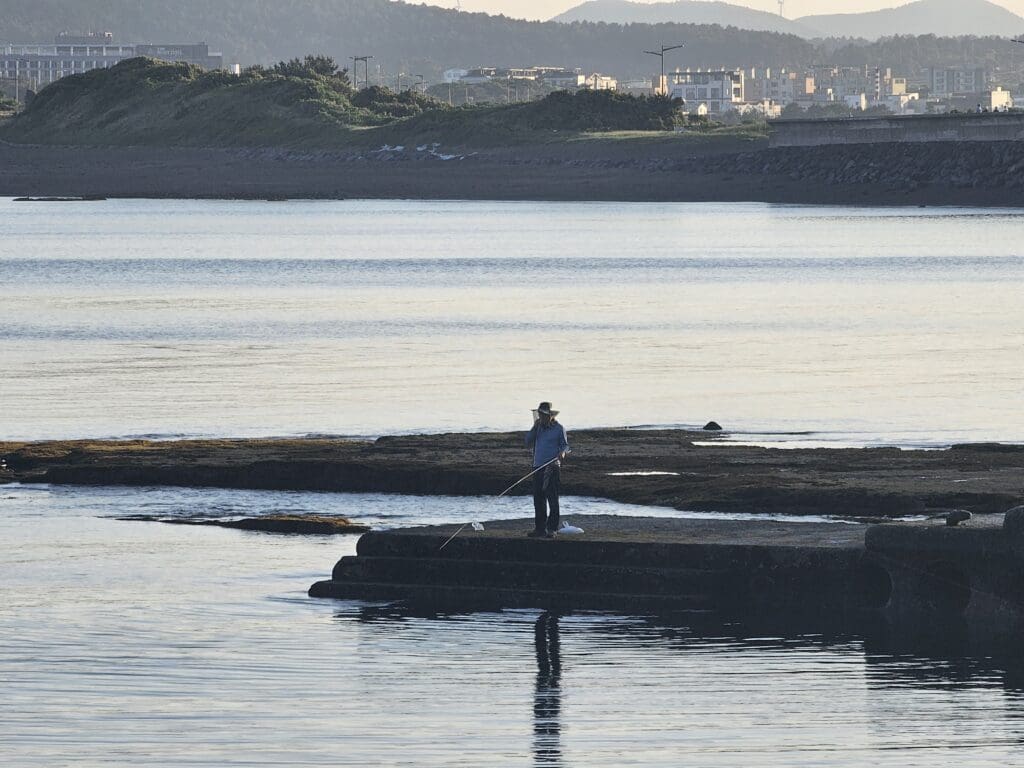

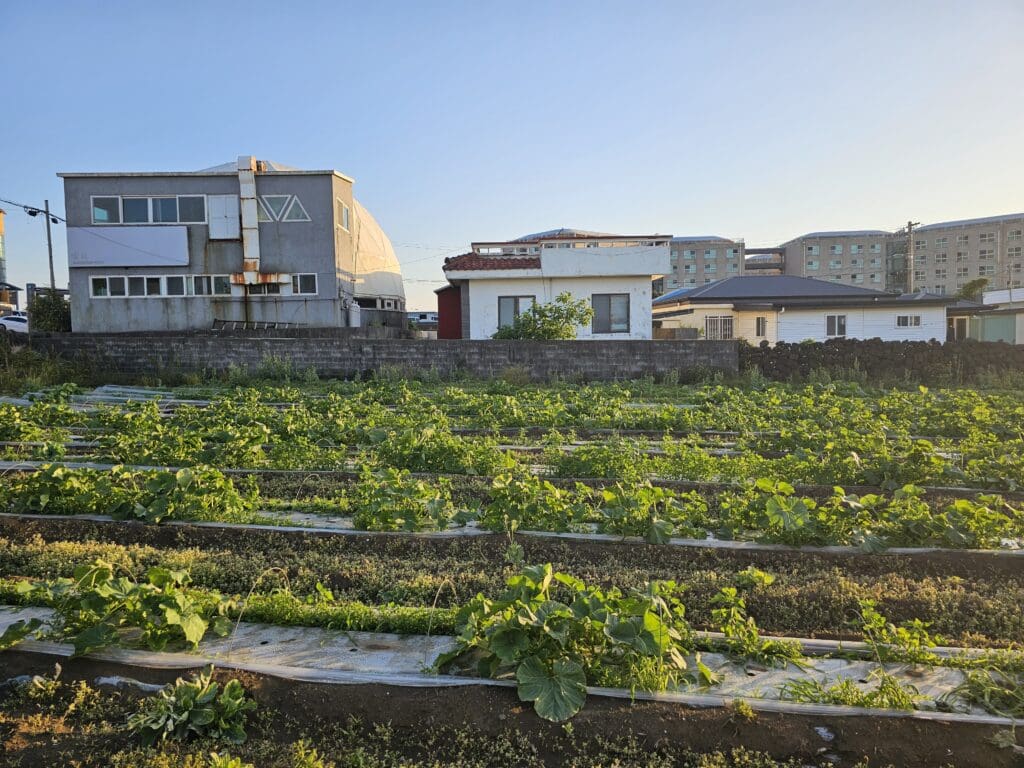
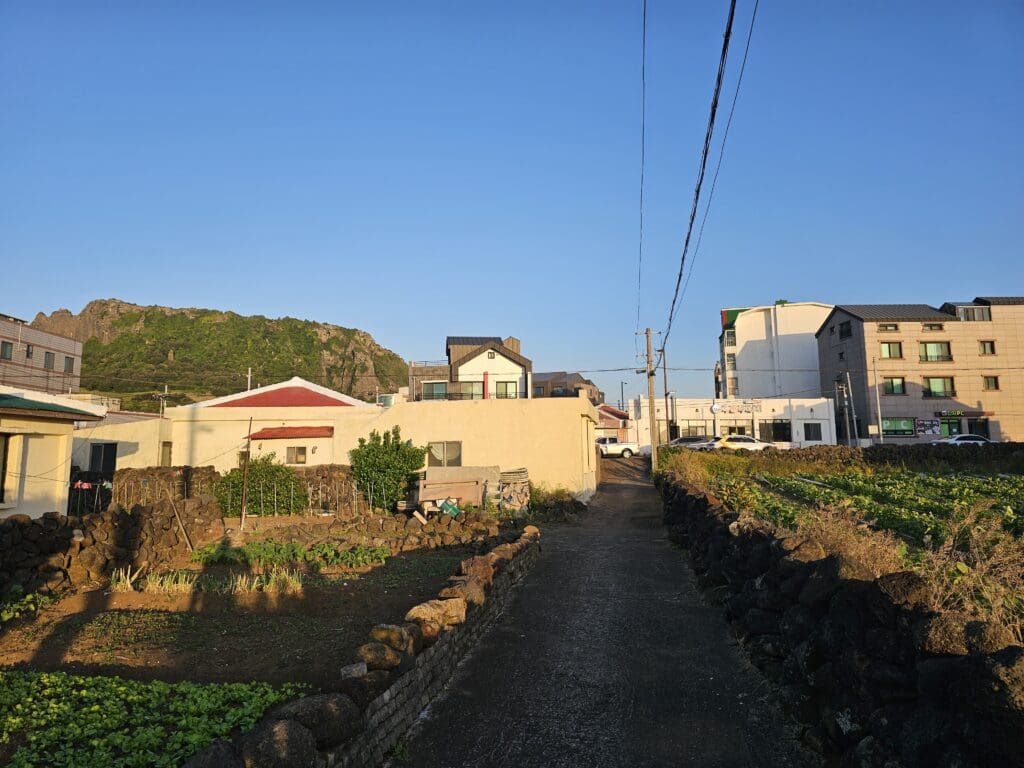
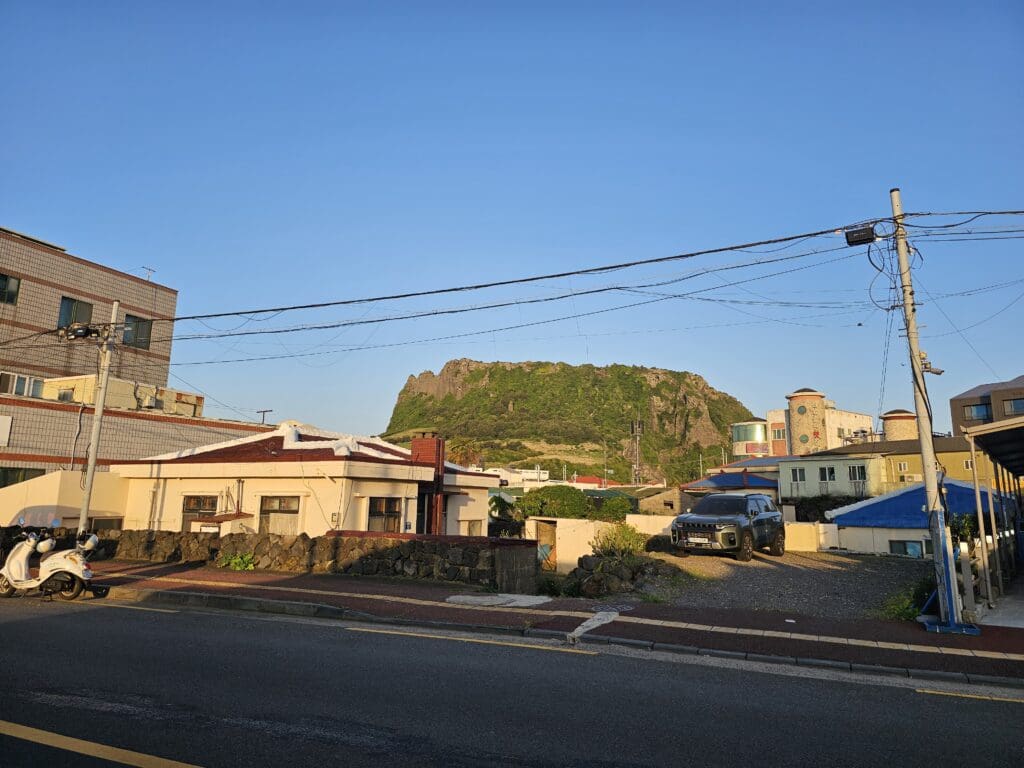
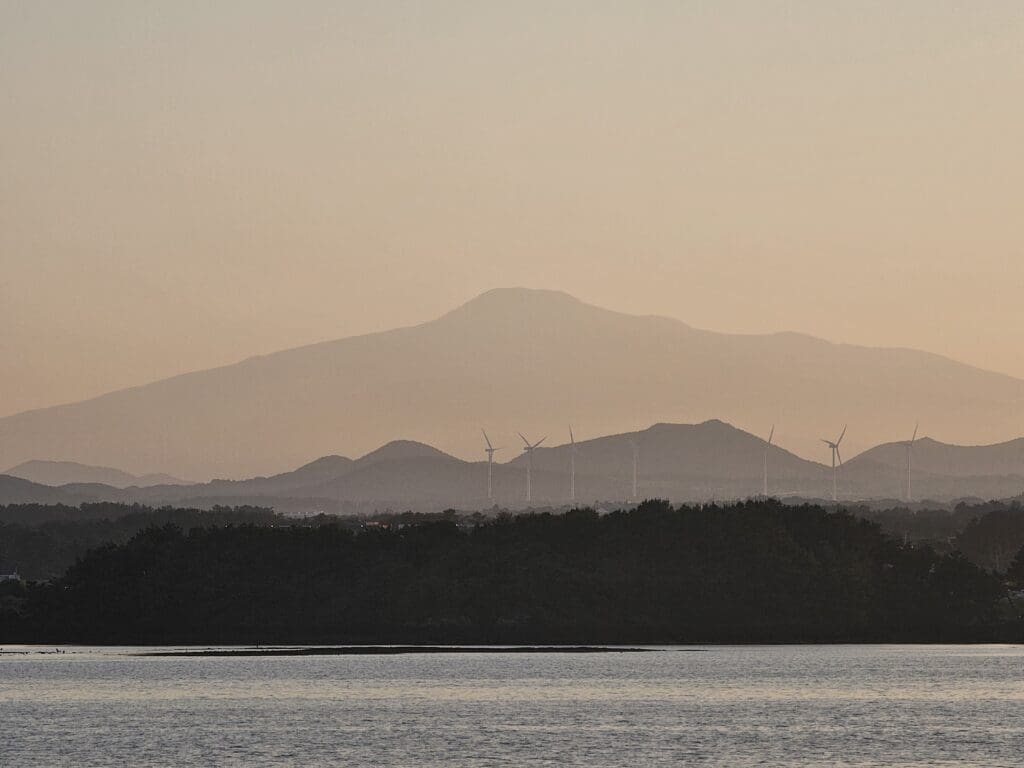
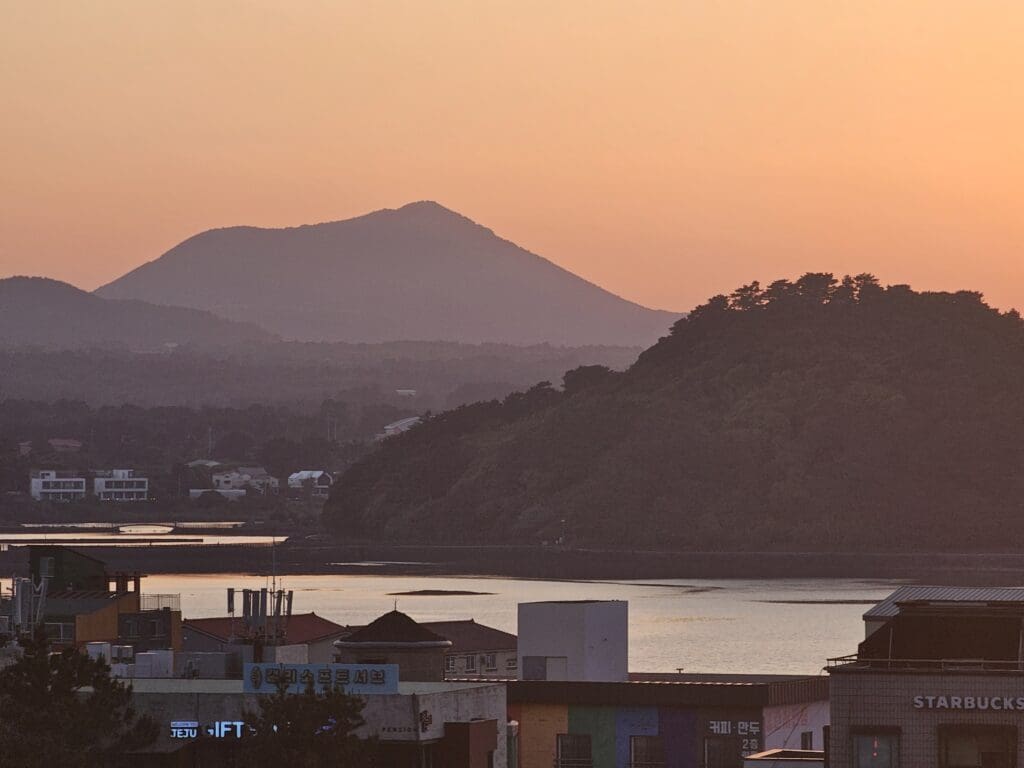
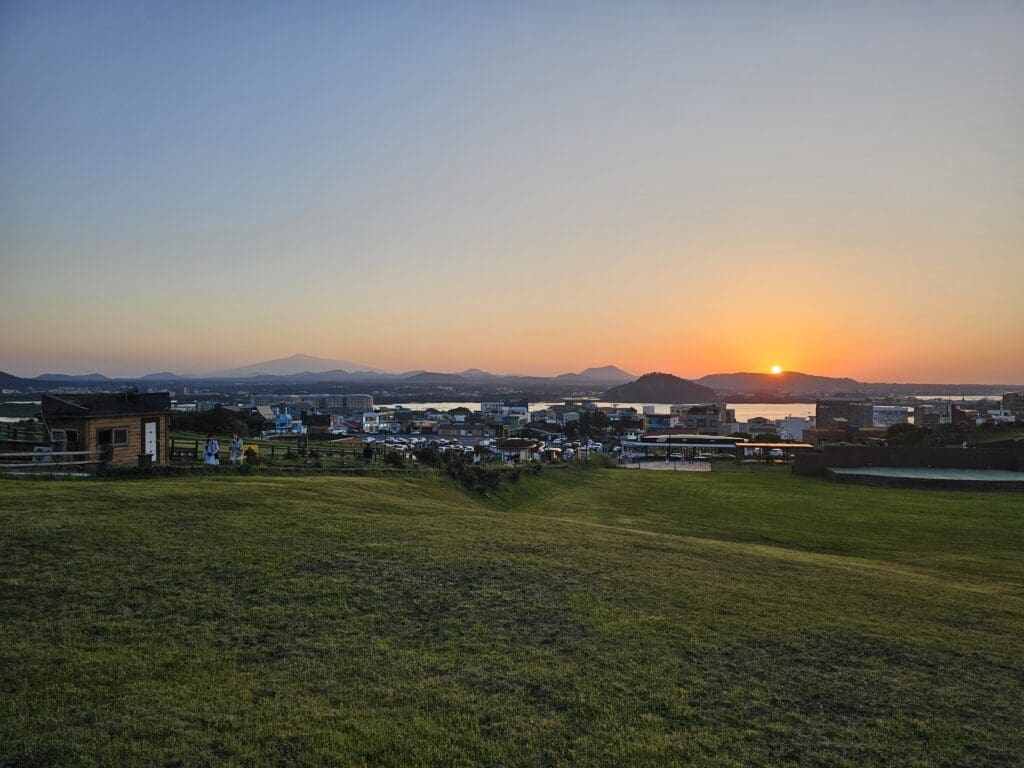
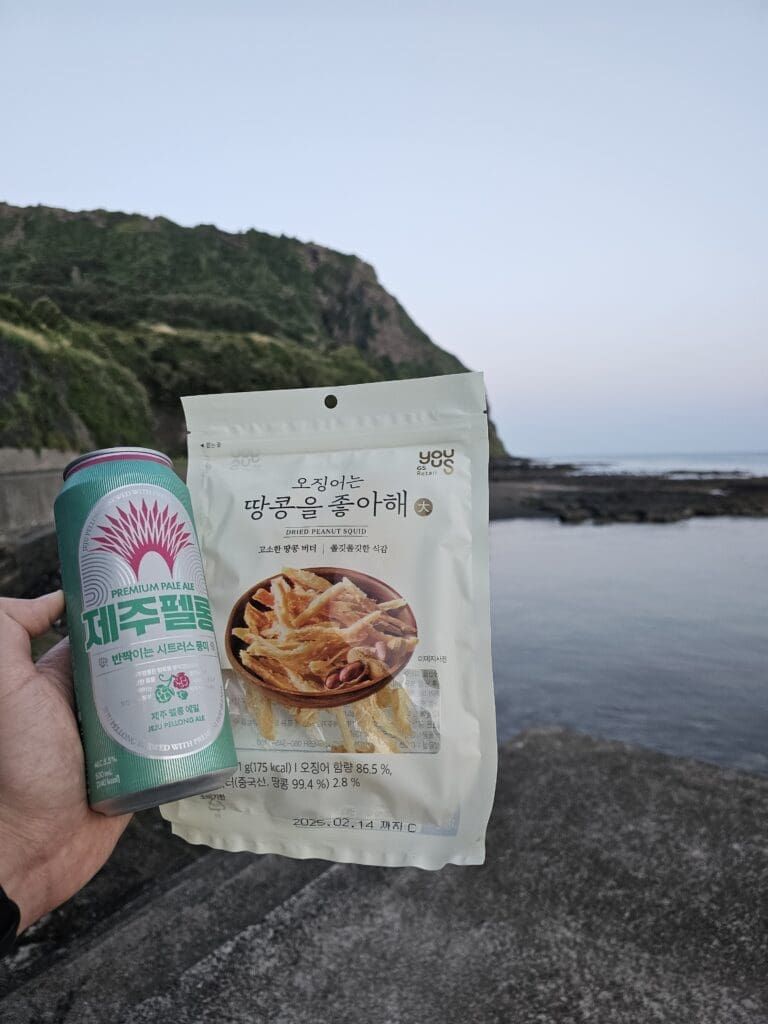
Day 2 – Udo Island
Waking up bright and early, I had reserved the second day of my Jeju adventure for a trip to the island of Udo (literally U Island), located just off Jeju’s far eastern shoreline. However, first, I needed to fuel myself up for the busy day ahead. Whilst Seongsan is home to plenty of cafés that sell your usual array of baked goods, fancying something a bit heartier, I opted for a dosirak from the local convenience store, which I paired with a coffee and a bottle of Vita 500. Like most Korean convenience stores, that particular 7-Eleven featured a seating area where customers can eat their purchases, and once I had done so, I headed back out onto the warm and sunny streets.
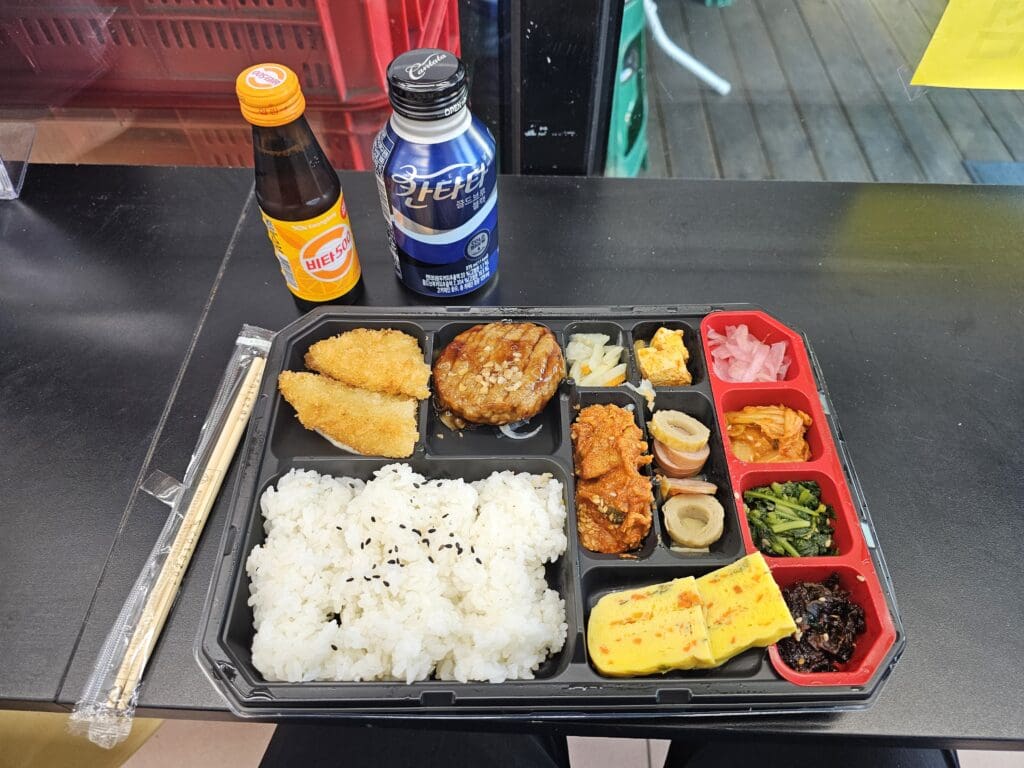
Following a quick stop at the accommodation, I walked over to the ferry terminal, which was a sort of service station-like building complete with various cafés and convenience stores, despite only serving ships bound for nearby Udo. There, plenty of manned ticket counters could be seen, although scenes were a little chaotic as it seemed that most staff could only speak Korean, whilst most passengers could only speak Chinese. Before purchasing a ticket, I was required to fill in a form with my name and contact details, with this mandated to ensure that a record of those onboard the ship is kept in the event of an emergency. I then voyaged to a counter before showing them my form and paying the 4,000 won for my return ticket.
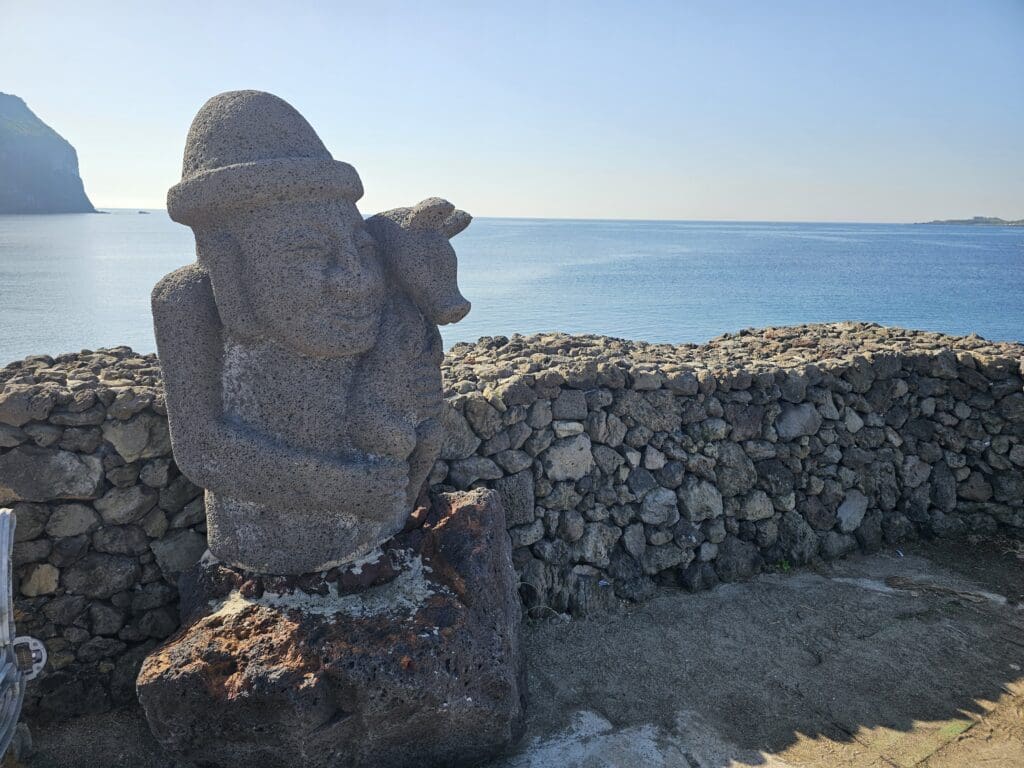
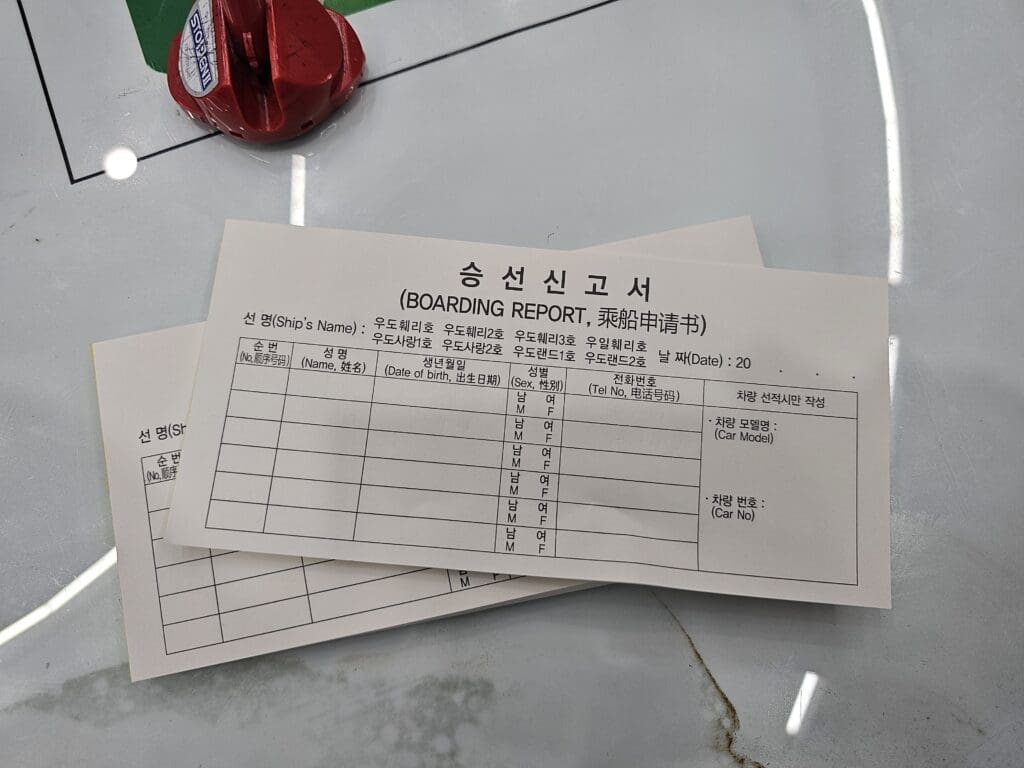
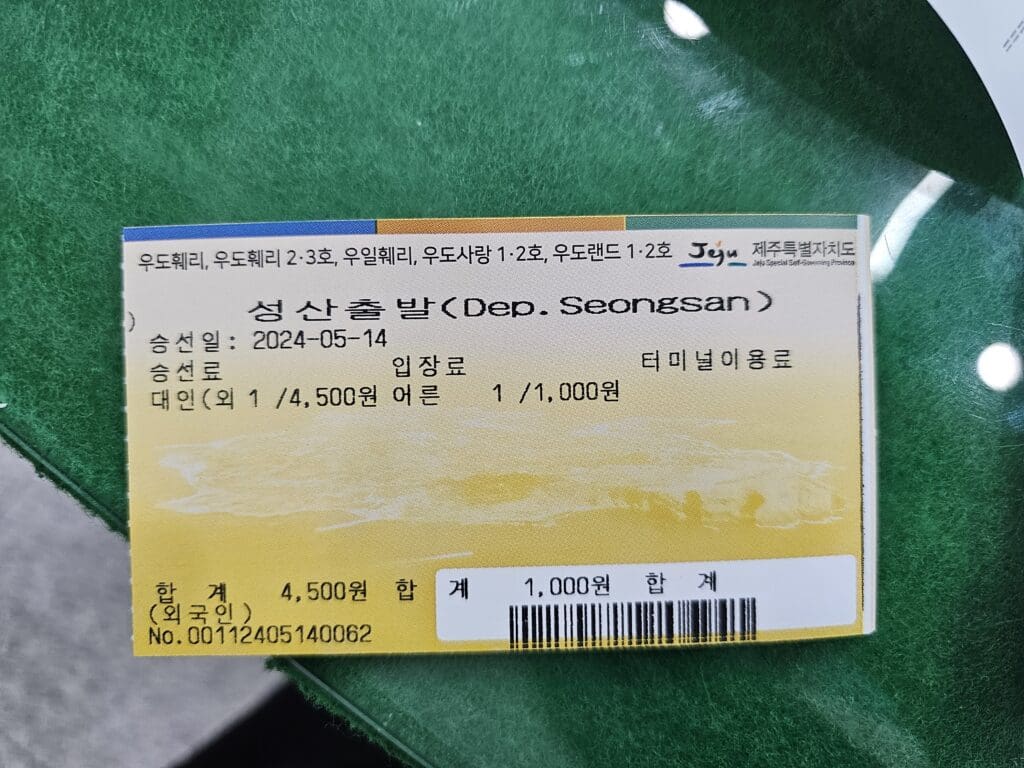
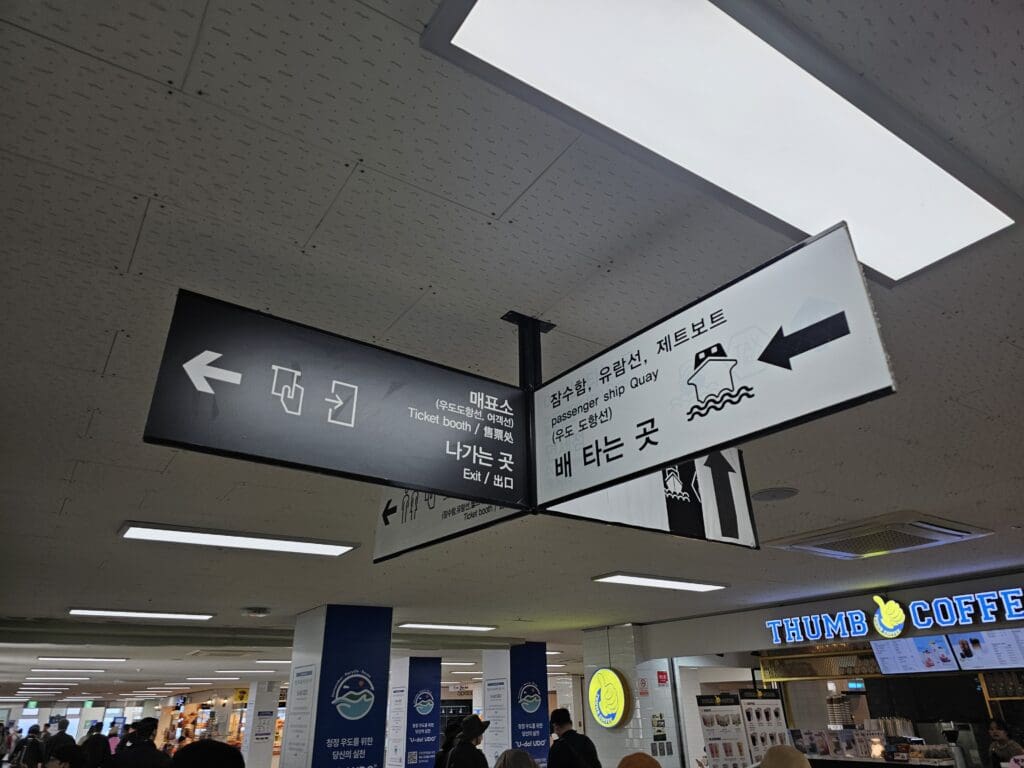
Seeing as my ticket could be used on any service that day, I could have lingered around; however, seeing no reason not to make my way to the ship, I followed the signs and headed back outside into the warm sunshine. For much of the year, the local ferry company runs a near-non-stop stream of ferries between Seongsan and Udo, so it is unlikely that you will have to wait long to catch a ship. Making my way outside, I was guided towards the next departure, which was operated by the Udo Sarang 2-Ho, translating to Udo Love 2.
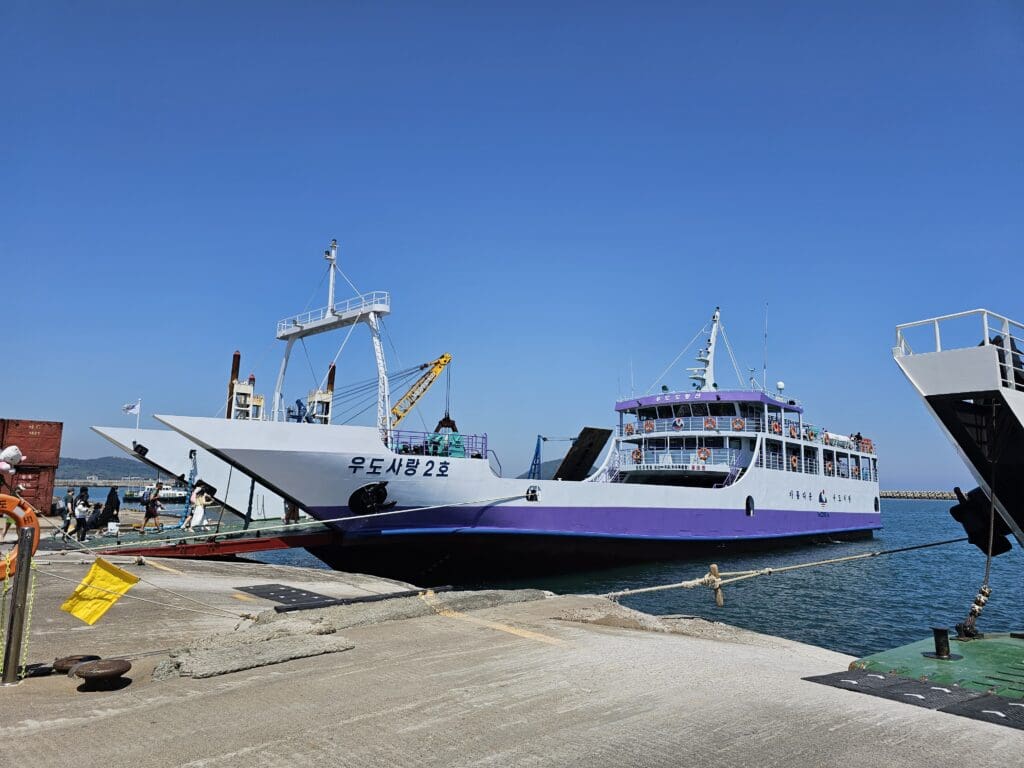

As ferries go, this ship was fairly basic, with a car deck and two passenger decks above this. Specifically, this featured a large indoor saloon, as well as plenty of outdoor deck space. Whilst few passengers would perhaps find themselves famished on such a short journey, two boxes of shrimp-flavoured crisps could be found, with another cardboard box for passengers’ money, with these sold for 2,000 won per bag on an honesty-based system. Following a smooth crossing, fifteen minutes later, the ship reached Haumokdong Port, one of two ports on the island served by ferry from Seongsan.
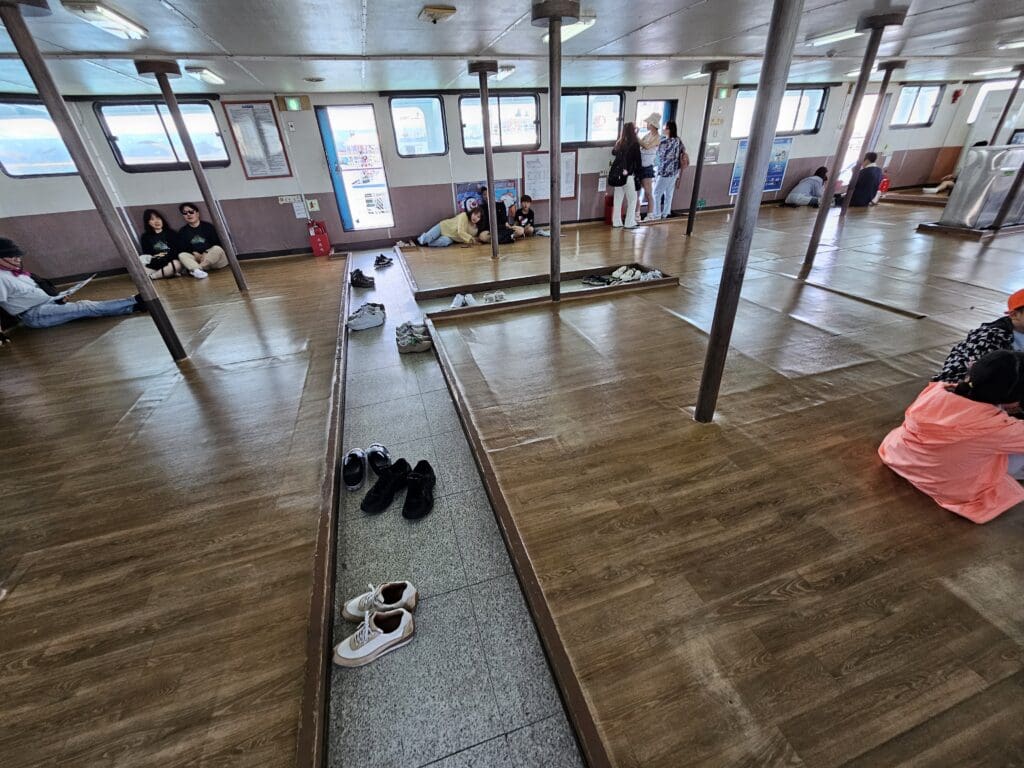
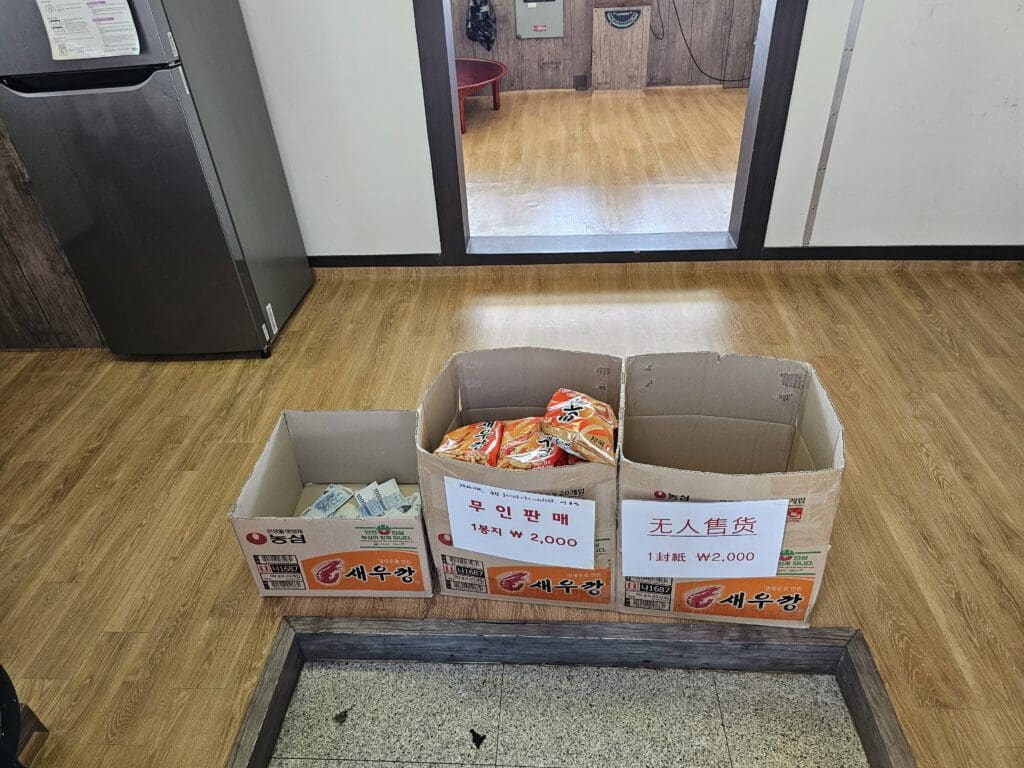
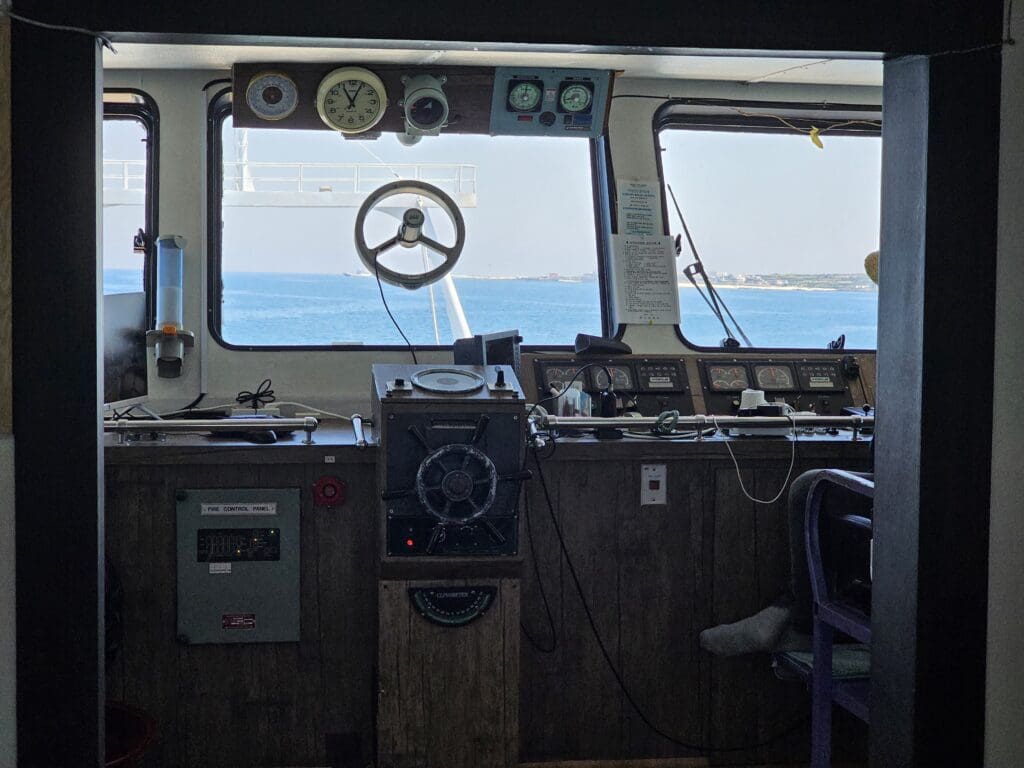
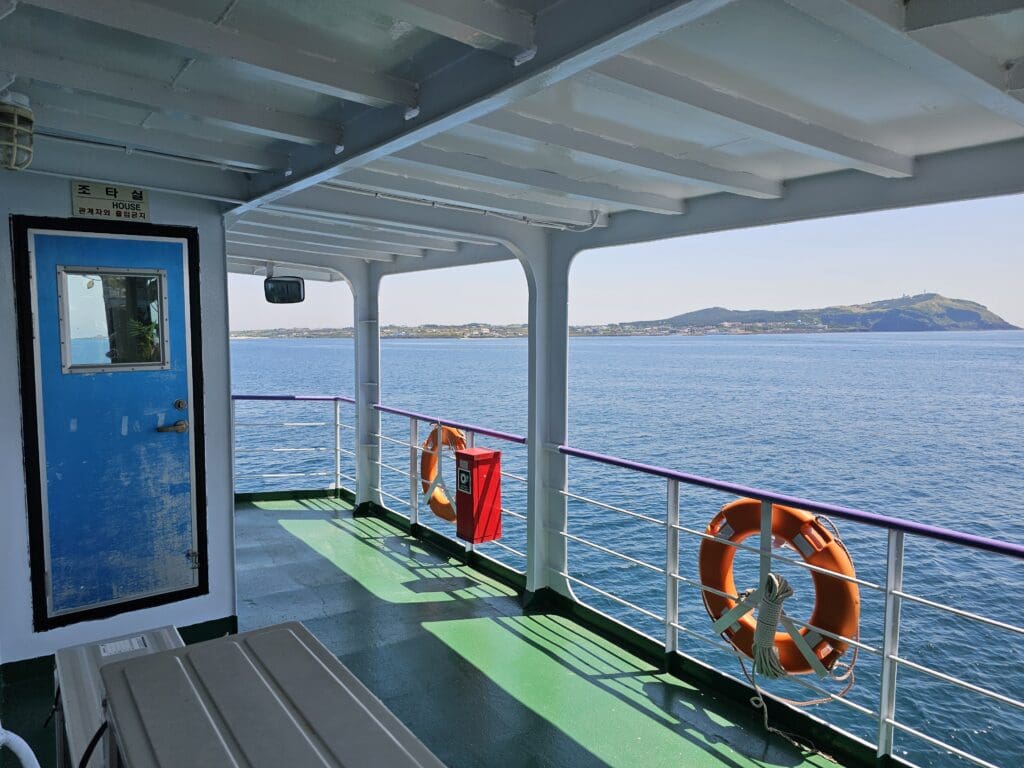
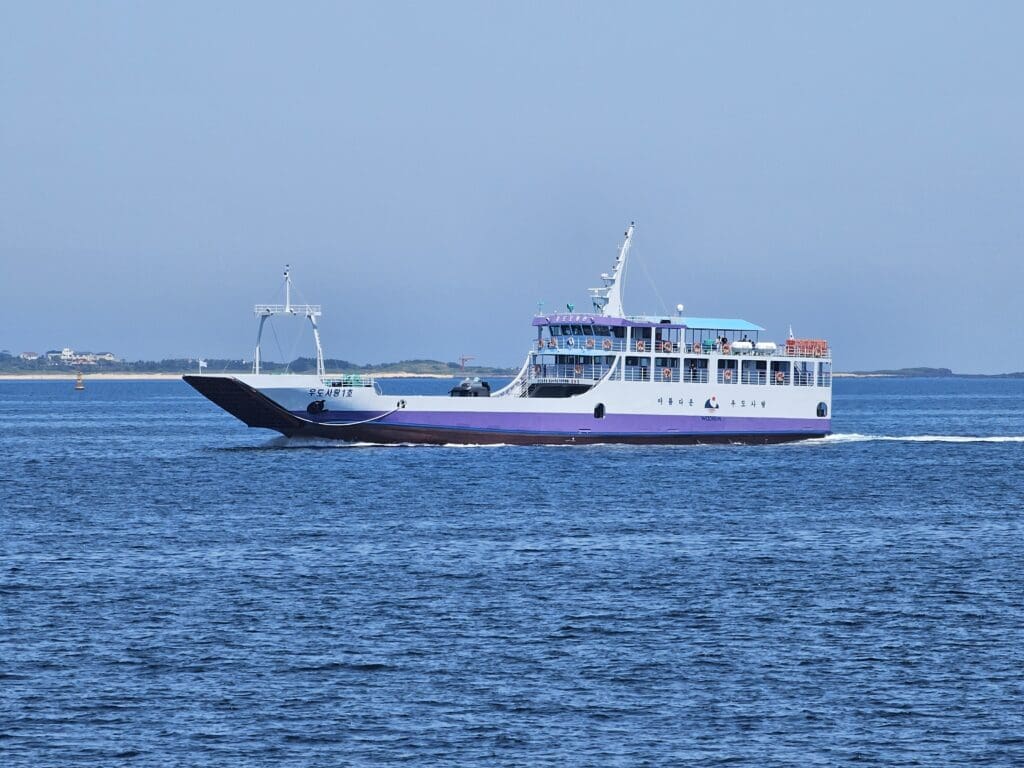
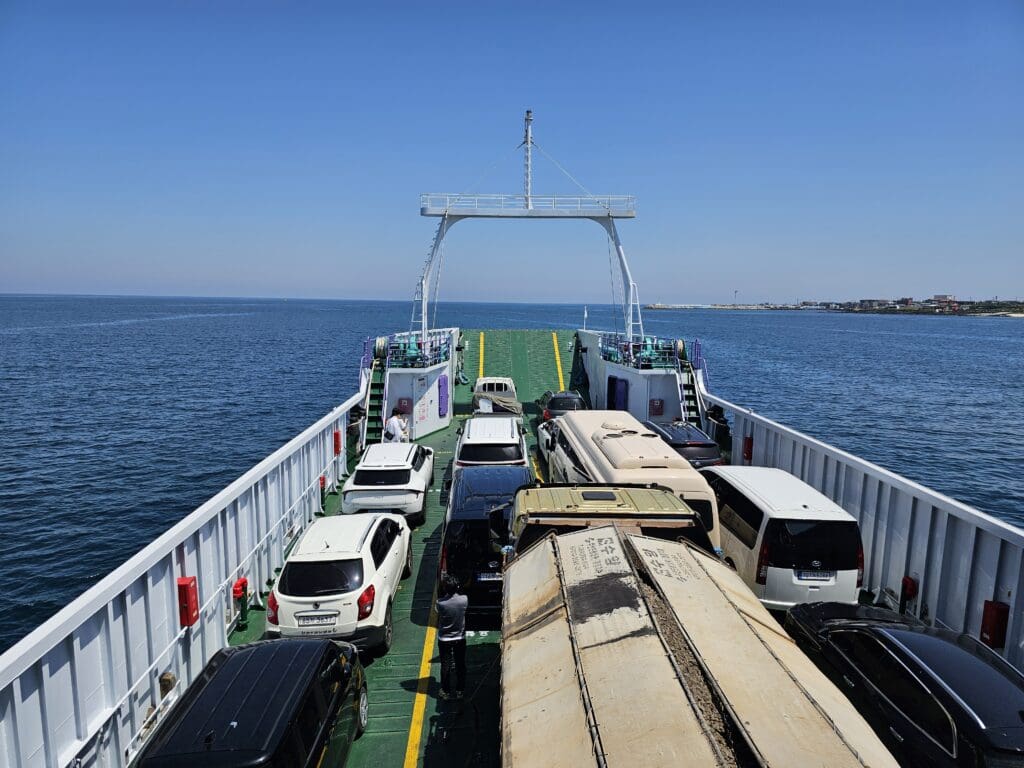
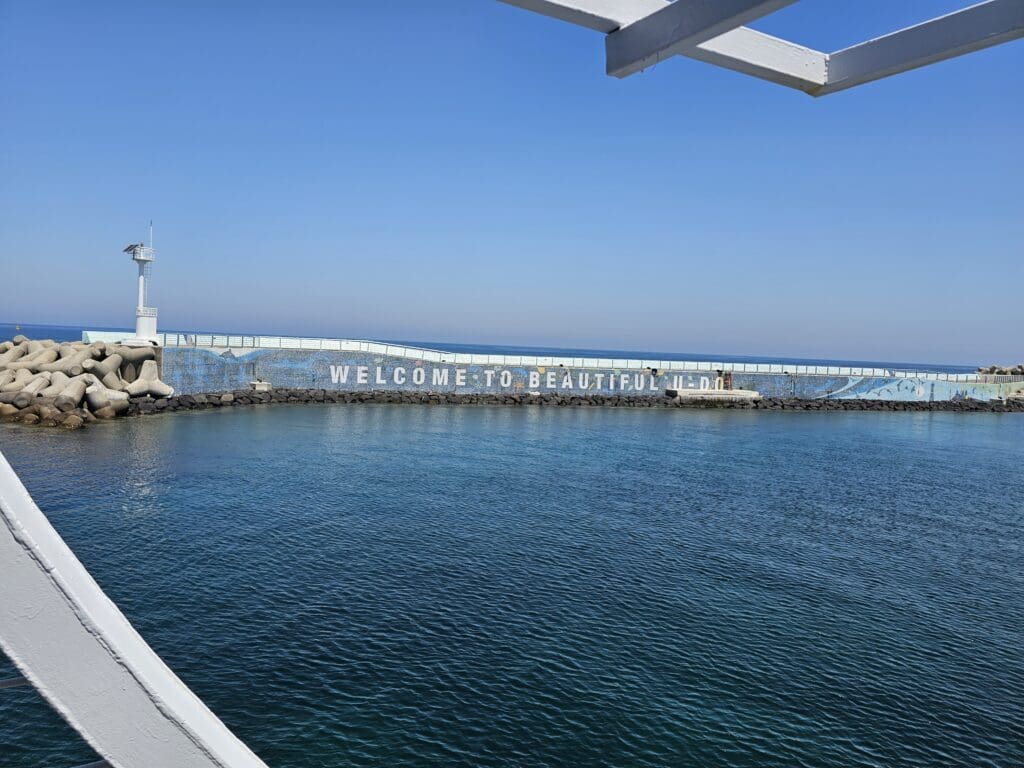
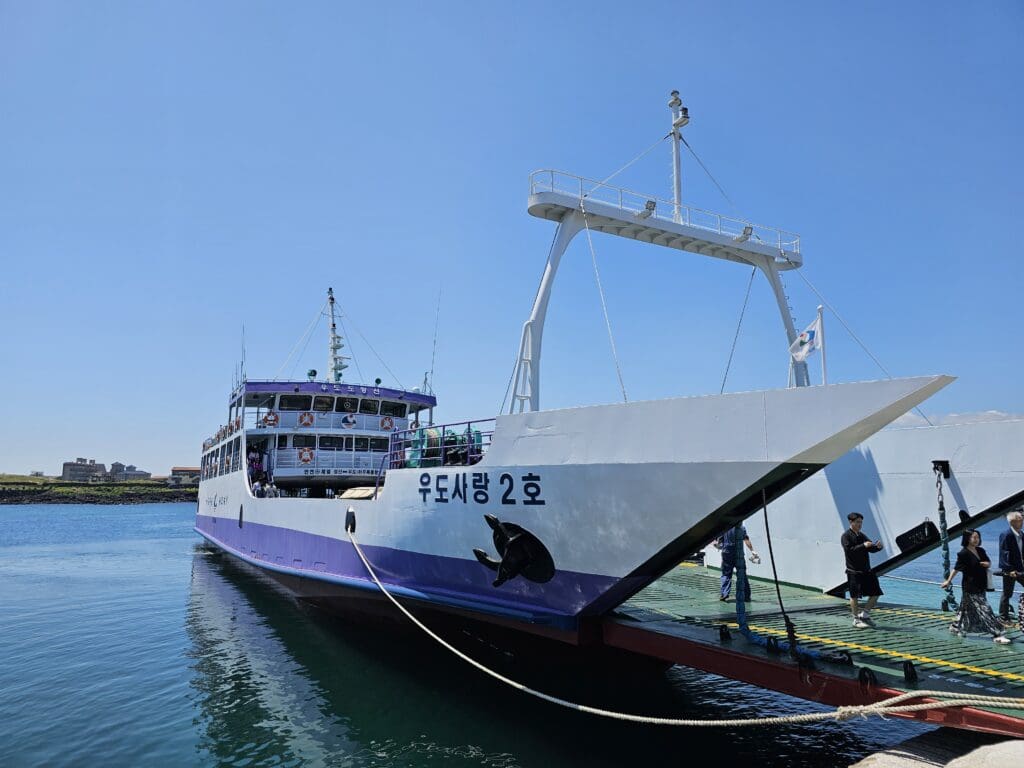
Once on Udo, I did not have any specific plan other than to wander around and soak up the peace of the island. Heading down the coastline, little could be heard other than the gentle sound of the waves as they crashed into the shoreline and the odd hum of cars and electric bikes as they whizzed past. Whilst Udo is a popular day trip destination, there is plenty of accommodation on the island, and were I to visit again, I would probably stay overnight. That said, covering a smidgen over six square kilometres, the island can be seen in a day. Within Korea, Udo is famous for its peanuts, and these can be found in a variety of foods on the island, including ice cream, baked goods and a selection of coffees. Not wanting to miss out on the opportunity to sample these, I ended up splurging out on a good, if not rather overpriced, peanut latte.
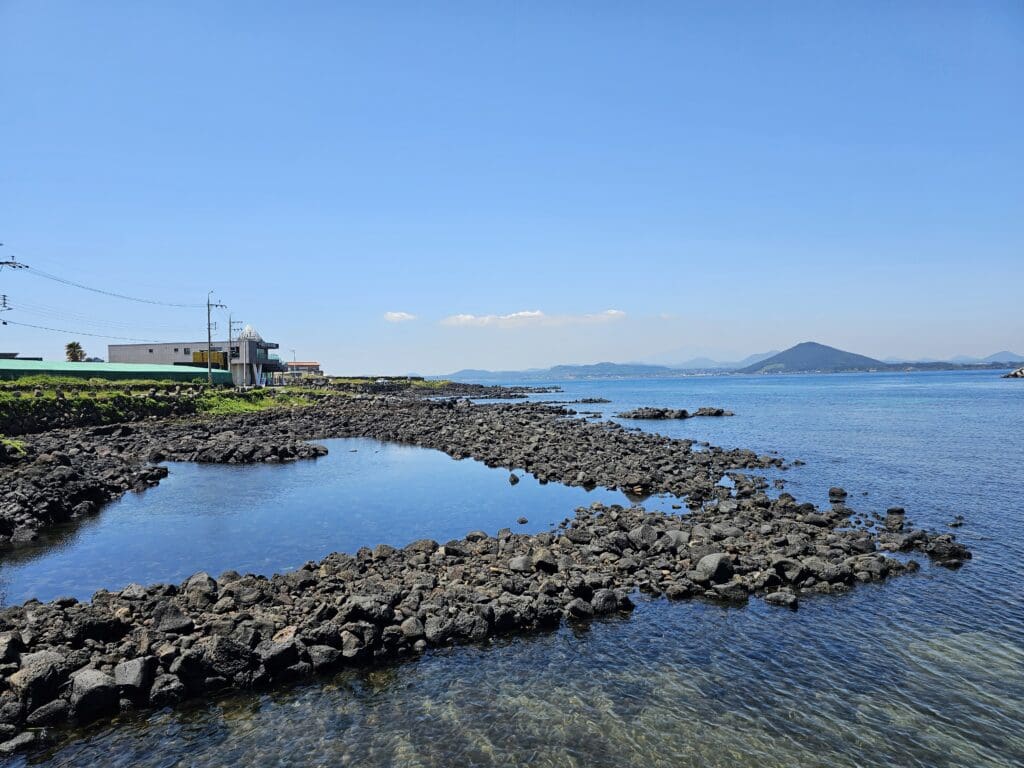
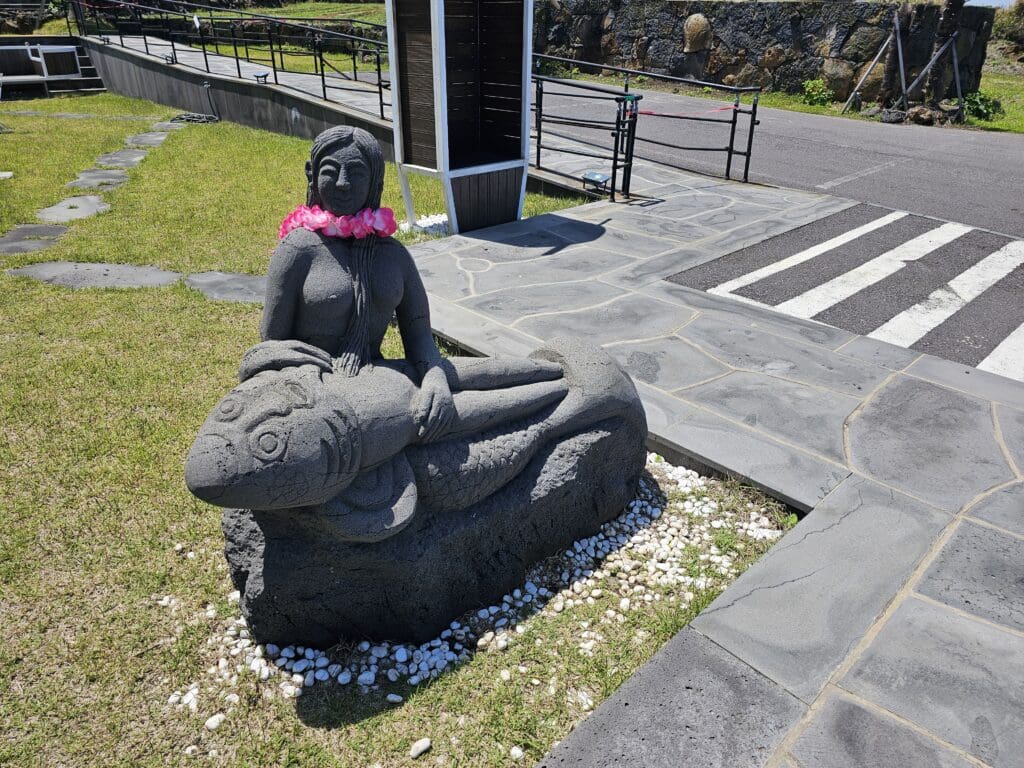
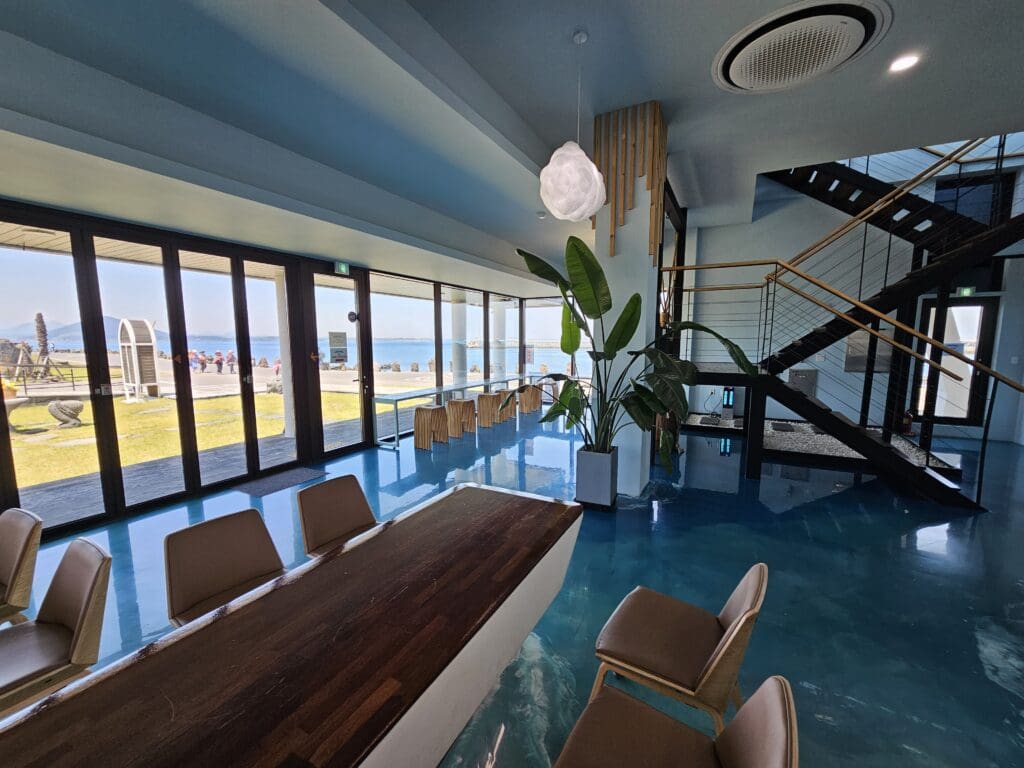
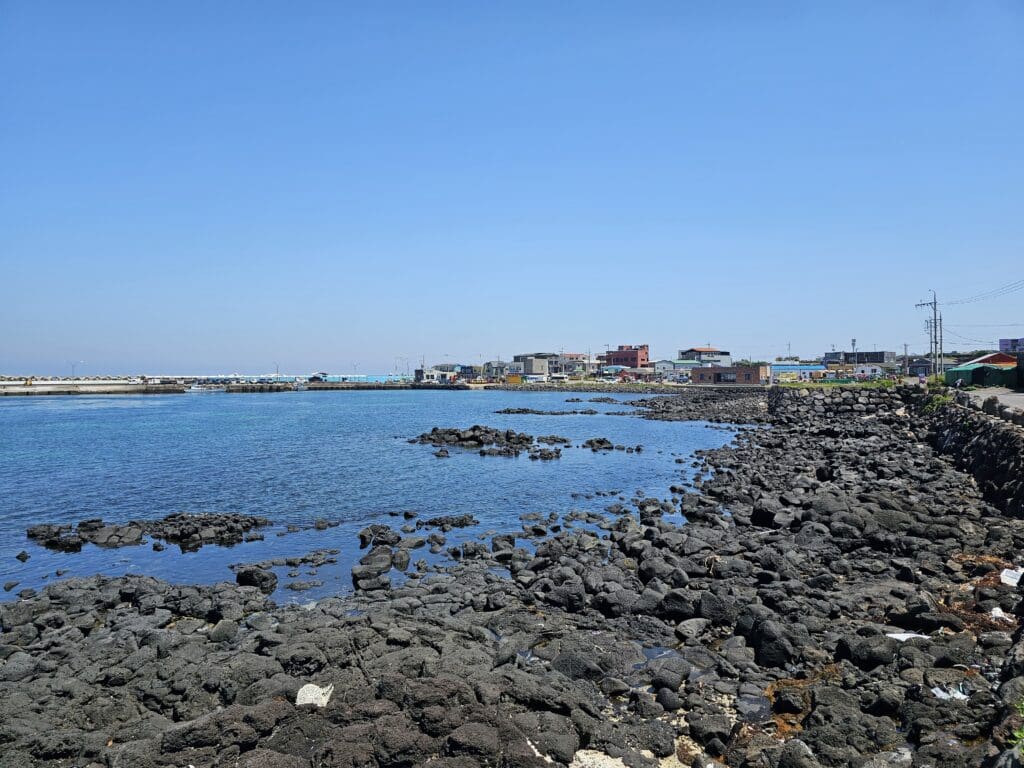
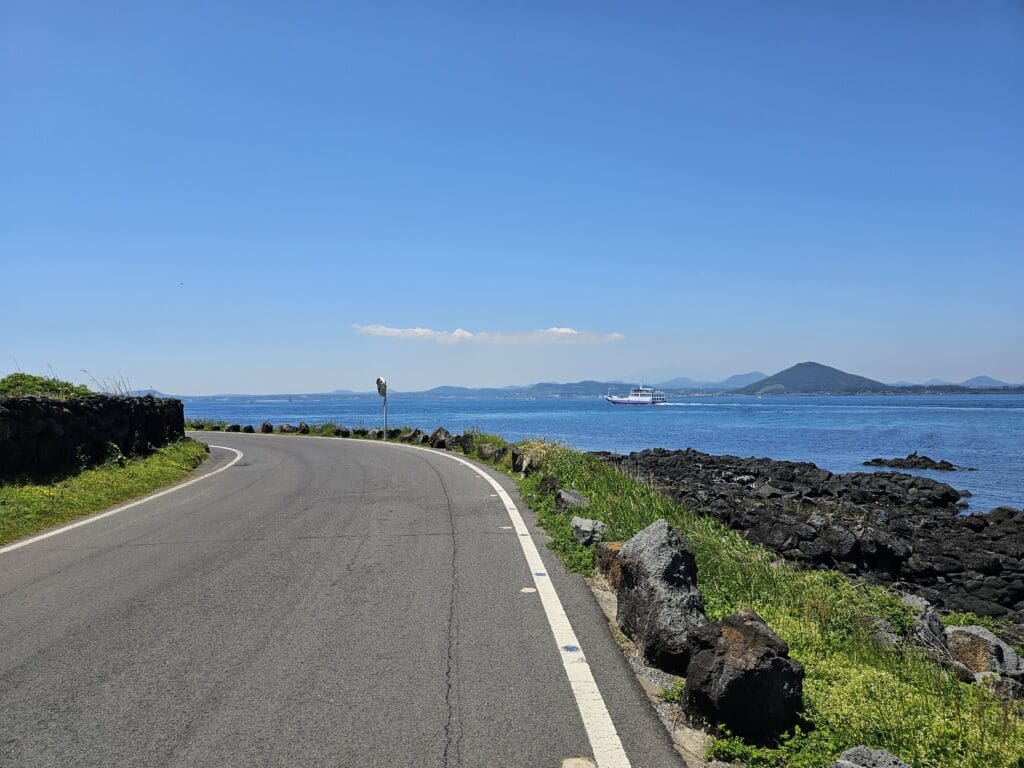

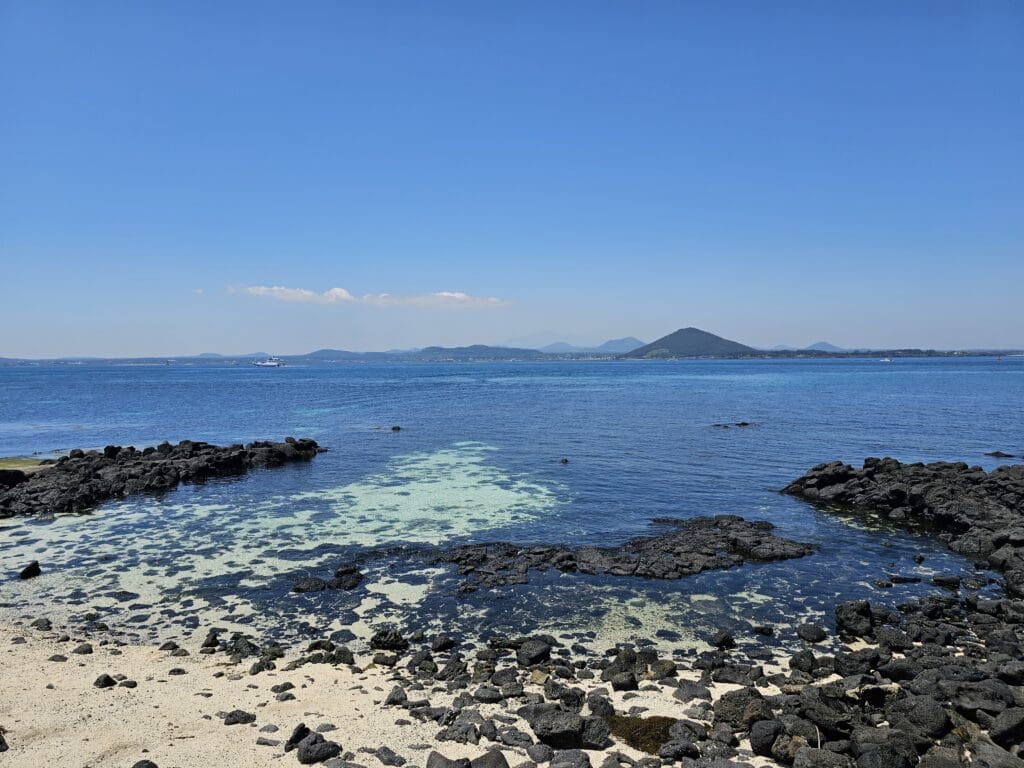
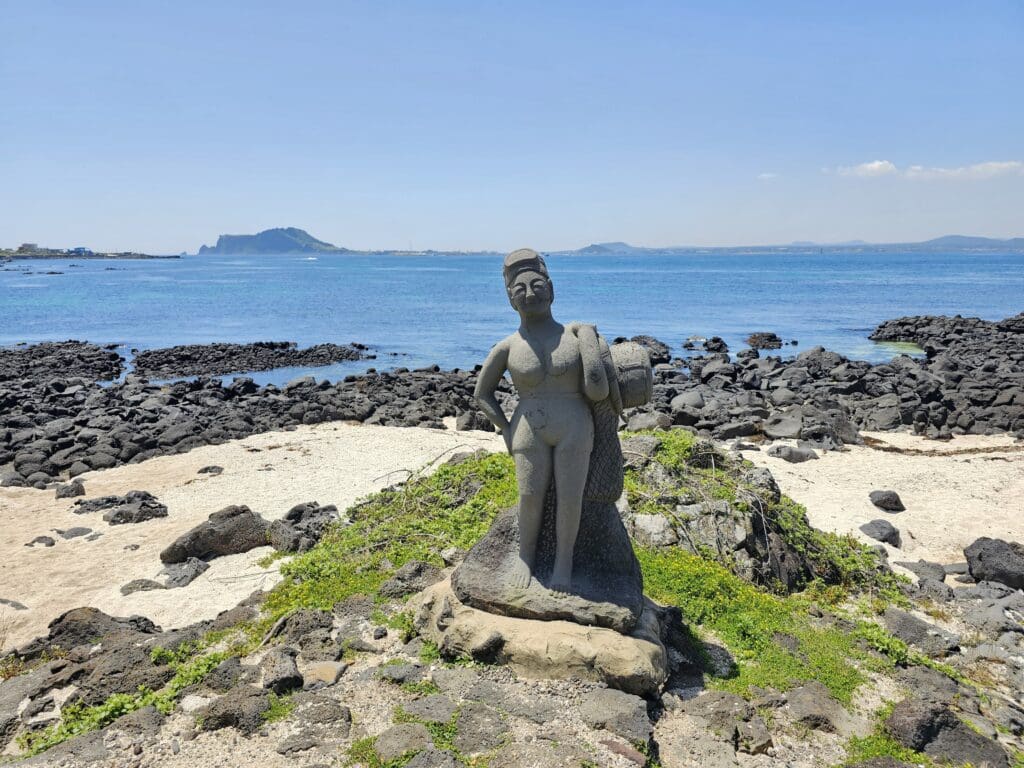
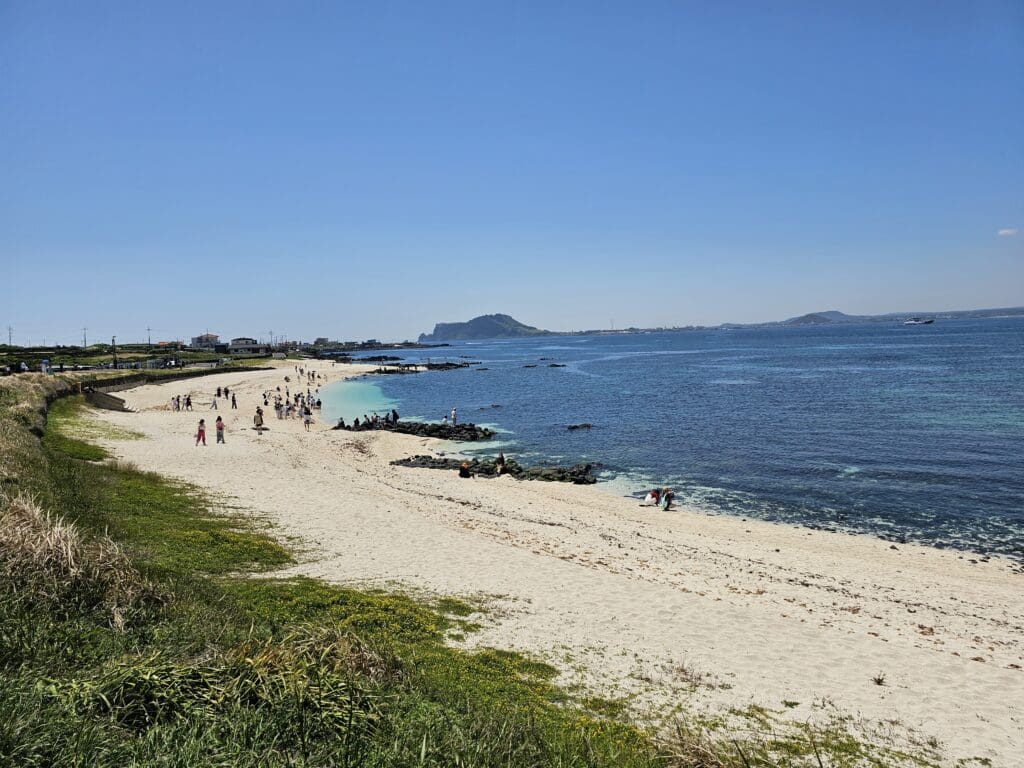
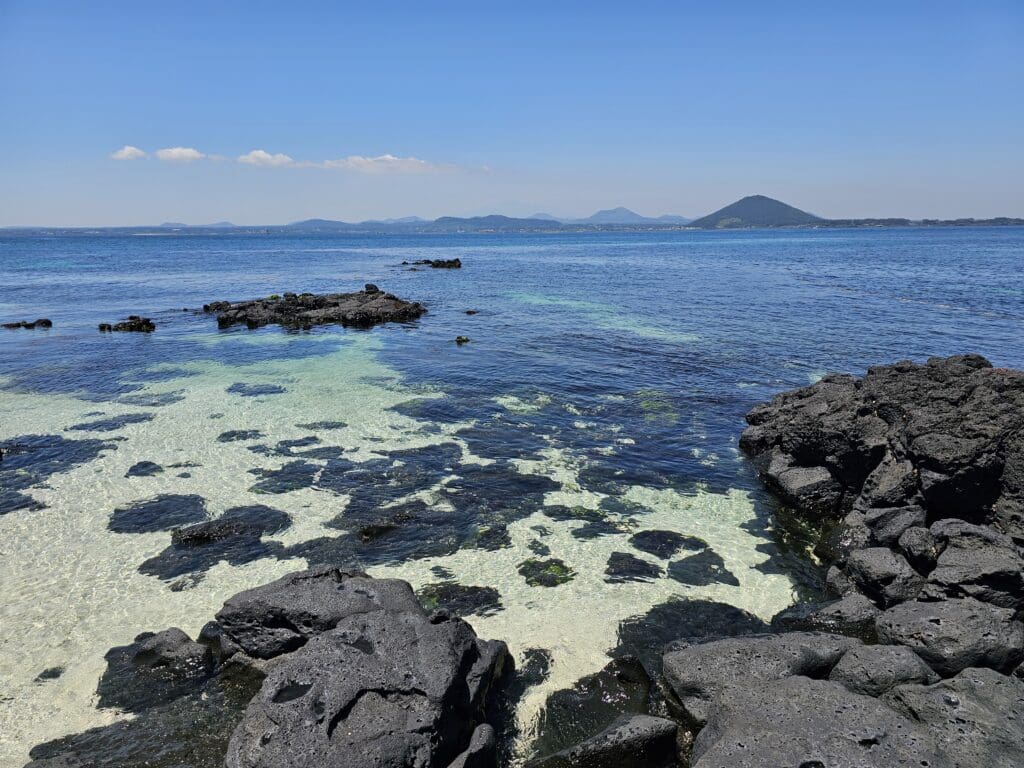
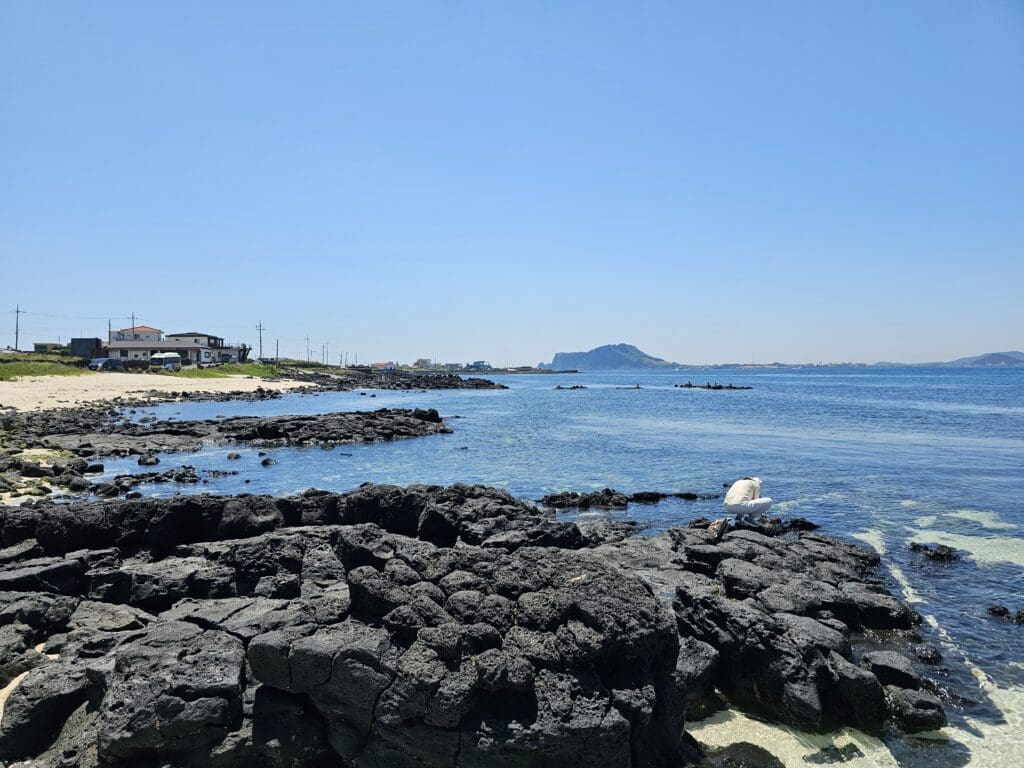

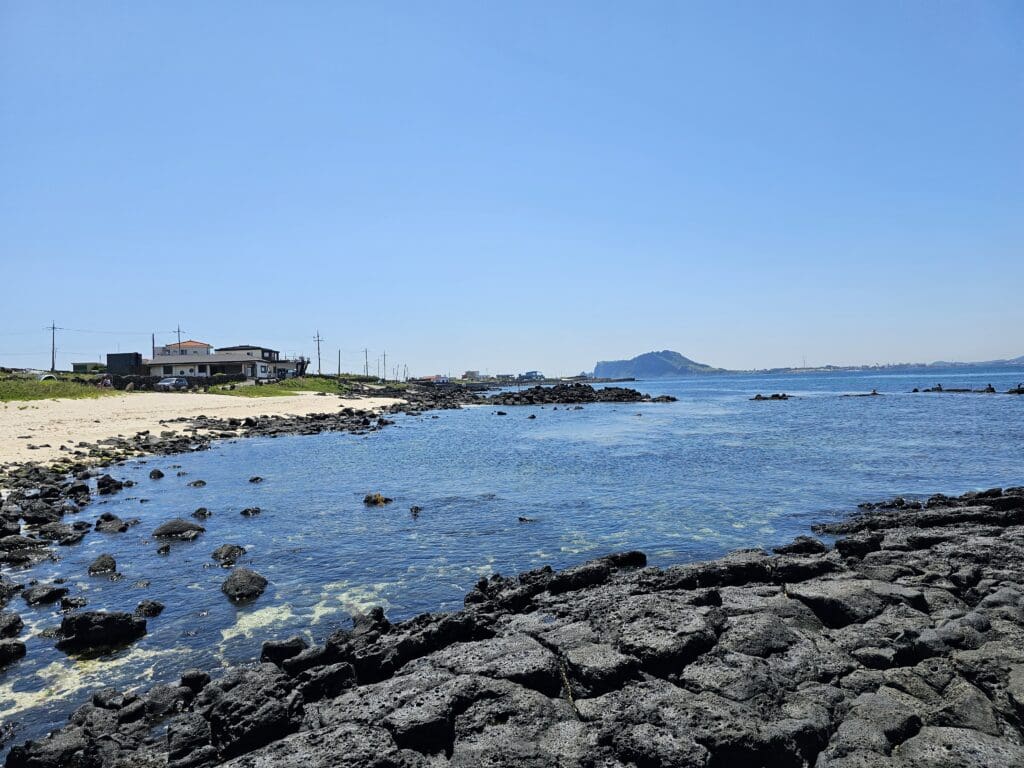
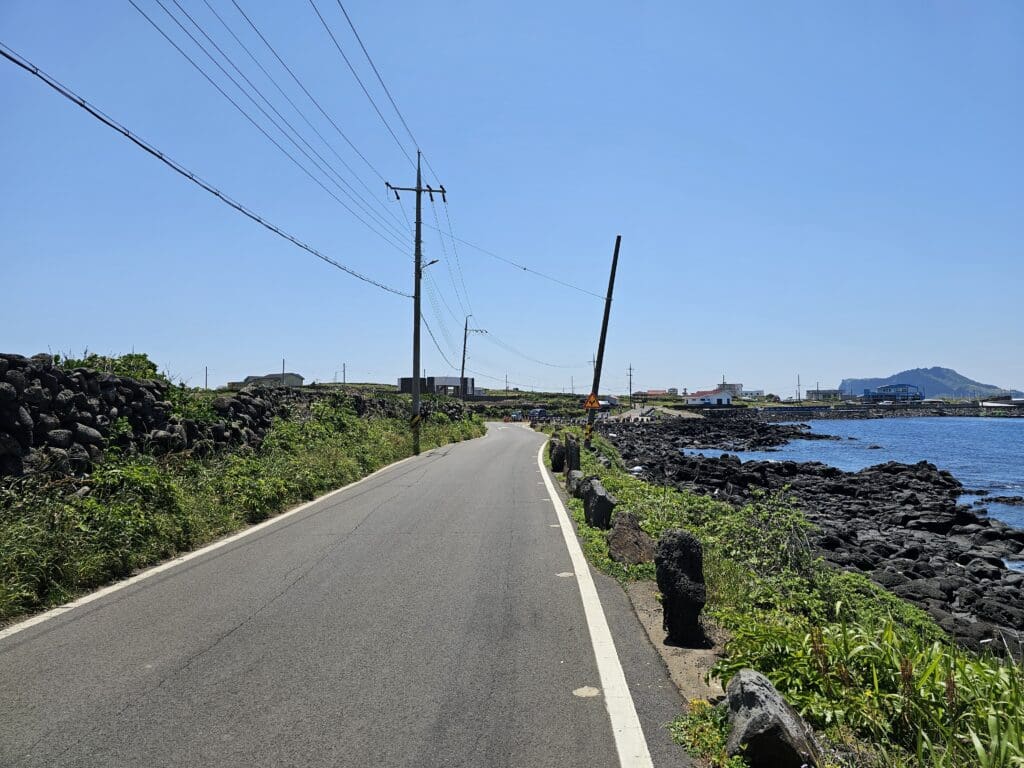
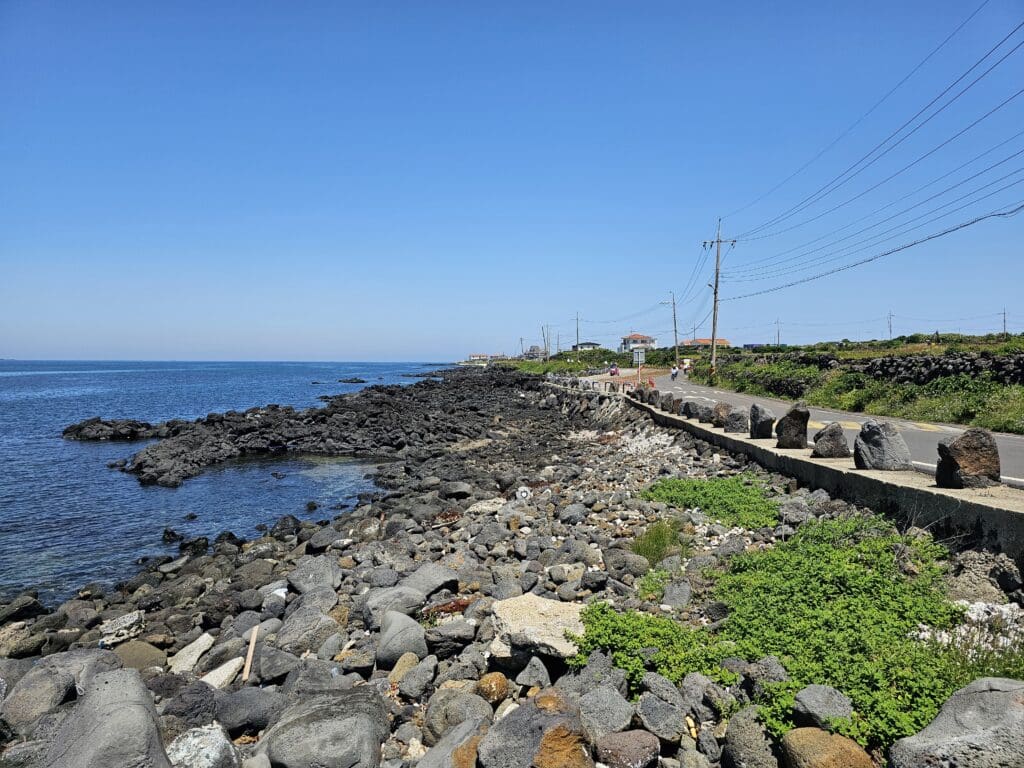
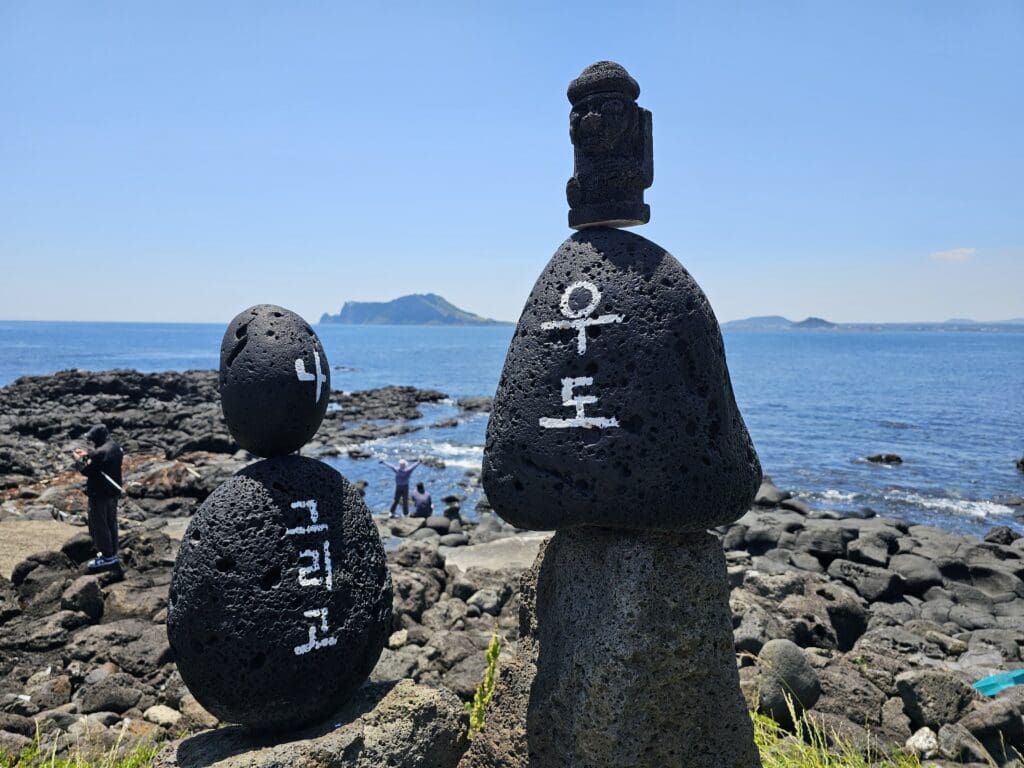

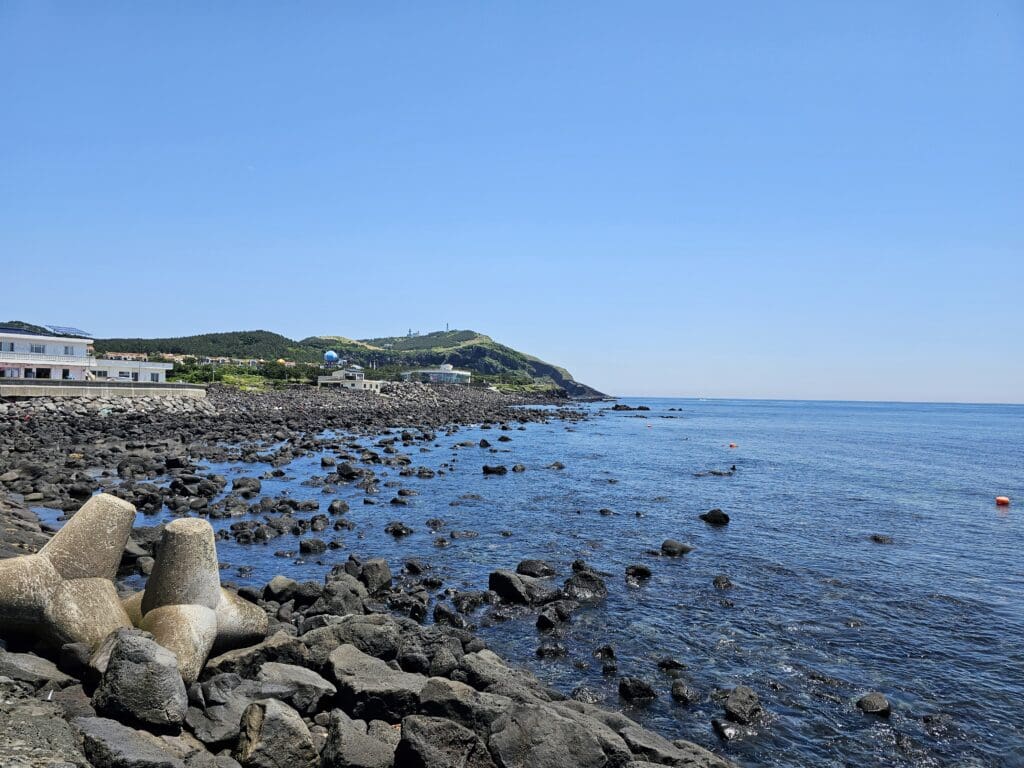

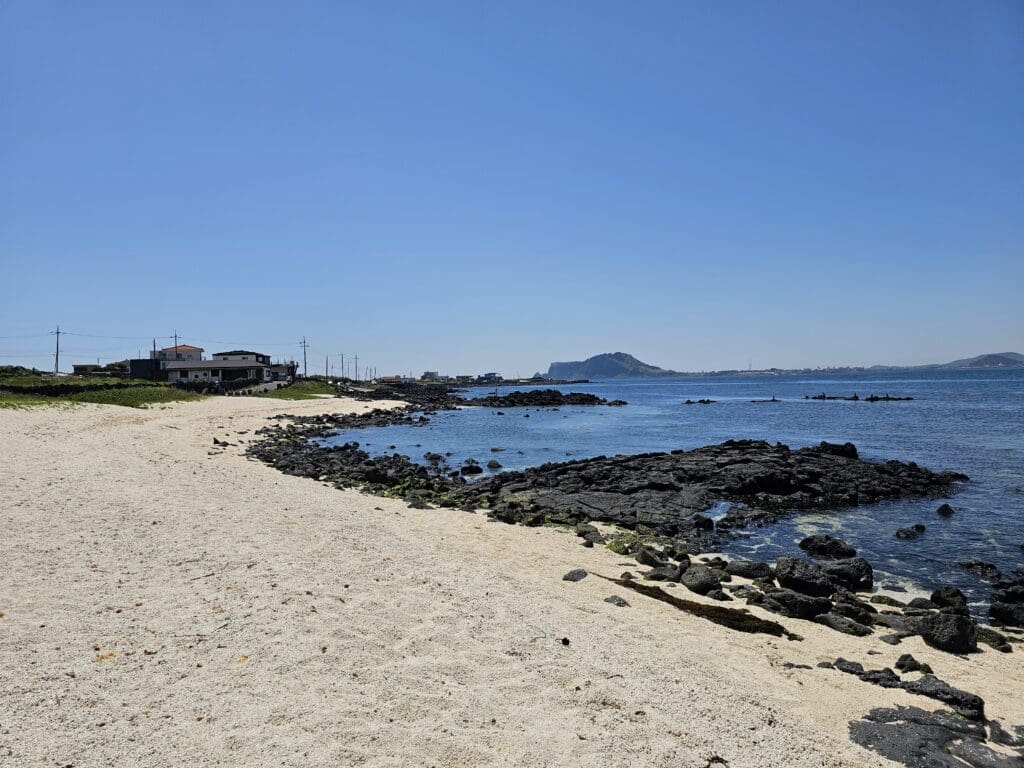
Heading down the coast, I made it to Cheonjin Port and opted to continue onwards to the lighthouse located on Udo’s southern tip. By that time, feeling slightly sunburnt and ready to head back to the ‘mainland’, I decided to return to Cheonjin, from where my return ticket would enable me to catch a ferry back to Seongsan. The return journey was operated by the seemingly slightly more modern Udo Land 2, and once again, I did not have to wait for too long before we took to the high seas for the short crossing back to Seongsan Harbour.
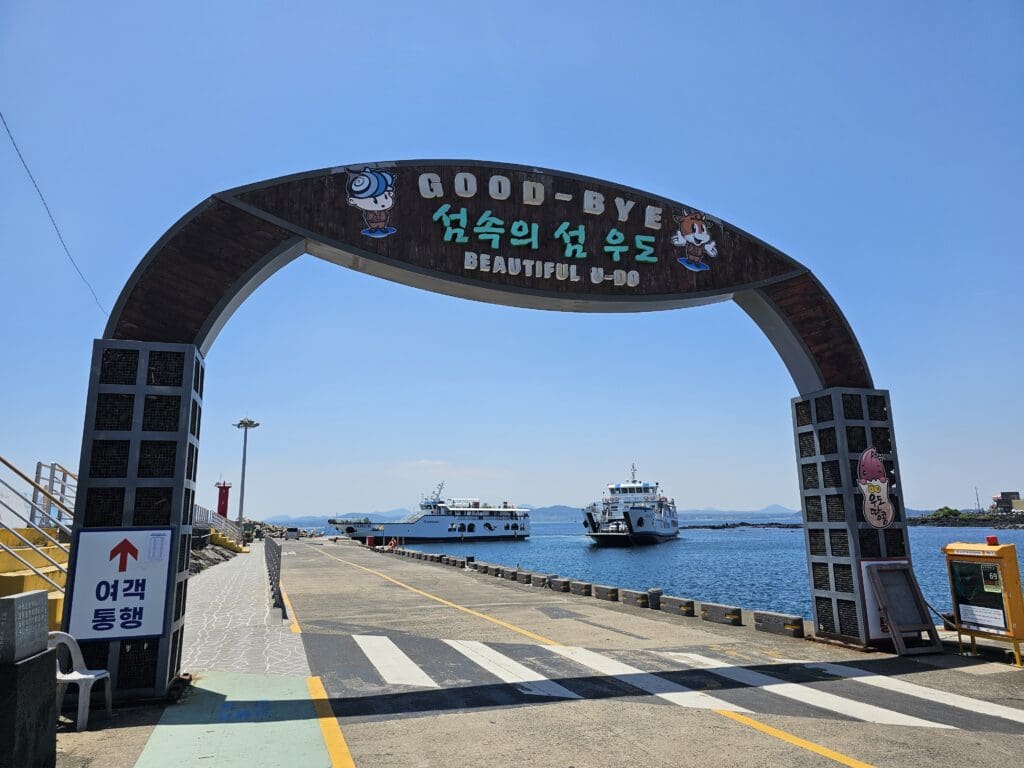
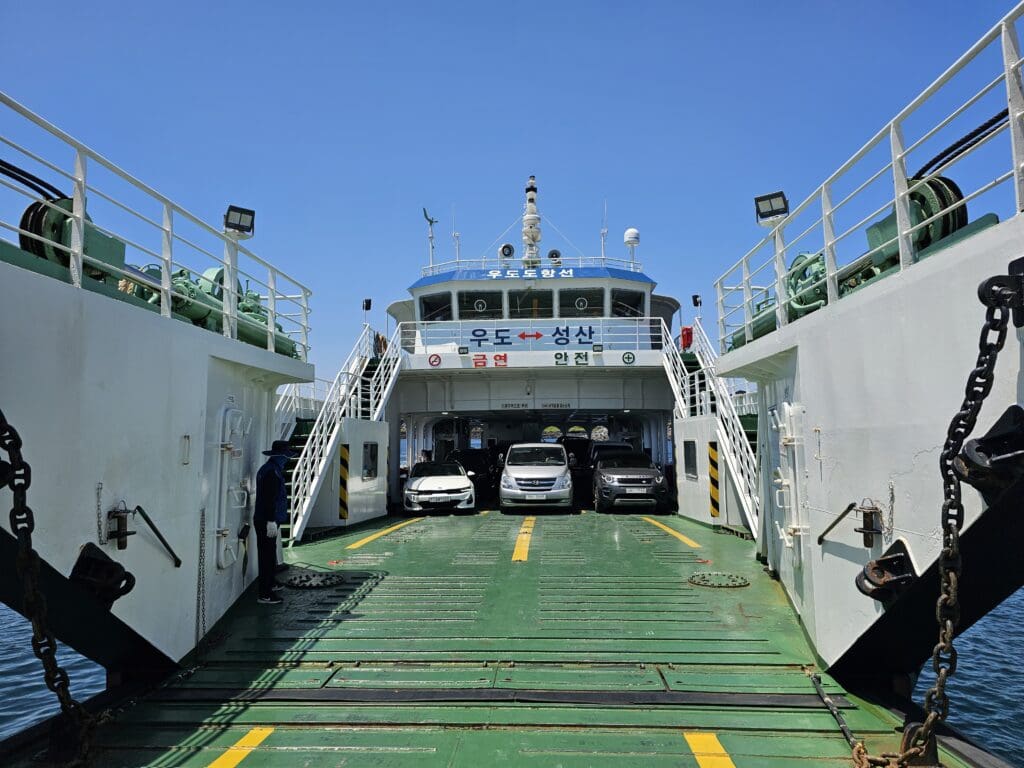
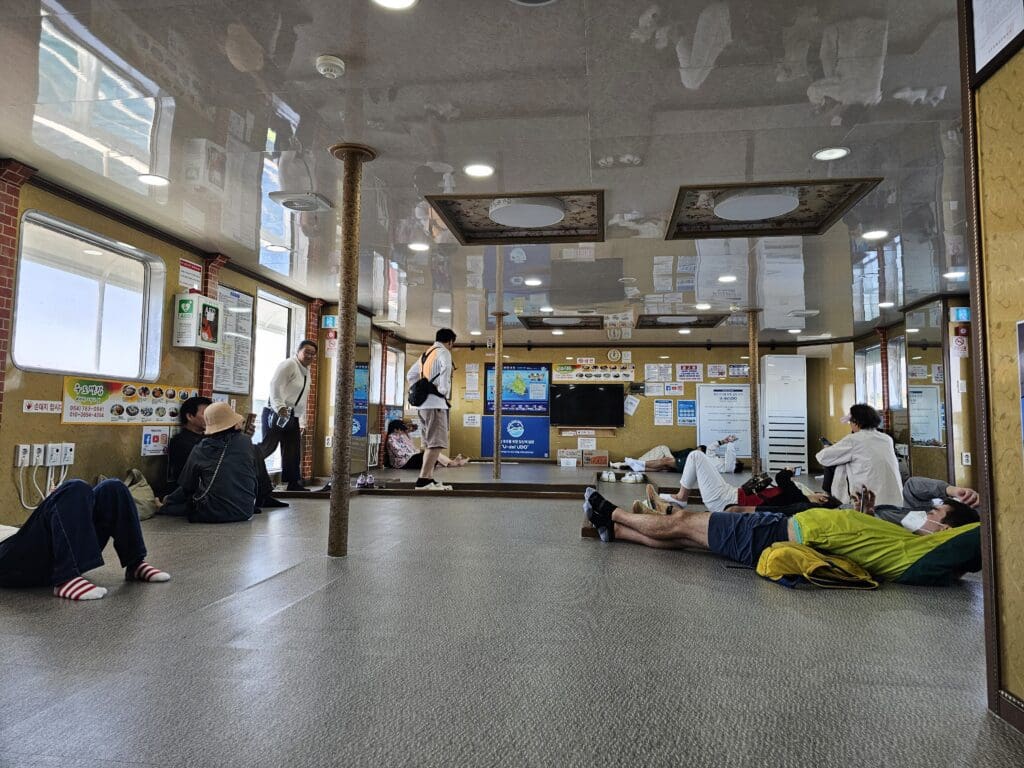

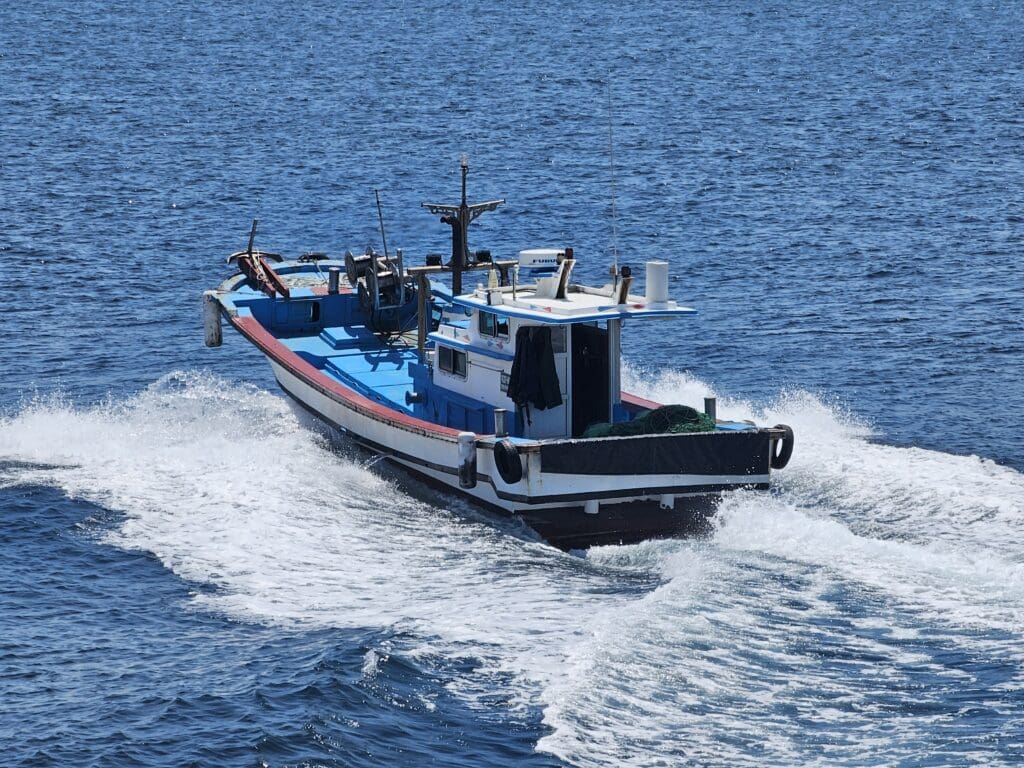
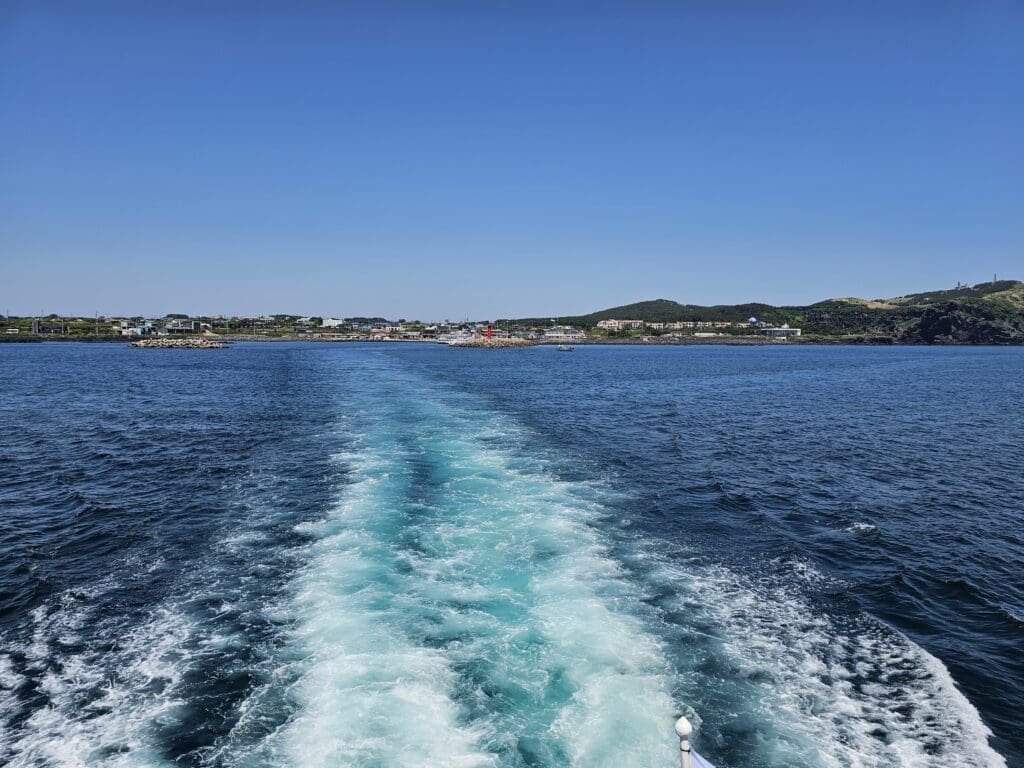

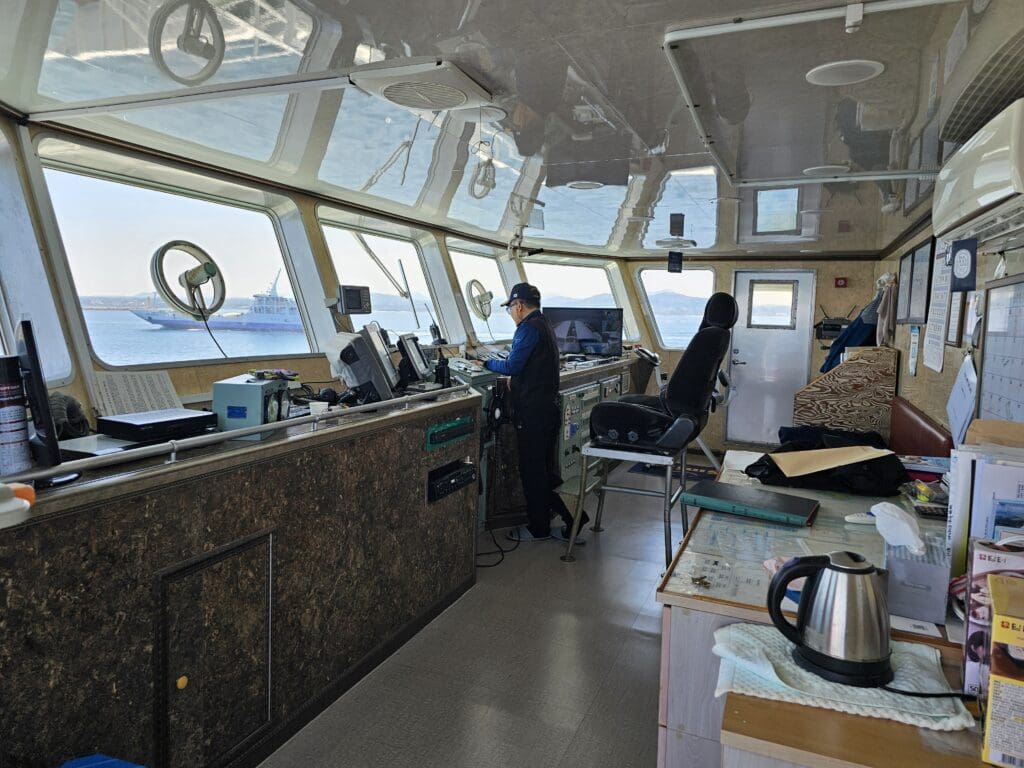
Once back in Seongsan, I spent the remainder of the day wandering around the village and admiring the sunset before retiring to my pension for the night.
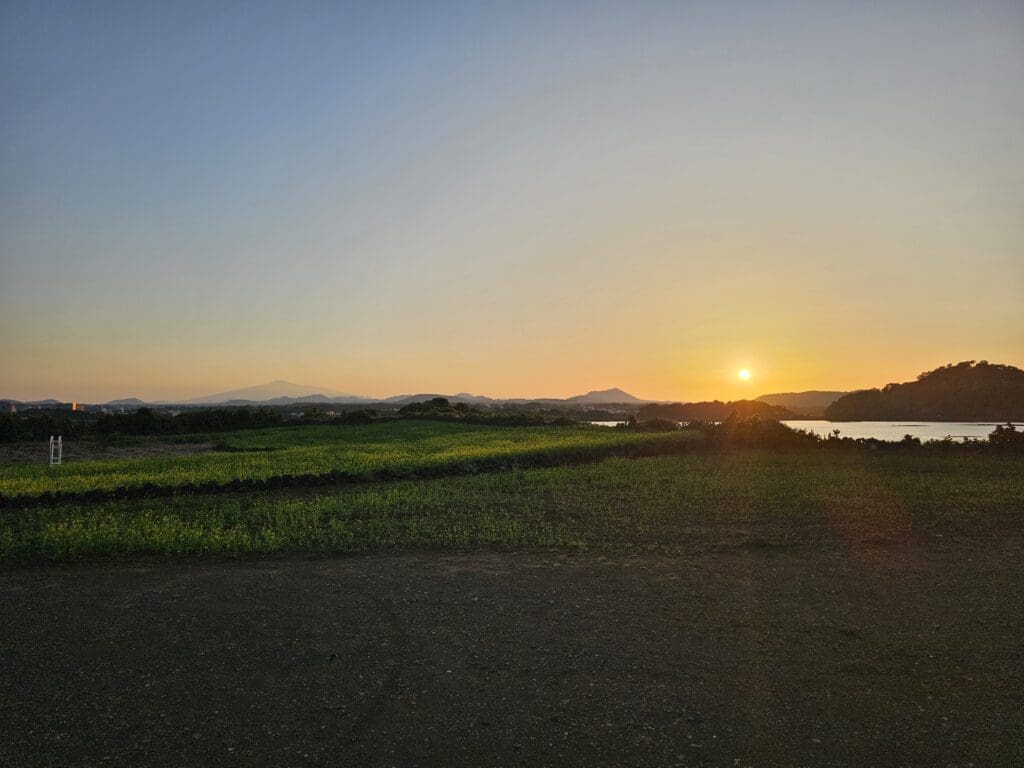

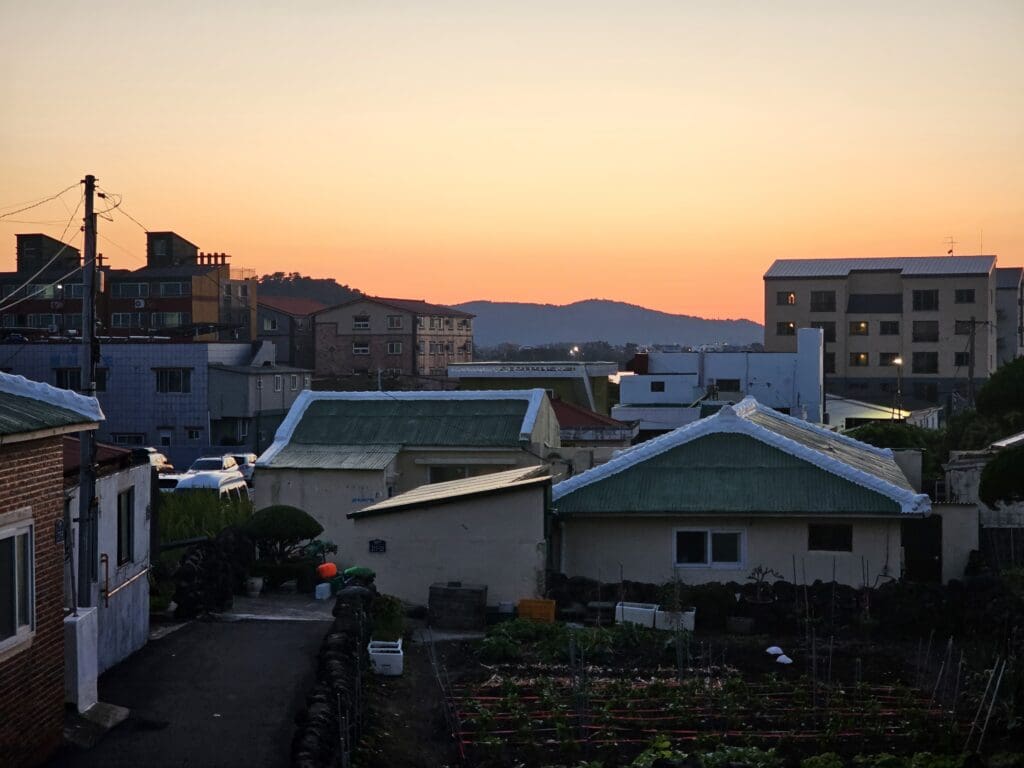
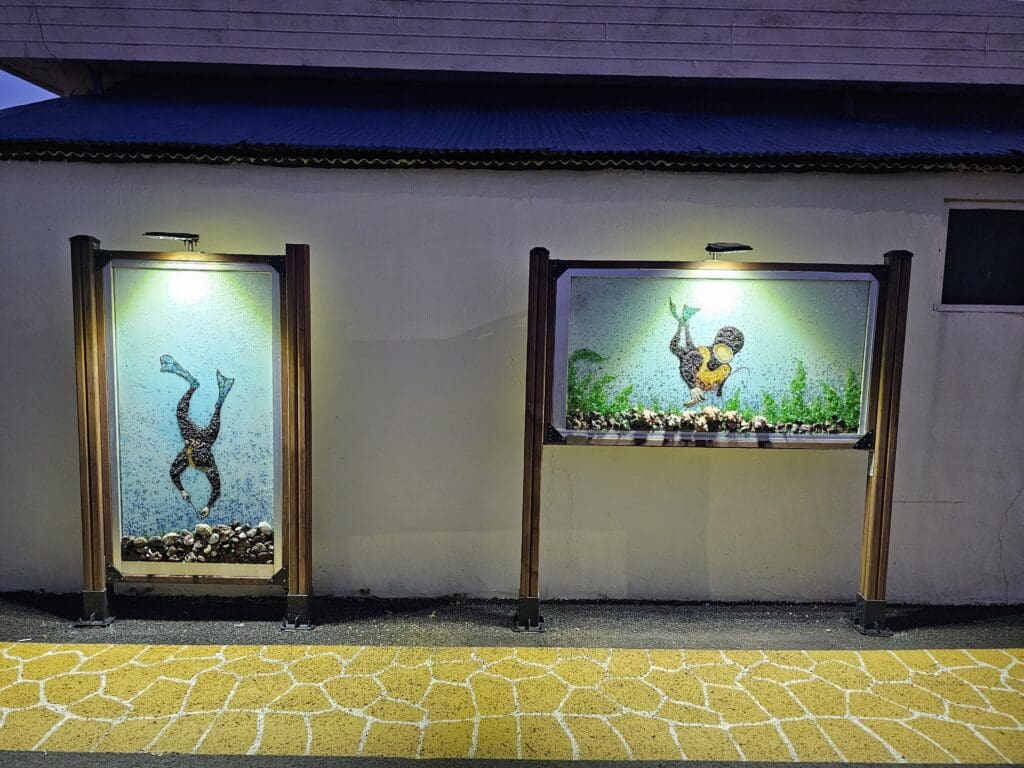
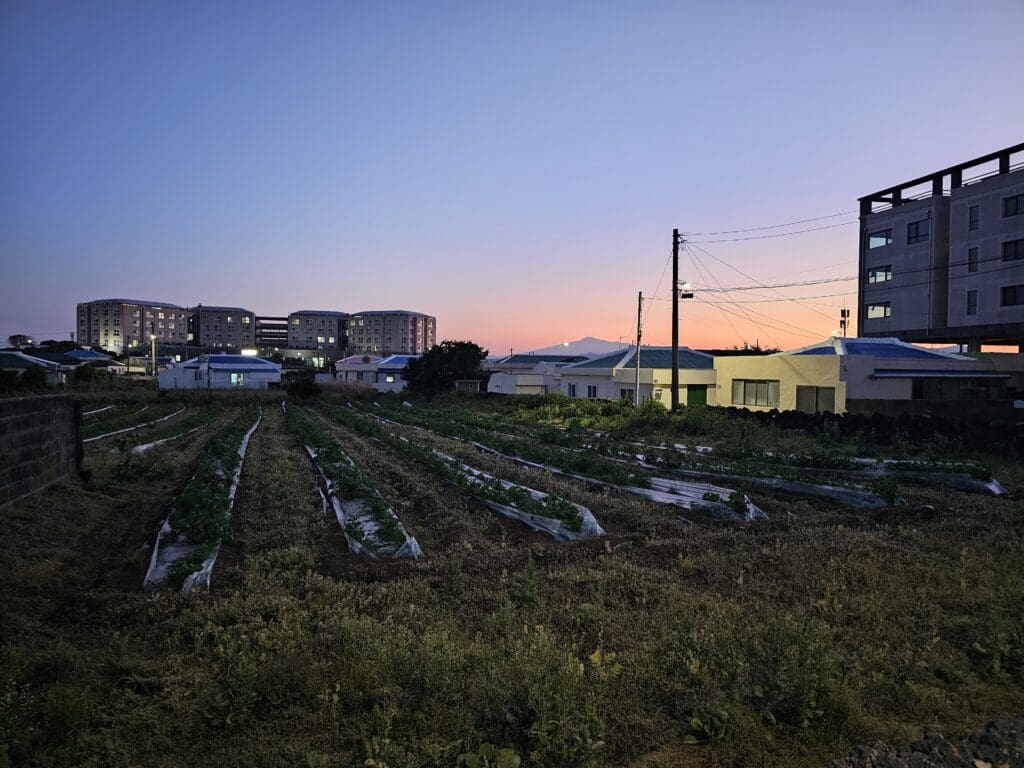
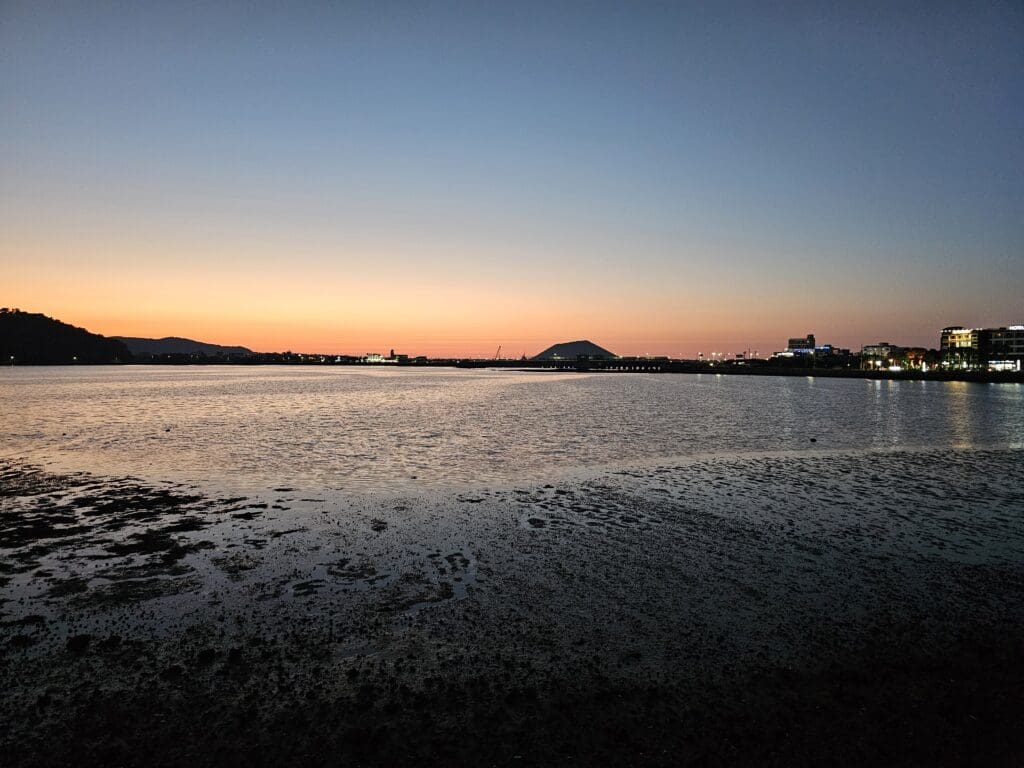
Day 3 – Exploring the Coast
On the third and penultimate day of my Jeju adventure, the time came for me to leave Seongsan and continue on my journey. However, I was to be joined by a friend who was coincidentally visiting Jeju at the same time. Agreeing to rendezvous at the local branch of Fritz Coffee, I settled on a breakfast that consisted of a cappuccino and a pastry and ate this as I watched the crashing waves and waited for them to appear. Soon hitting the road, we travelled anti-clockwise along the coastline and eventually stopped for lunch in a popular seaside spot where we indulged in abalone porridge (전복죽) and grilled fish accompanied by a healthy number of banchan, or side dishes.


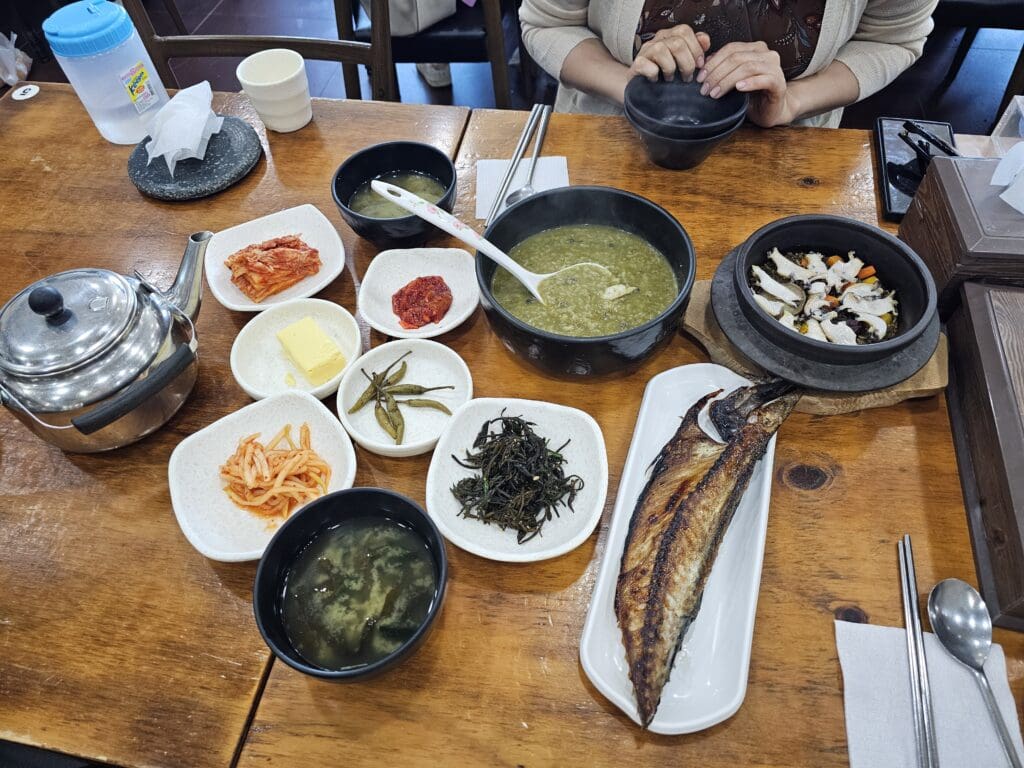
Once sufficiently fuelled up, we stopped for a post-lunch wander along the white sands of Woljeong Beach, which sits on Jeju’s northern coastline and is roughly halfway between Seongsan and Jeju City. The latter being where we would stay for the night. Unfortunately, it wasn’t long before the clouds rolled in, and I saw my first Jeju rainshowers of the trip, which lasted all afternoon and saw us head to the accommodation rather prematurely.
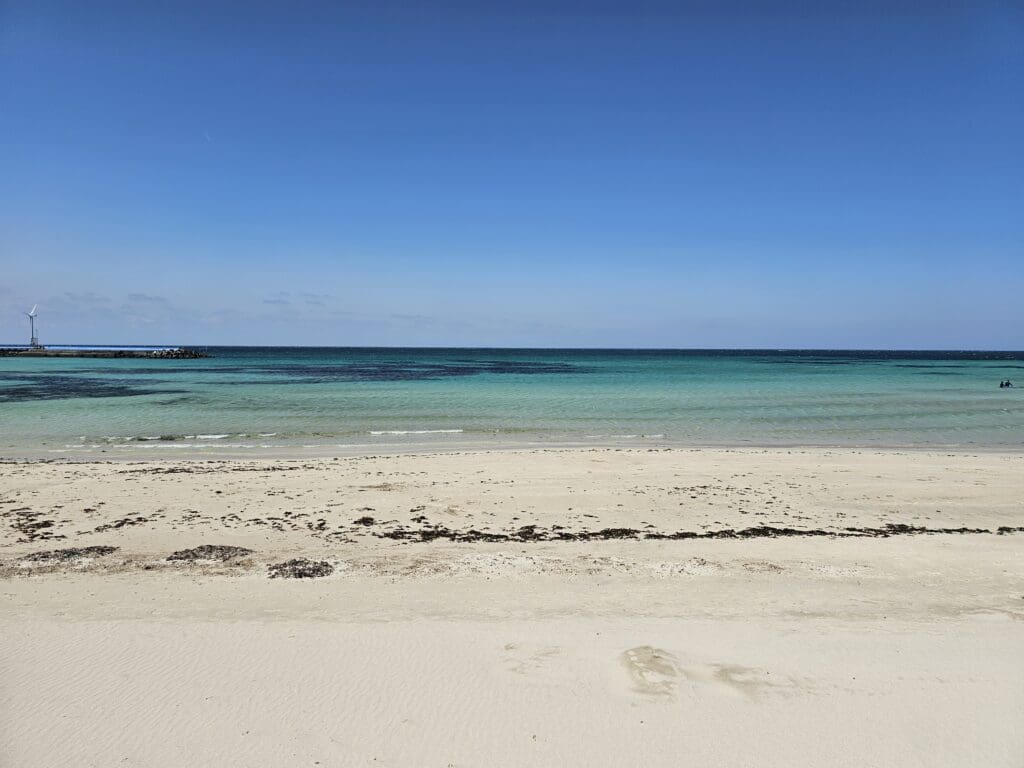
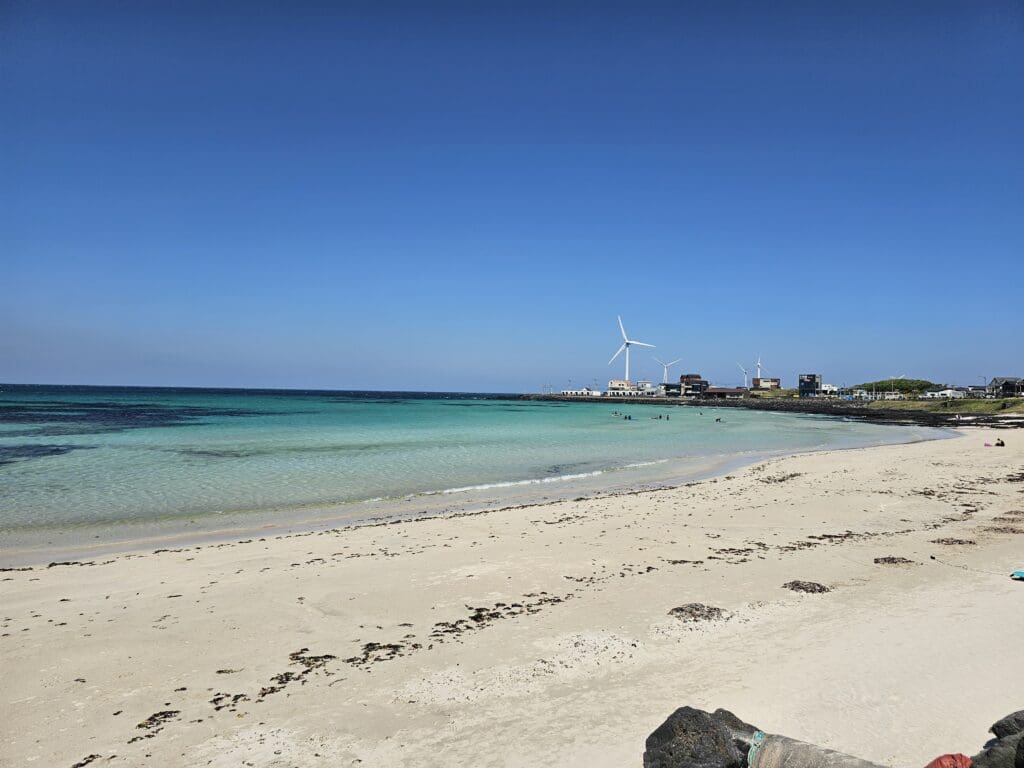
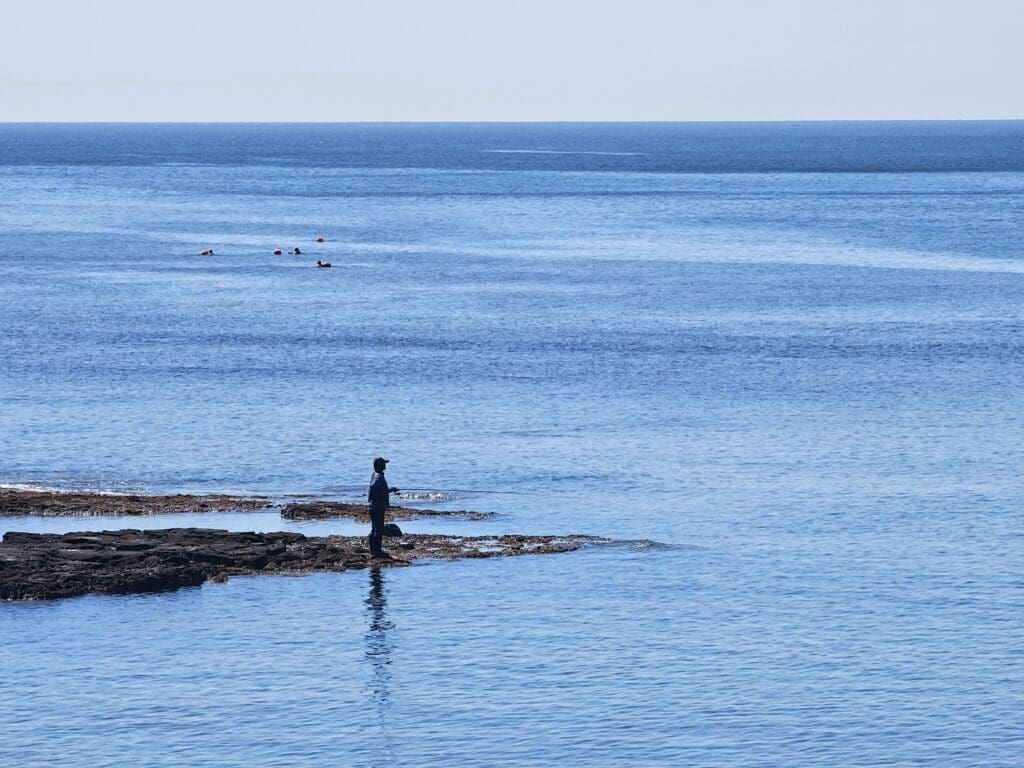

Thankfully, the rain showers cleared up just in time for sunset, so we headed to the coast to watch the orange glow of dusk as the waves crashed into the shoreline before we made our way to a restaurant for dinner. Making the most of Jeju’s plentiful seafood restaurants, we decided to have raw mackerel, a local delicacy. Paired with a couple of local beers for dessert!
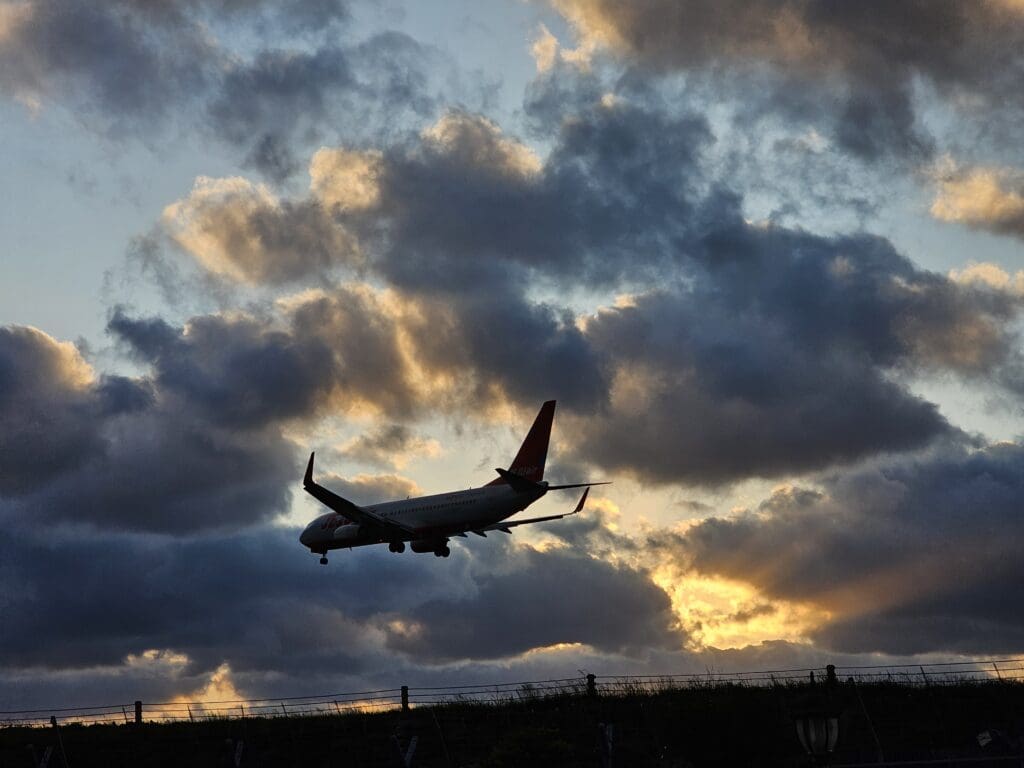
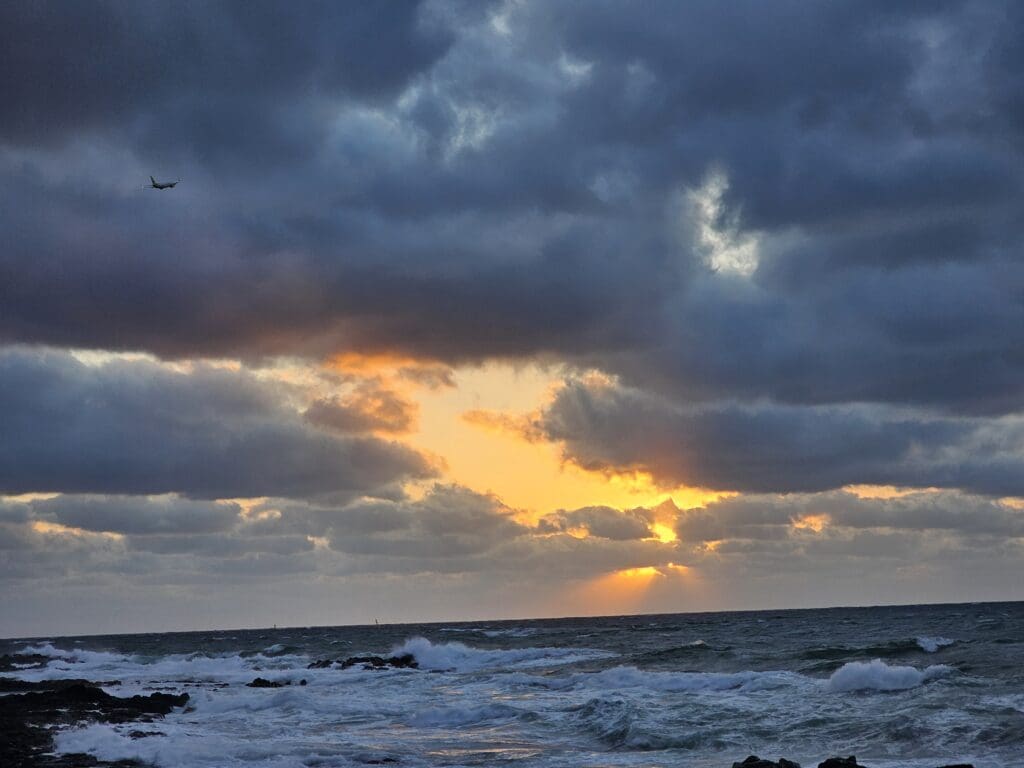
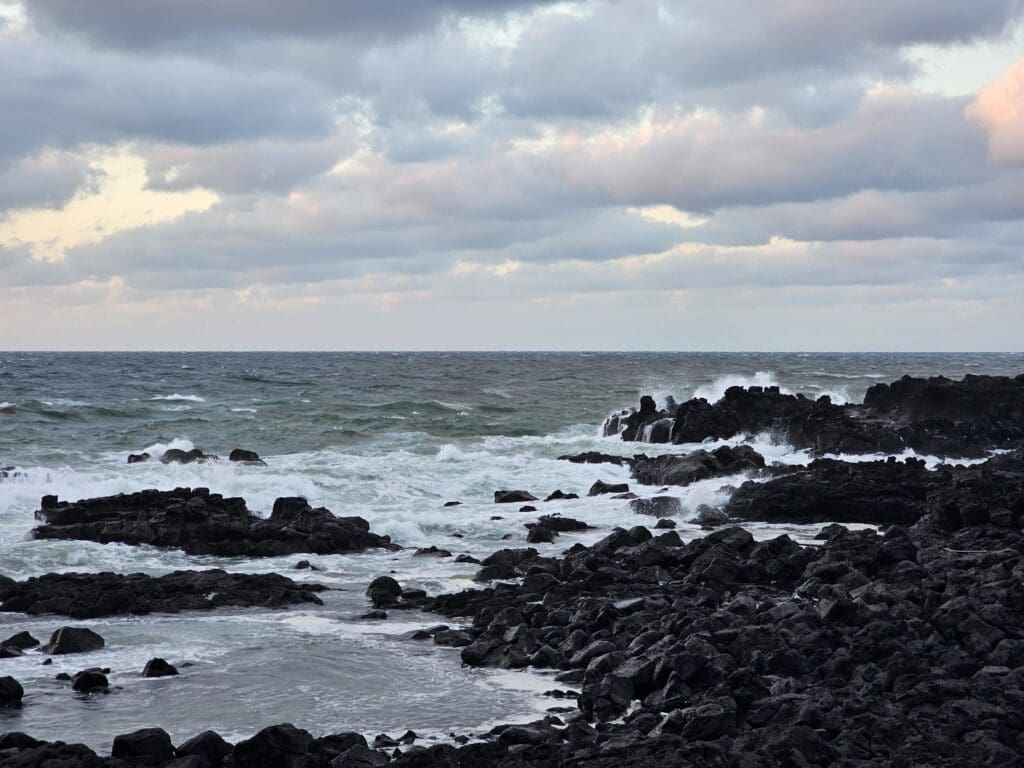
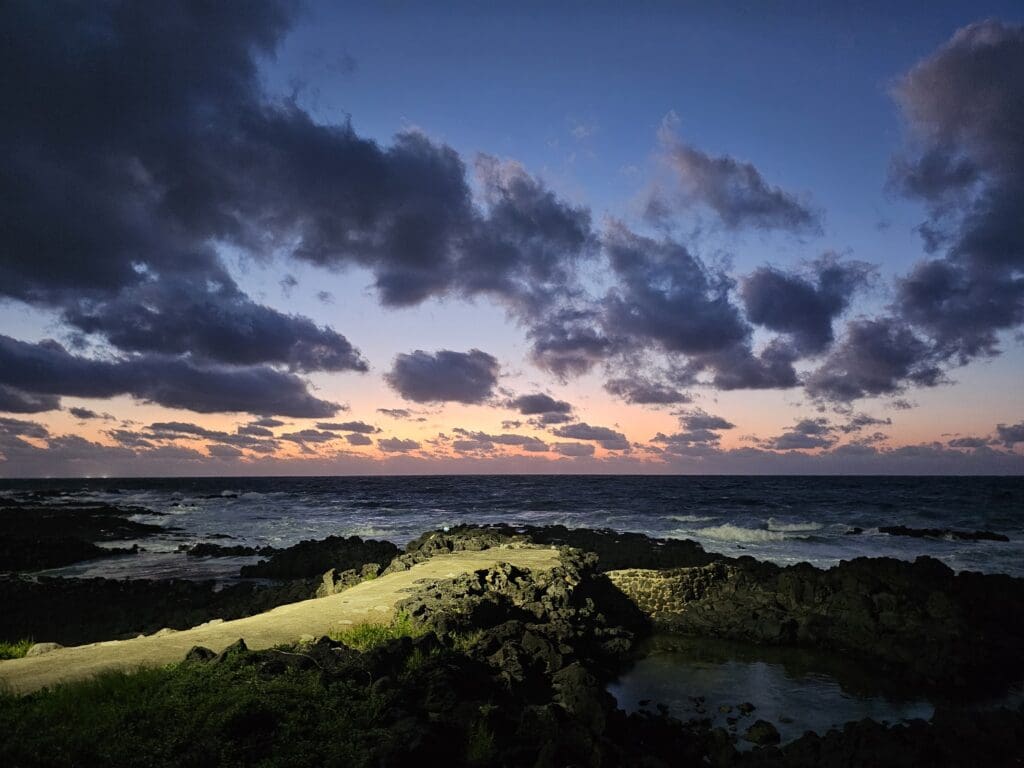
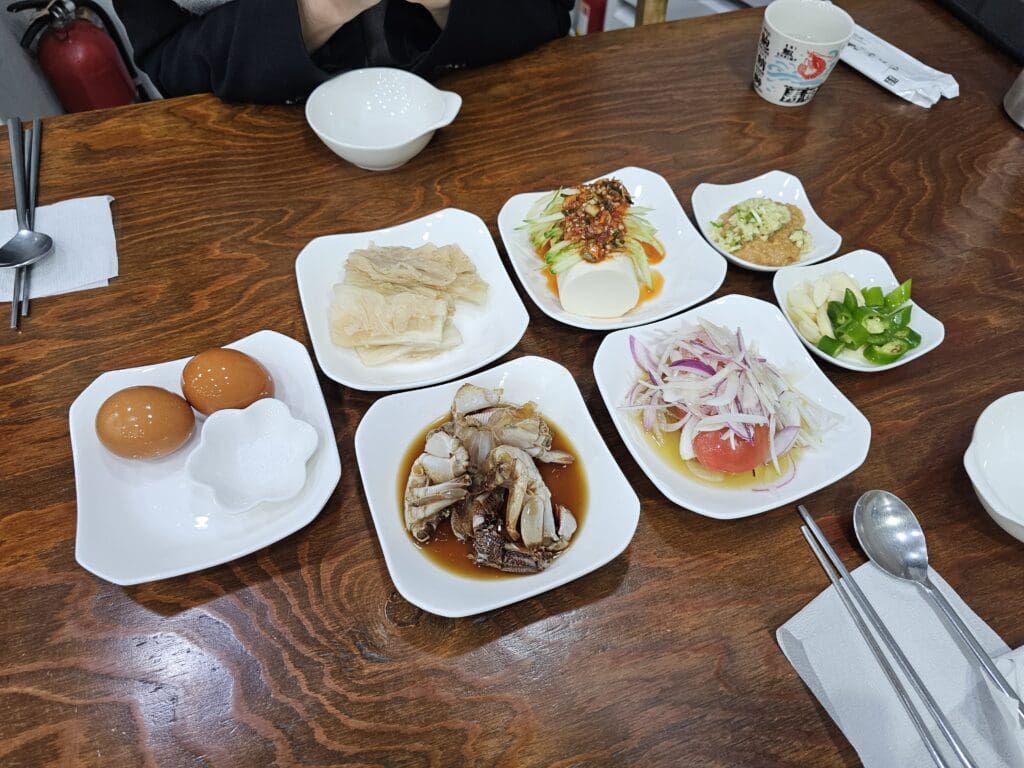
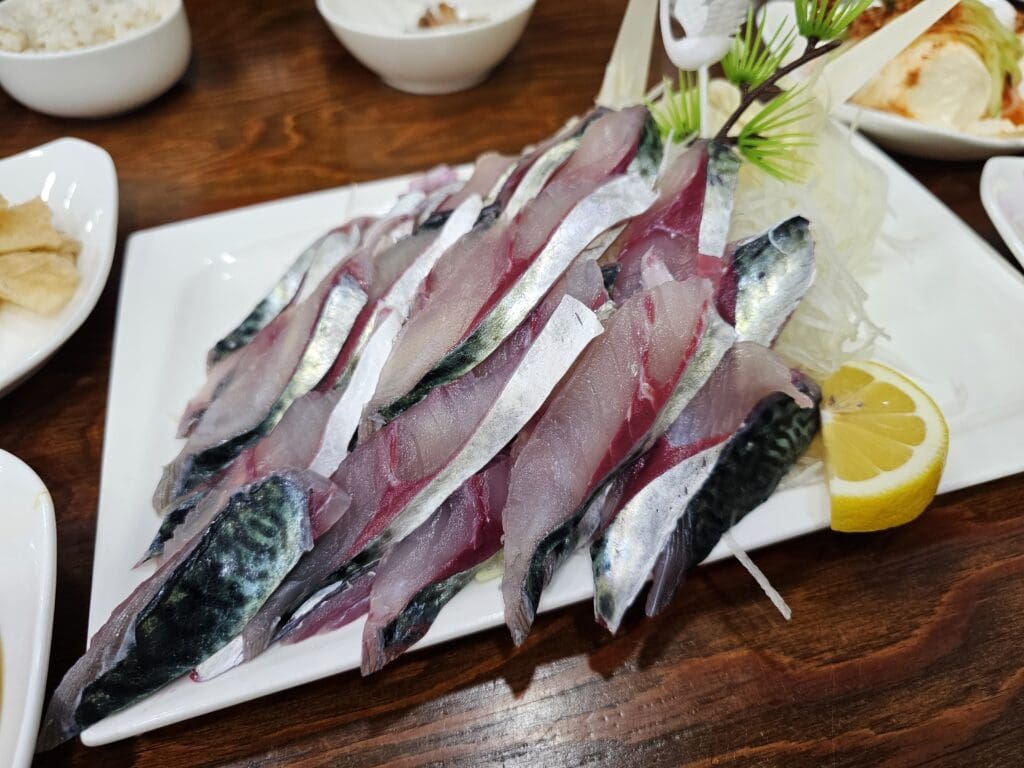
Day 4 – Seogwipo
Having a full day in Jeju before I would fly to Busan, I woke up bright and early before going on a walk down to the nearby bakery for an overpriced coffee and pastry for breakfast. Staying near the airport allowed me to do some impromptu plane spotting as aircraft crossed just overhead moments before touching down on Jeju.
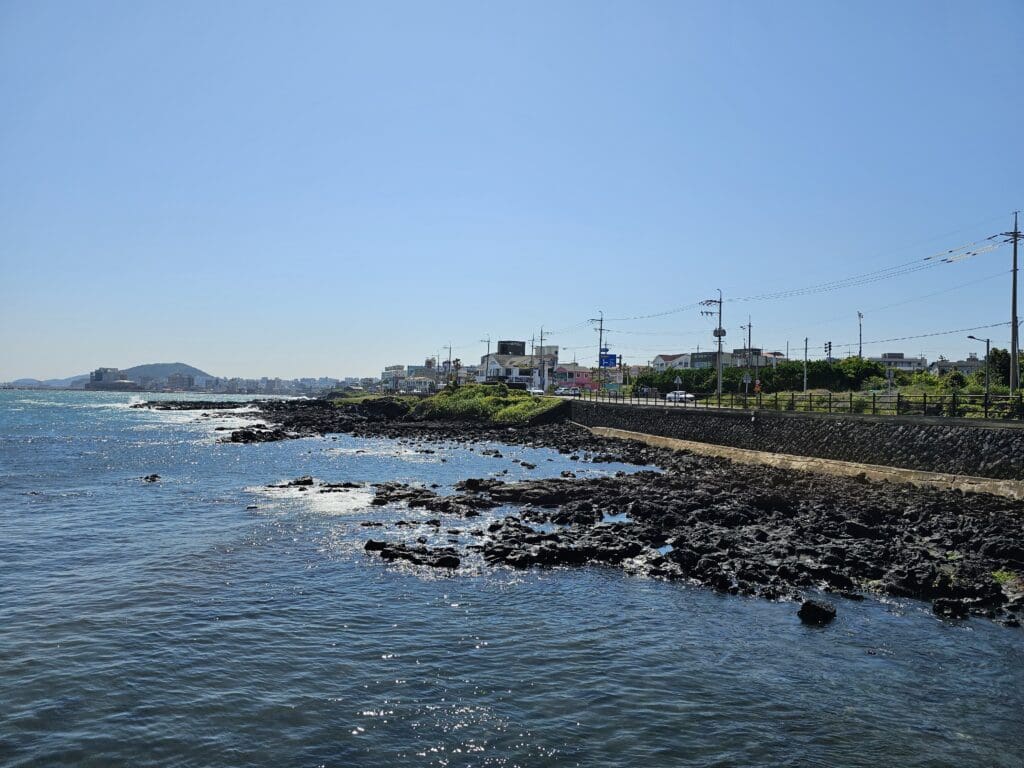
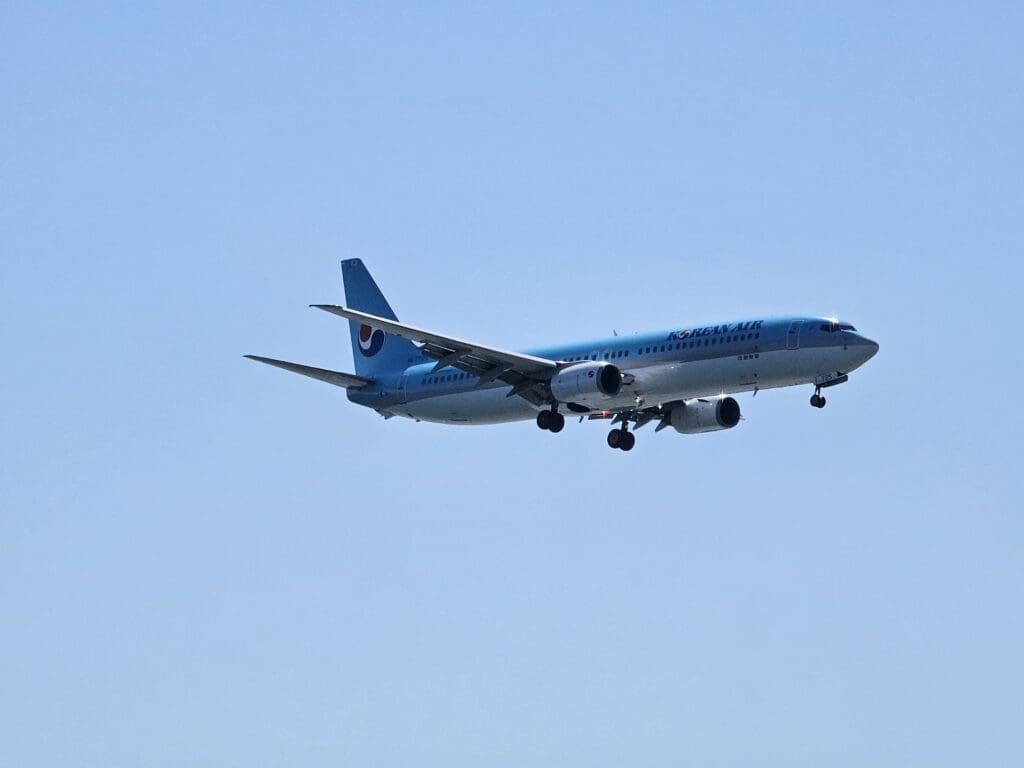
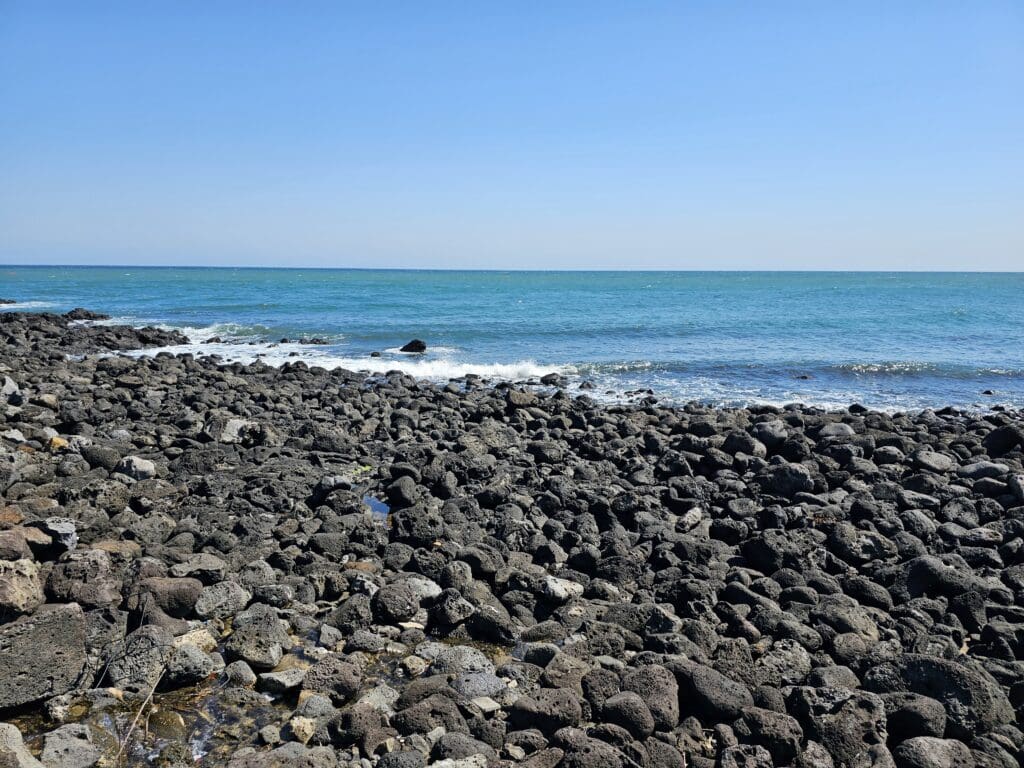
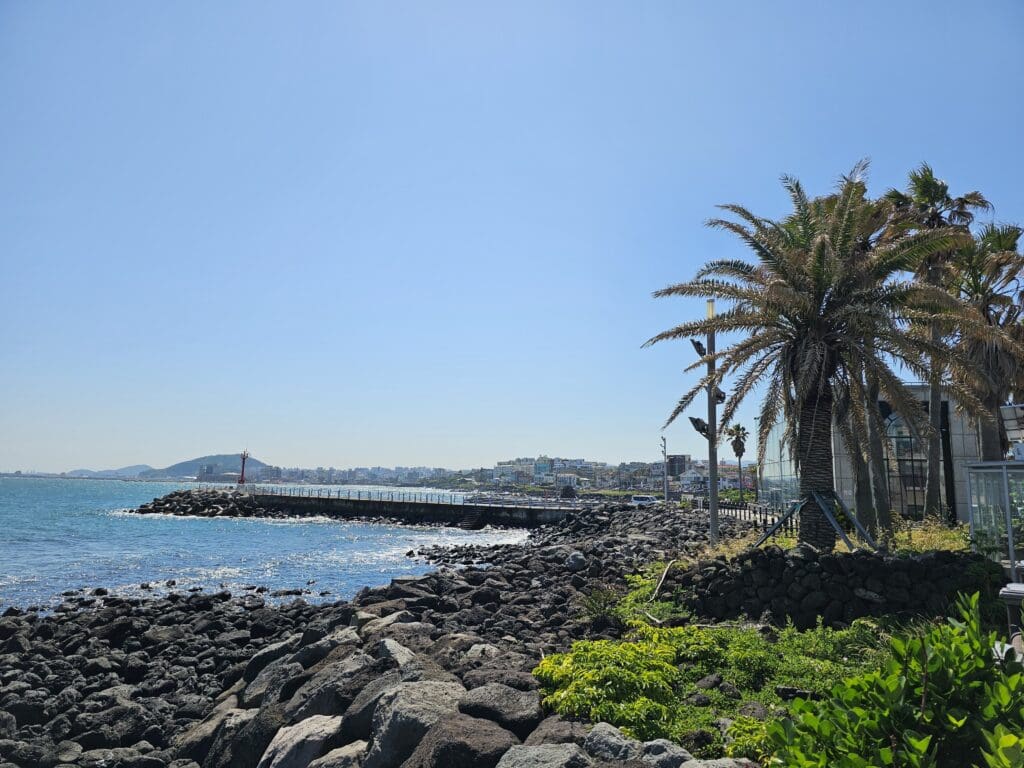
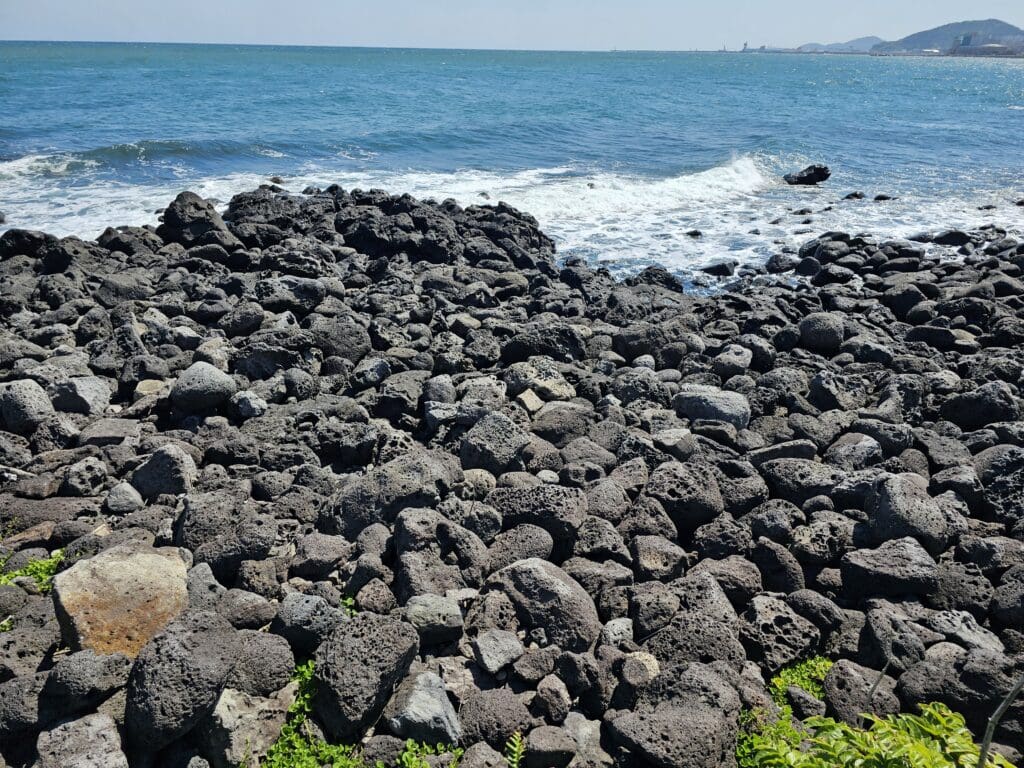
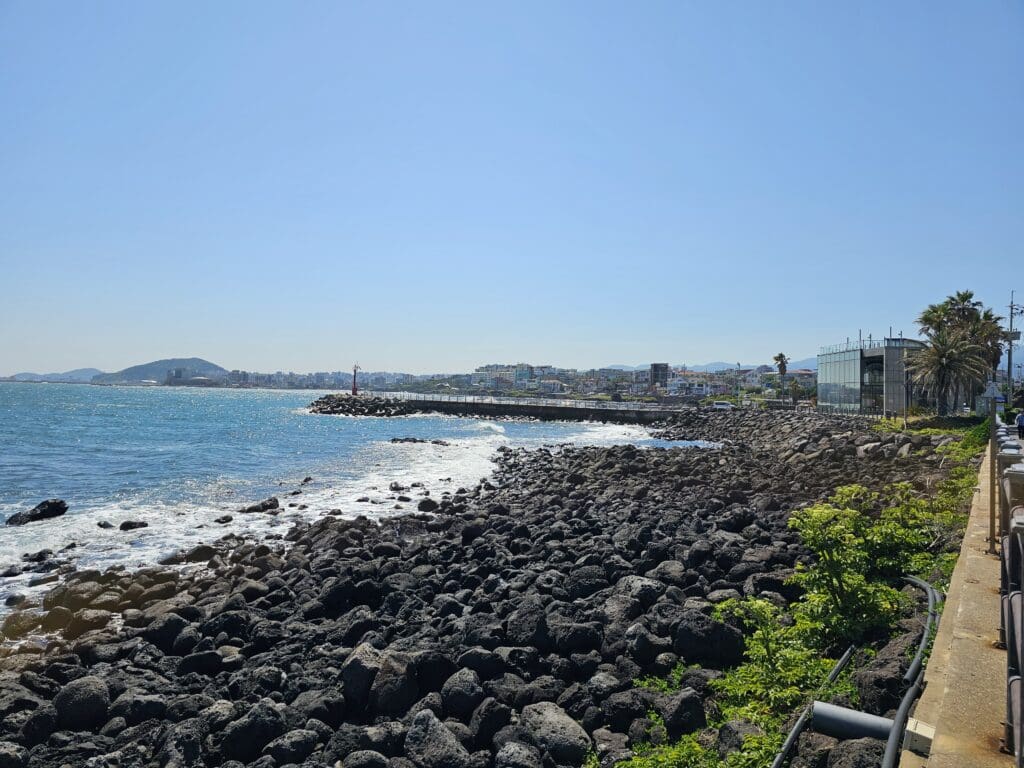
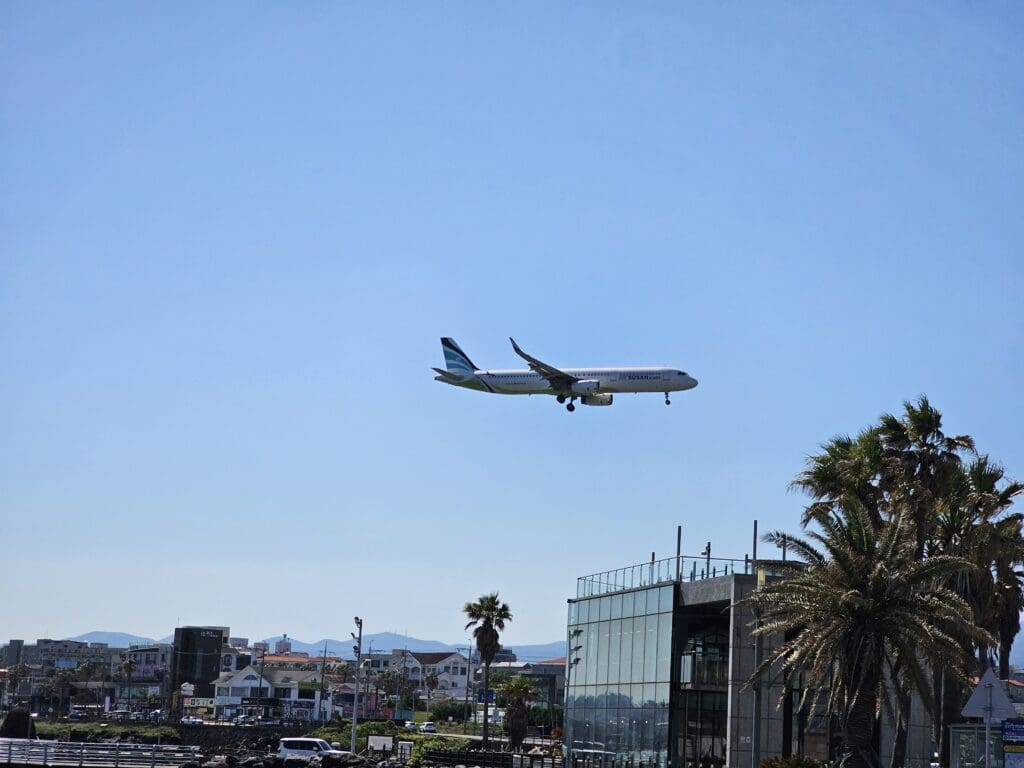
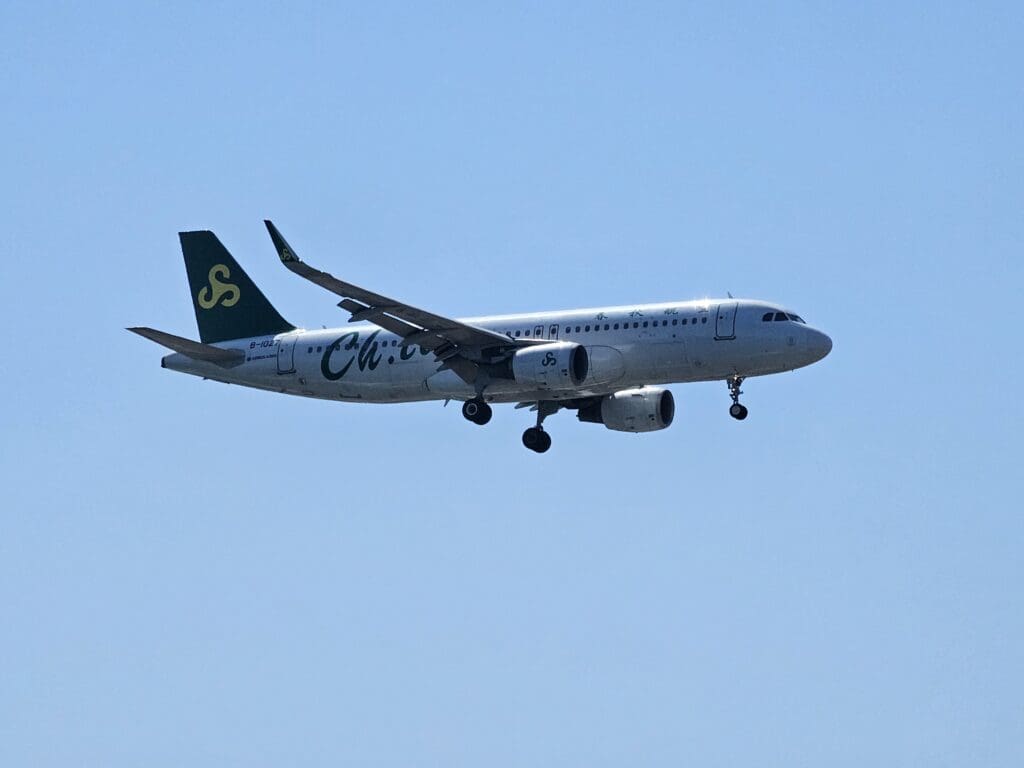
Soon, we hit the road for another day of driving and continued heading anticlockwise around the island until we reached Seogwipo, Jeju’s second largest city, home to around 182,000 residents. There, we opted for another seafood lunch, this time enjoying galchi jorim, or braised cuttlefish.
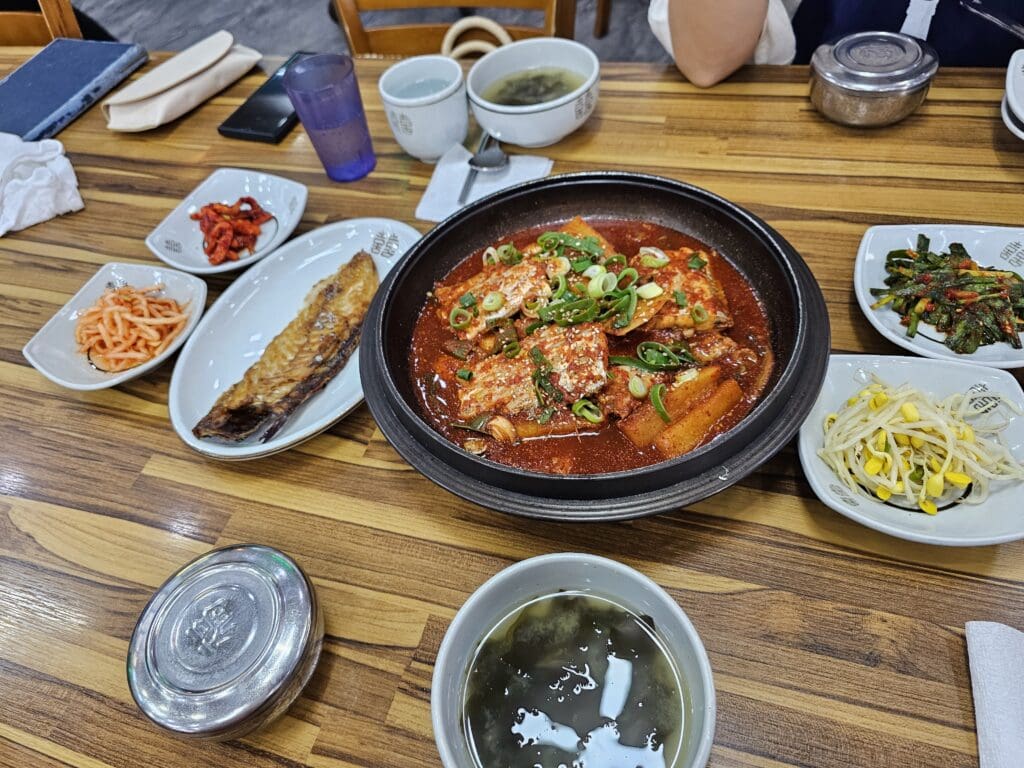
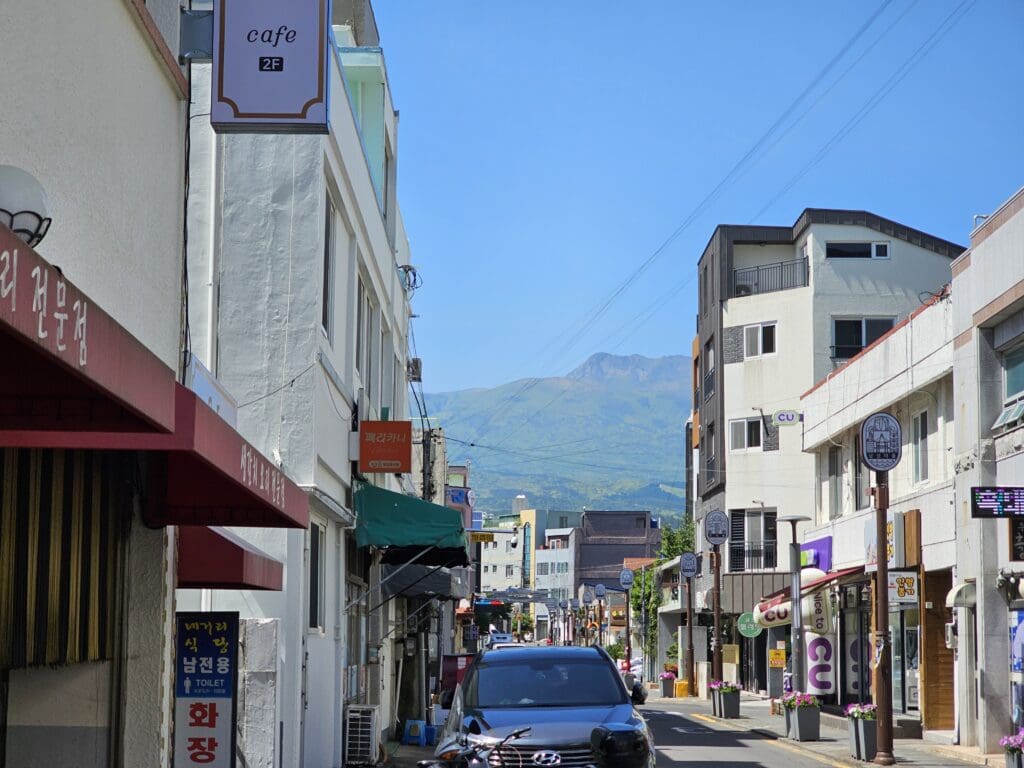
After this delicious lunch, we headed along the coastline to The Cliff, a sort of beach bar institution that overlooks Jungmun Saekdal Beach. Whilst this is a famous nightlife spot amongst those visiting the island, being mid-afternoon and with driving to do, we opted for a couple of coffees, which we sipped as we relaxed and soaked up the afternoon sunshine.
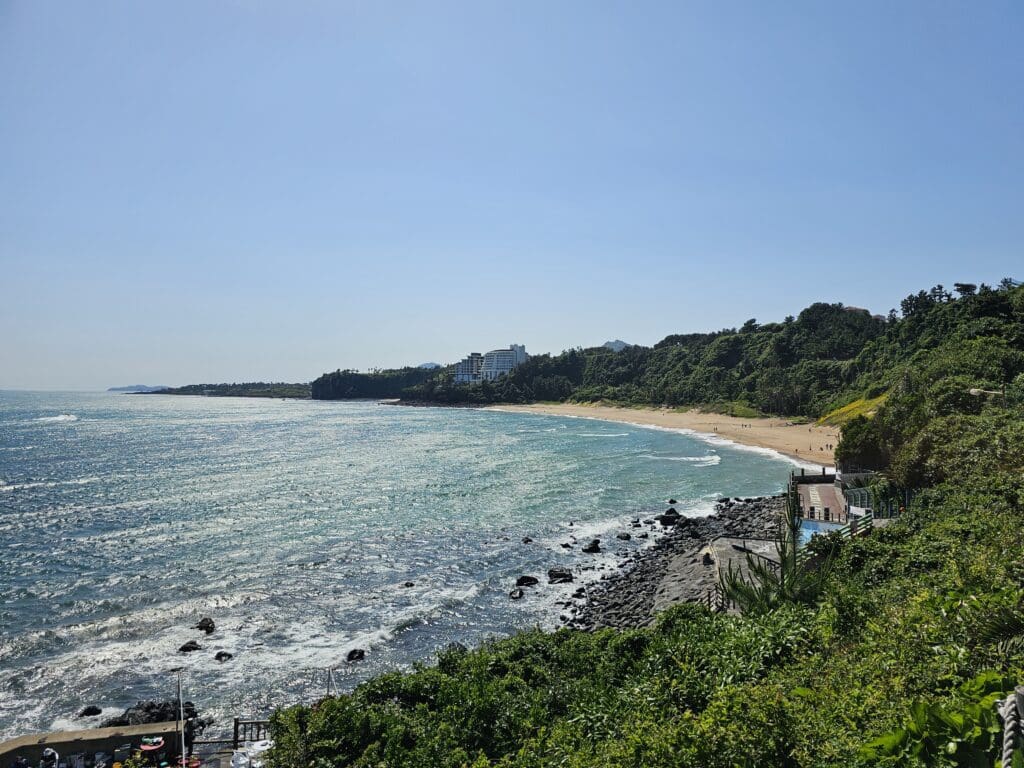
Once we had enjoyed our coffee, we decided to slowly wend our way back along the coast to Jeju City, with our last proper stop being at a seaside café in the shadow of Sanbang Mountain to grab another coffee and soak up the last of the Jeju sea air. Seeing as I had plenty of time before my flight to the mainland, we opted to take the scenic coastal route rather than the main road. This took us through some rather nice little villages dotted along the coastline, as well as some agricultural zones well off the typical Jeju tourist trail, before arriving back at Jeju Airport just after sunset, thereby ending my Jeju adventure. Once again, I enjoyed a fantastic and peaceful trip to Jeju, and I most certainly will be back again at some point!
